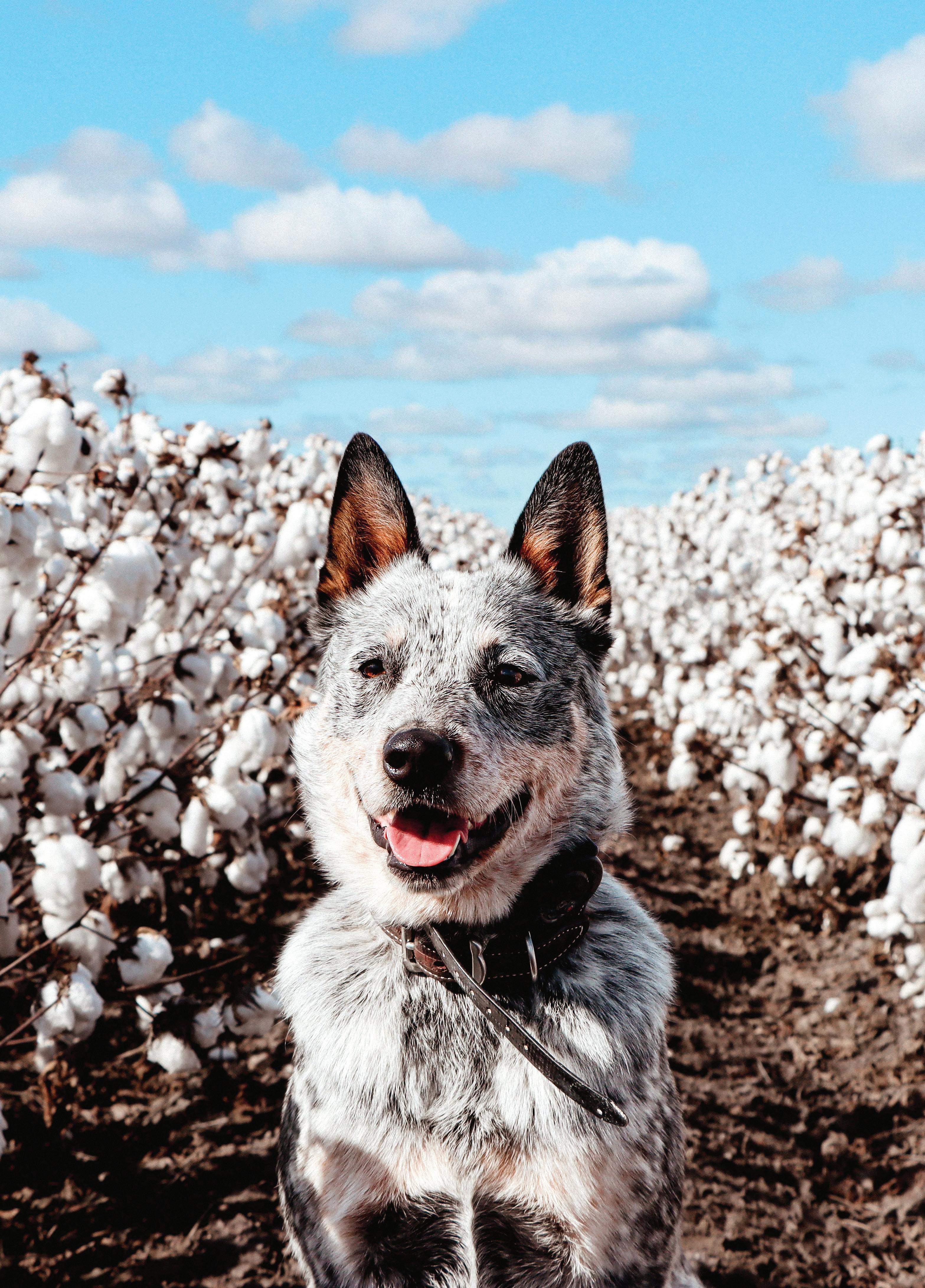





SEASONS FARMING NEWS FOR AUSTRALIAN FARMERS
2022 NEW 2,4 - D TECHNOLOGY HOW THESE INNOVATIONS CAN BENEFIT YOU Page 30 DIGGING UP GOLD SHARON ELPHINSTONE SHARES HER CAREER JOURNEY WITH THE ELDERS POTATO TEAM ELDERS 2023 CALENDAR
SUMMER
CROP HEALTH
CROP PROTECTION
Barley weed control set to follow strong gains in wheat 4
Novel Colex-D technology changes the face of 2,4-D 7
Innovative fungicide brings new light to vegetable growers 8

Low drift, low odour, fast brownout: DROPZONE is the future of 2,4-D herbicides 11
Parachute® and Exirel® – a perfect match? 12
How the weather will affect slug and snail populations in 2023: don’t wait to bait! 15
BIOPEST™ for use in combination with and/or as a stand-alone fungicide or insecticide 16



A ‘mini-rotation’ to turn the tables on resistance 19
Spotlight Plus® saves time and money for Griffith viticulturalist 20
Crown rot management benefits from joint research 22
Setting up for success: Elders visits the Titan Ag Foliar Fungicide Trail Sites 24
New herbicide option to control Caltrop in sorghum 27
Forage brassica growers set to benefit from new insecticide option 48
Find Us Online Seasons is brought to you by Elders /EldersLimited @EldersLimited @Elders_Limited @EldersRuralServices /EldersLimited elders.com.au eldersrural.com.au eldersrealestate.com.au eldersinsurance.com.au eldersfinance.com.au page 63
journey takes Sharon to national role 26 Elders 2023 Calendar Competition 30 Opportunities aplenty for innovative wool growers 40
hangs up boots 63 NEWS
canola pod strength and its impact on yield 50
Career
Industry stalwart Malcolm Hunt
Measuring
Plus provides the optimal
of iodine to the crop 61
Ultrasol®ine K
amount
available
effective
Stoller Solutions are plant
&
from day one 67
2 eldersrural.com.au
New Agbot affordable tank monitor available from Elders 39
Maximising use of Electronic ID to drive data-based decisions 45
FENCING
Waratah exclusion fencing to improve biosecurity and grazing yields 29
Cyclone N-Sure Exclusion Gates 64
SEED
Wet conditions - what to do when you need feed 57
Annual legume revolution 58
FERTILISER
Fertiliser with flexibility 53
PEST CONTROL
The most attractive solution for rat control in macadamias 36
REAL ESTATE
Rural property prices buck the trend of the wider property sector 31
ANIMAL HEALTH
New regional resistance data helps producers select the right sheep drench 32

This season test - don’t guess! 35 Buffalo fly costing the Australian beef industry 46
How you can minimise the risk of acidosis in feedlot lambs 54
Seasons Summer 2022 cover image is the winning cover photo for the Elders 2023 calendar. Image credit: ‘Bandit’ – Aimy Butt, Rowena, NSW
It’s been a tumultuous start to harvest season across many parts of the country with extreme weather conditions impacting the ability for growers to reap. Flooding has affected portions of eastern Australia, impacting both broadacre and horticulture crops and challenging growers. This extra moisture has implications for crop health and a keen eye on pests and diseases is crucial. As well as working directly with your Elders agronomist, in this edition of Seasons you can find new products and current advice to support you in managing relevant problems, from crown rot to slugs.
Elders released its 2022 full-year financial results recently delivering Underlying EBIT of $232.1 million, up 39pc from FY21 and declaring a final dividend of 28 cents per share (30 per cent franked). Our performance reflects the strength of the agriculture sector which has continued to grow in

productivity despite some seasonal challenges. Elders continues to service producers to get the most out of their operations – whether having a good or challenging season.
We will maintain a focus on strengthening all core product areas and growing our presence across the country to ensure we can best service agricultural communities, now and into the future.
As always, for more information about the products featured in this magazine, we recommend contacting your local Elders branch.
Regards, Mark Allison

Contents
SUMMER 2022 CEO Foreword
page 43
AG TECH
3
BARLEY WEED CONTROL SET TO FOLLOW STRONG GAINS IN WHEAT
Growers experiencing excellent grass and broadleaf weed control from early post-emergent (EPE) applications of the recently released herbicide, Mateno® Complete, in wheat this season can also look forward to seeing similar in their barley crops from next year.
The EPE use pattern in barley was recently approved by the Australian Pesticides and Veterinary Medicines Authority (APVMA), adding to the existing registrations for Mateno Complete, including incorporated by sowing (IBS) in barley and wheat and the wheat EPE registration, while a host of new weed control claims also were added to the label in both crops.
The introduction of Mateno Complete IBS and EPE in wheat (not durum wheat) and IBS only in barley this season has attracted significant attention, with the Bayer product providing a new herbicide mode of action to the Australian cropping industry, aclonifen (Group 32), in a complementary co-formulation with pyroxasulfone (Group 15) and diflufenican (Group 12) herbicides.
National trials over several years have shown Mateno Complete, which also can be used with disc seeding systems in wheat, provides better weed control and grain yields than existing benchmark herbicides.
IBS application of Mateno Complete in wheat was originally registered for control of annual ryegrass, barley grass, annual phalaris, silver grass and toad rush and suppression of wild oats, great brome and capeweed. The original barley IBS registration included the label claims for annual ryegrass, barley grass, silver grass and toad rush. EPE use in wheat was initially registered for control of small silver grass, toad rush, wild radish, capeweed and prickly lettuce and suppression of annual
ryegrass, barley grass and doublegee/ spiny emex.
New label registrations for the IBS use pattern include control of stonecrop as well as suppression of Indian hedge mustard, denseflower fumitory and deadnettle in wheat, as well as suppression of Indian hedge mustard and stonecrop in barley, while the registration for EPE application in wheat has been extended to include Indian hedge mustard, volunteer canola, deadnettle, denseflower fumitory, mouse-ear chickweed, stonecrop, lesser loosestrife, wireweed and common sowthistle.
The new EPE registration in barley provides for control of annual ryegrass (following an effective pre-sowing herbicide), silver grass, toad rush, Indian hedge mustard, prickly lettuce, mouse-ear chickweed and stonecrop and suppression of volunteer canola, lesser loosestrife and wireweed.
The new weed control claims on the Mateno Complete herbicide label
increase the total number of weeds listed to 20, while the total number of weed claims across the four use patterns now rises to 51.
Tim Wilkie, Marketing Lead –Broadacre with Bayer Crop Science, said weed control options in barley traditionally had been limited and, hence, the new powerful, triple mode of action herbicide would be a “gamechanger’’ for growers.
“Problem weeds have typically presented significant challenges in the barley phase of crop rotations,’’ Tim said.

“With the added flexibility to apply Mateno Complete in barley at the EPE timing from next season, this will critically provide control of weeds in the furrow and on the furrow shoulder that may have escaped pre-emergent herbicides. This has been a clear benefit for growers with the EPE applications in wheat this year.
“The EPE application in barley will also provide high level control or suppression of broadleaf weeds and will extend the window of activity to control later germinating annual ryegrass – another major benefit that we have seen in wheat this season.’’
He said there would be some key considerations for growers with the EPE timing in barley, however, including not applying Mateno Complete when barley has been sown with disc seeders or where sowing has left an open seed slot, as well as when crops may be under stress due to a range of environmental and/or agronomic factors.
Growers seeking further information on the EPE application of Mateno Complete in barley can contact their local sales agent or Bayer Crop Science Territory Business Manager.
4 eldersrural.com.au Crop Protection
Shannon Meyer, Agronomist with Elders at Coorow in Western Australia, and Marchagee grower Wade Parker inspect the excellent annual ryegrass control across the entire soil surface in barley provided by an early postemergent application of the recently released herbicide, Mateno Complete, in a large-scale demonstration trial on the Parker’s Gunyidi property.
Use in wheat and barley (IBS - Incorporated By Sowing or EPE – Early Post-Emergence)

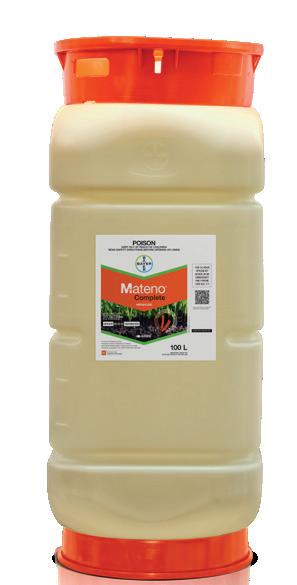
EPE application allows weed control in-furrow, on furrow shoulder, and in the inter-row
Combines 3 powerful active ingredients, including aclonifen, a NEW mode of action for Australia (Group 32)
Industry-leading residual control of specific weeds
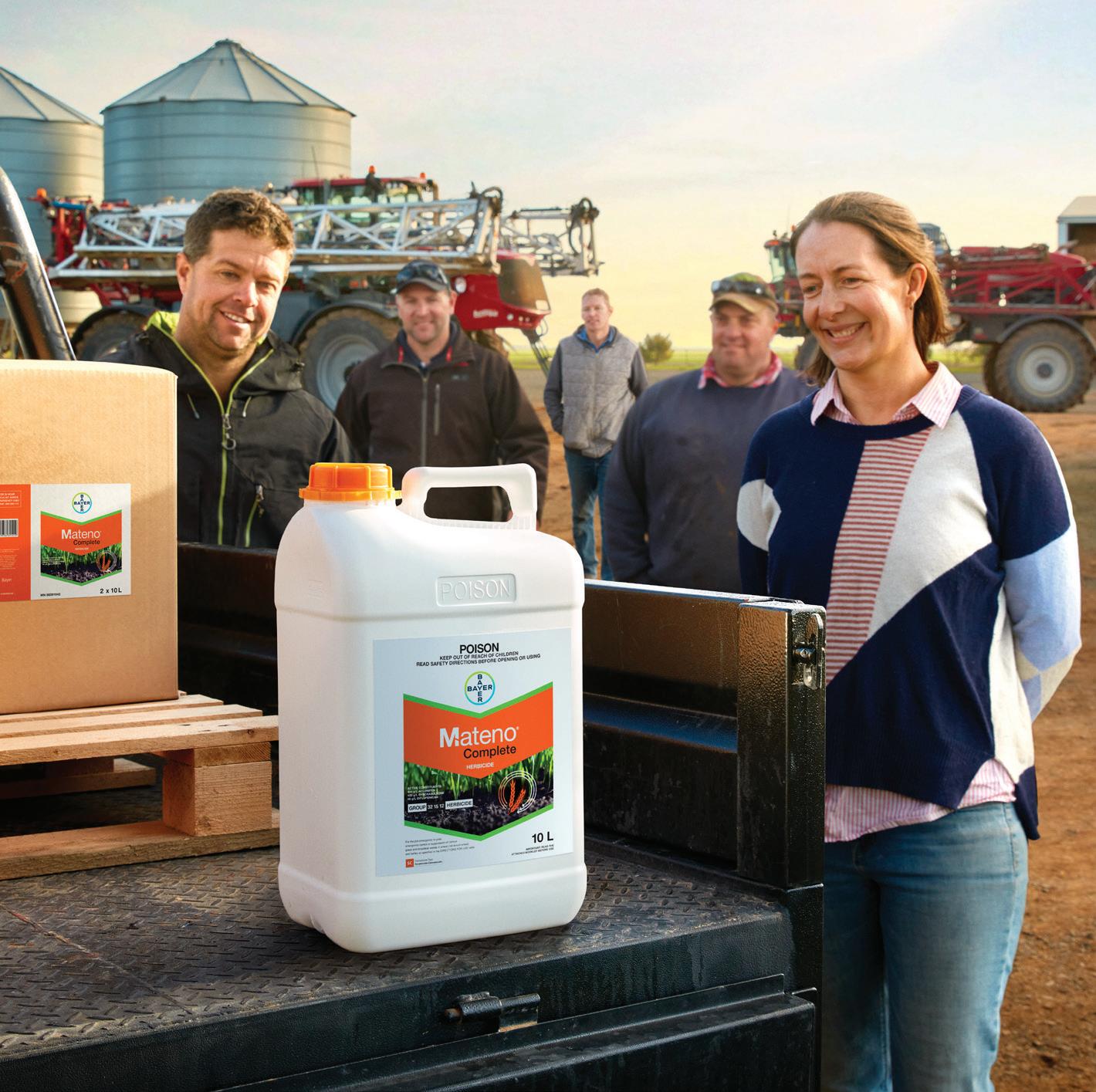
TO CONTROL A BROAD SPECTRUM OF GRASS AND BROADLEAF WEEDS HAS ARRIVED
Mateno® is a Registered Trademark of the Bayer Group. © 2022 Bayer Group. Bayer CropScience Pty Ltd ABN 87 000 226 022. Level 1, 8 Redfern Road, Hawthorn East, Vic 3123. Technical enquiries: 1800 804 479 enquiries.australia@bayer.com AVAILABLE IN 10 L & 100 L PACKS FOR MORE INFORMATION visit matenocomplete.com.au or speak to your local reseller or agronomist THE COMPLETE PACKAGE NOW REGISTERED EARLY POST-EMERGENCE IN BARLEY
The 2,4-D you can apply with confidence
Colex-D® is a next generation, patented 2,4-D technology that offers the robust weed control of traditional products with the added benefit of field proven Drift Reduction Technology (DRT), near-zero volatility, and ultra-low odour.
Colex-D® allows you to effectively maintain your fallow program and reduce the risk of off target damage to surrounding sensitive crops.
By using Colex-D®, you can be confident that you are doing the right thing by your farm, your neighbour and your community.

To find out more, contact your Territory Sales Manager on 1800 700 096 or visit corteva.com.au
Visit us at corteva.com.au ®,TM Trademarks of Corteva Agriscience and their affiliated companies ©2022 Corteva Agriscience. All rights reserved. October 2022. FR10062.
NOVEL COLEX-D TECHNOLOGY CHANGES THE FACE OF 2,4-D
Corteva Agriscience has long recognised the benefits and strengths of 2,4-D as a herbicide. With its robust broad-spectrum activity on some of the most important hard to kill weeds, it is well justified as a vital tool for fallow management. However, for many farmers, the use of current 2,4D products is becoming increasingly difficult to maintain due to the proximity of 2,4-D sensitive crops and restricted use areas.
Colex-D® is a next generation, patented technology developed by Corteva with the drift management refined through a collaboration between Corteva and several North American Universities dating back to 2007. Colex-D is a novel form of 2,4-D which offers all the performance and efficacy of traditional 2,4-D products, but has field proven Drift Reduction Technology (DRT), nearzero volatility and ultralow odour built in.
Guy Sands, Colex-D Product Manager said “Colex-D is an ideal option in Australia because it allows farmers to take advantage of the robust weed control 2,4-D is known for, while significantly reducing off-target movement that has been a problem with older 2,4-D formulations.”

“The proprietary drift reduction technology in the Colex-D formulation is designed to eliminate droplets at the finer end of the spectrum, and generate more optimally-sized droplets. This maximises product performance and minimises the risk of off-target movement” Mr Sands says. “When Colex-D is applied according to the label, it offers an improved droplet spectrum which ensures the herbicide reaches the target weed."
Colex-D and many common tank mix partners have undergone extensive wind tunnel testing to establish performance standards using a range of nozzle combinations common in Australia. He
says “it is important to test the droplet spectrum when mixed with tank mix partners as these combinations alter the range of droplet size, sometimes not for the better. In some cases, mix partners did not pass our rigorous testing and will not be supported on the label”.
The Colex-D label contains application advice for a wide range of different nozzle types and operating pressures to ensure the product advantages are maximised. Corteva has thoroughly tested the labelled mix partners to ensure physical compatibility and field efficacy in Australian conditions.
Mr Sands said “the challenges of volatility, where the compound moves from the treated area after application, have also been addressed with the unique Colex-D formulation.
While traditional 2,4-D amine formulations break apart in the spray tank resulting in more volatile components, the novel choline salt in Colex-D stays associated and is much more stable in the spray solution and on the sprayed surfaces following application”.
Corteva trials demonstrate that this
unique choline salt formulation reduces 2,4-D losses due to volatility by more than 86% when compared with the amine salt form. Testing has shown that 2,4-D amine can volatilise from a sprayed surface 12 hours after application. Applying Colex-D gives farmers greater confidence that the risk of off-target movement and potential damage is reduced after spraying.
Additionally, the patented formulation and refined manufacturing process of Colex-D has produced an ultra-low odour product making mixing, handling and application a more pleasant experience for the applicator and the community.
Mr Sands said “Colex-D is an exciting development for Australian agriculture and addresses many of the major concerns associated with traditional 2,4-D products.”
Colex-D is a novel Choline salt formulation of 2,4-D that allows farmers with proximity to 2,4-D sensitive crops, to access the robust weed control of 2,4-D with reduced risk of off-target damage. The built in Drift Reduction Technology, near-zero volatility and ultra-low odour means Colex-D is a 2,4D that can be applied with confidence.
7 Crop Protection NEW
INNOVATIVE FUNGICIDE BRINGS NEW LIGHT TO VEGETABLE GROWERS
Newly registered MIRAVIS® Duo fungicide is offering growers outstanding protection against key diseases in root and fruiting vegetables, cucurbits, celery and peanuts.
“MIRAVIS® Duo fungicide is an exciting new development in the MIRAVIS® brand family,” said Syngenta Technical Services Lead, Dr Brandy Rawnsley.
“Pydiflumetofen has been a game changer since MIRAVIS® fungicide was launched here in 2018, for control of powdery mildew in grapes and target spot (Alternaria) in potatoes.
MIRAVIS® Duo fungicide contains the same technology in a co-formulation to preventatively control key diseases across a broad range of vegetable crops and peanuts.”
MIRAVIS® Duo fungicide combines pydiflumetofen (Group 7) with difenoconazole (Group 3), to provide best-in-class preventative disease control, while mitigating the risk of fungicide resistance.
“Upon application, MIRAVIS® Duo fungicide is locked in the leaves, building up a reservoir to stop fungal pathogens entering the plant. Preventative use prior to infection achieves optimal protection of your crop, especially when wet, humid conditions prevail”, said Dr Rawnsley.
In fruiting vegetables, such as tomatoes, MIRAVIS® Duo fungicide targets powdery mildew, target spot and Cercospora leaf spot in both open
field and protected cropping situations.
OUTSTANDING TRIAL RESULTS
“Trials have been outstanding, with no to very little disease observed on treated plants,” said Dr Rawnsley.
A recent trial held in partnership with Kagome, Australia’s largest processor of tomatoes, highlighted two applications of MIRAVIS® Duo fungicide provided exceptional preventative disease control in the season (Figure 1 and 2). Additionally, the crop was more vigorous as seen in Photo 1 and 2.
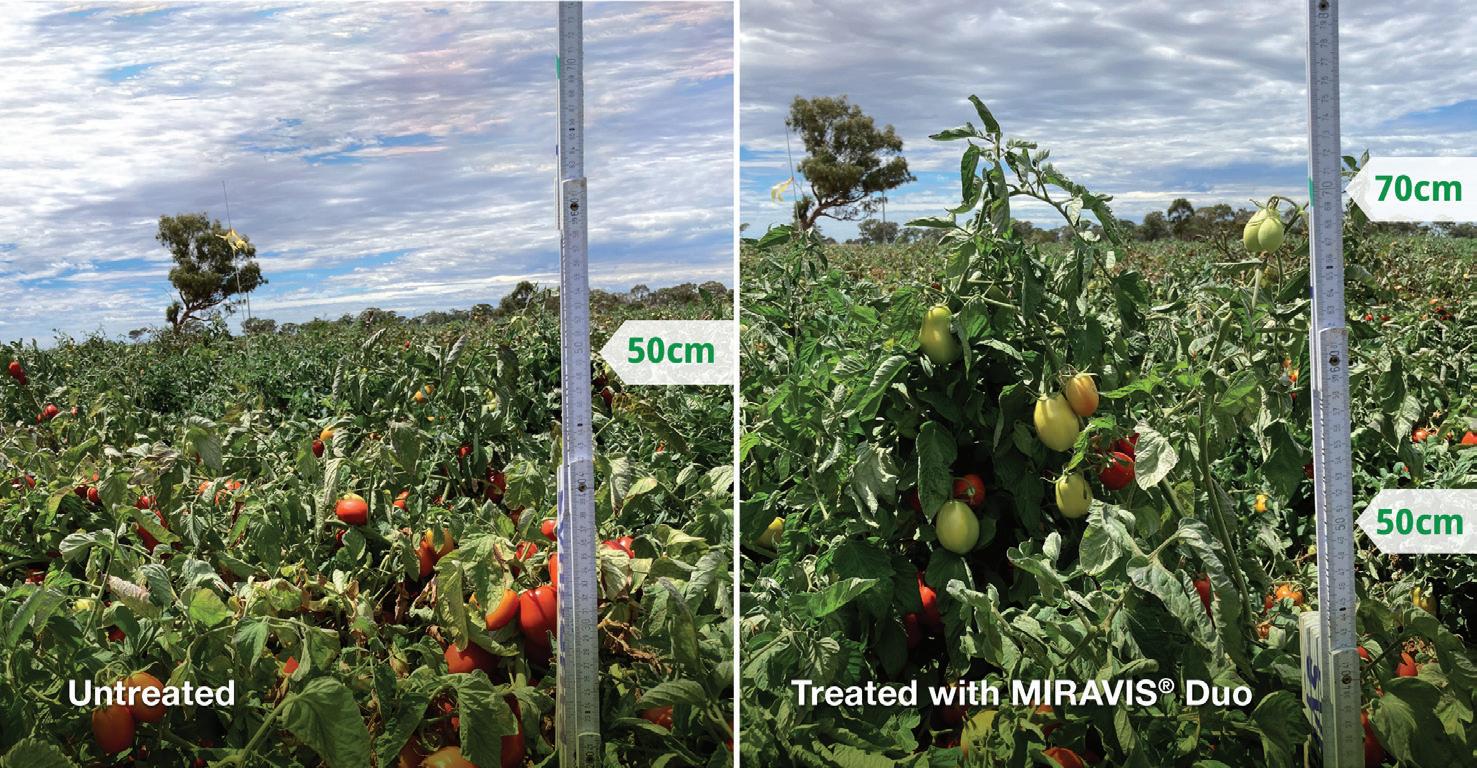
For cucurbit growers, Dr Rawnsley said MIRAVIS® Duo fungicide would become the gold standard in fungicide programs, when used preventatively. At the Syngenta GrowMore demonstration site held in Bowen, Qld in 2021, MIRAVIS® Duo fungicide was used in rotation with ORONDIS® Flexi fungicide (downy mildew, powdery mildew and gummy stem blight protection in cucurbits) as part of a program that was subjected to very high disease pressure.
While strong on powdery mildew, Dr Rawnsley said MIRAVIS® Duo fungicide had a broad label for disease protection. “MIRAVIS® Duo fungicide is a great option for cucurbit crops as it not only protects against powdery mildew, but also gummy stem blight, Alternaria and Cercospora leaf spot,” she said.
“I gave agronomists a task to find disease symptoms in the treated crop at Bowen, but they were amazed to find
no disease when it was so severe in the untreated area.
“The one-day withholding period means growers can use it with confidence without affecting decisions of best harvest time,” she added.
With excellent crop safety and efficacy in cucurbits and fruiting vegetables MIRAVIS® Duo fungicide offers flexibility for growers in northern and southern horticultural regions.
ENHANCED GREEN LEAF AREA
In root vegetables (e.g. carrots, beetroot), MIRAVIS® Duo fungicide provides protection of early blight (Alternaria spp.) and powdery mildew. Both foliar diseases can cause weak, dry leaves resulting in un-harvestable crops.
“Applications of MIRAVIS® Duo fungicide have been shown to enhance green leaf area and vigour, meaning good growth for tuber and root development. Applications should be implemented just prior to row closure to protect the canopy, then again at root bulking meaning the 7-day withholding period in root vegetables is favourable,” Dr Rawnsley said.
With limited fungicide options available in celery, MIRAVIS® Duo fungicide will also be a welcome registration by growers to control Septoria and Cercospora leaf spots.
“MIRAVIS® Duo fungicide, where used preventatively before a rain event, gives lasting protection when it matters most,” Dr Rawnsley said.
“In peanuts, MIRAVIS® Duo fungicide will provide up to 28 days protection against early leaf spot, late leaf spot, net blotch as well as suppression of rust. The long spray re-application interval of 21-28 days will be a gamechanger for peanut producers, with efficiencies of time, labour, resources, and crop health.”
To help minimize the development of resistance and provide lasting protection for future generations, MIRAVIS® Duo fungicide is restricted to two applications per crop per year.
8 eldersrural.com.au Crop Protection NEW
Photo 1 and 2. MIRAVIS® Duo fungicide treated processing tomato crop (right) compared to the untreated (left).
A brighter future. MIRAVIS® Duo.

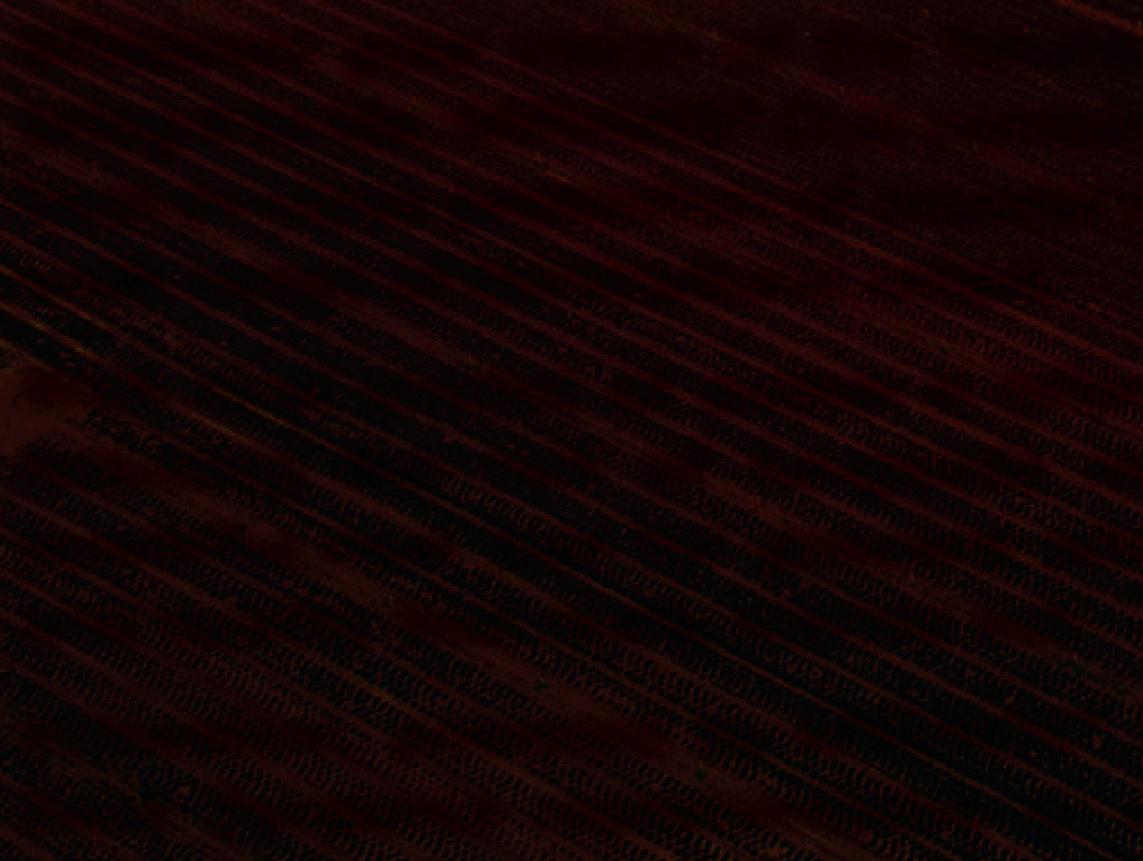


Whatever your vision of the future, MIRAVIS ® Duo fungicide can help bring it to life. MIRAVIS ® Duo combines two active ingredients to provide best-in-class protection of powdery mildew and leaf spot diseases in a wide range of horticultural crops.


With dual modes of action it offers robust residual protection while reducing the risk of fungicide resistance. MIRAVIS ® Duo offers a powerful new tool for growers who want peace of mind, high yields and quality that really stands out.
Innovation, powered by MIRAVIS ®. For further information talk to your local Syngenta representative or visit syngenta.com.au/miravis-duo
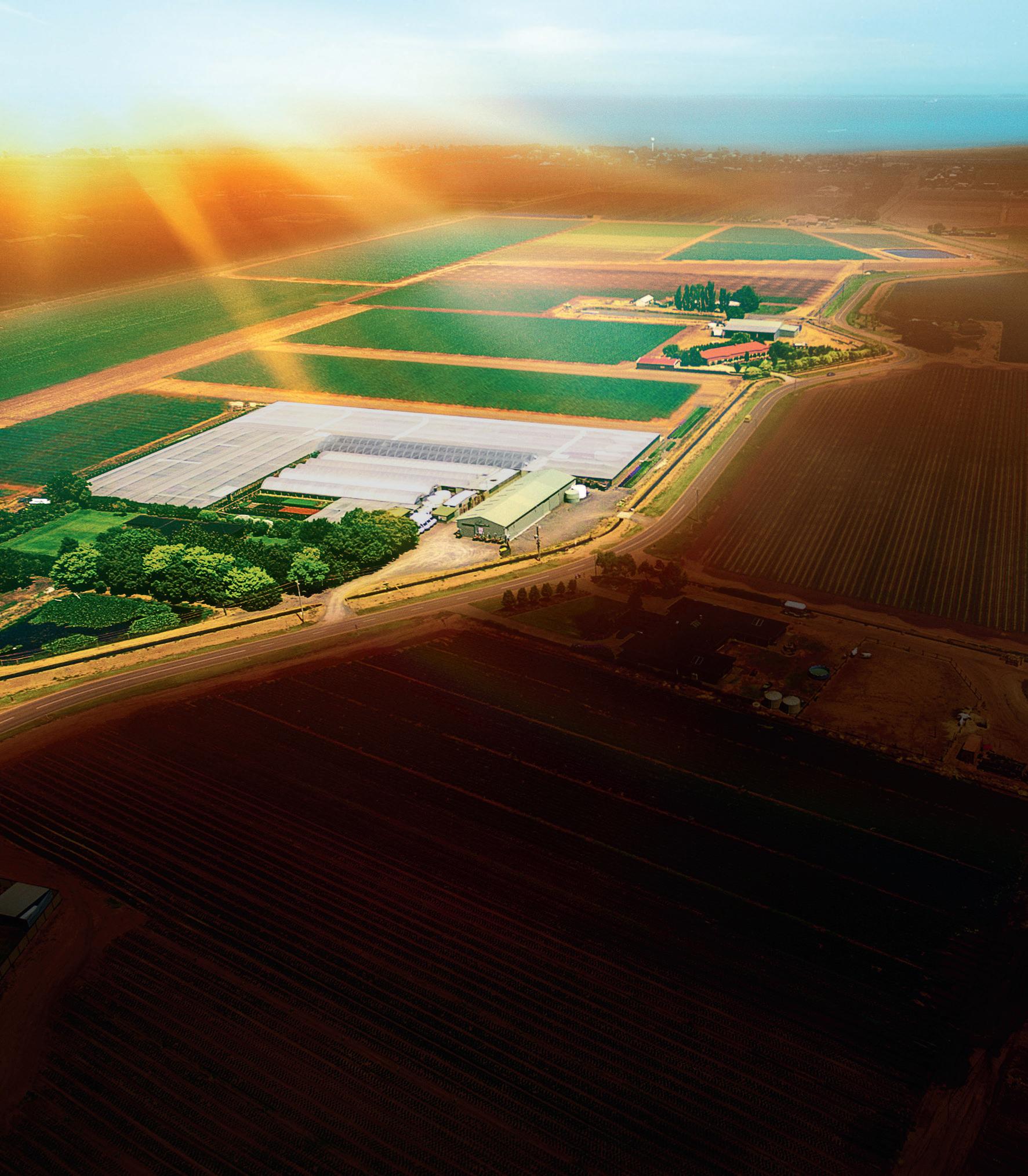
® Registered trademark of a Syngenta Group Company. © 2022 Syngenta. AD22-412
IS YOUR CROP PROTECTED? SCAN HERE
ALL-NEW 2,4-D INNOVATION, FOR THE NEXT GENERATION.
Developed
With a more uniform and effective spray pattern, Nufarm DROPZONE ensures more of the total spray volume is delivered in the optimal size range (150 to 720 μm), by not only reducing drift, but also reducing oversized droplets that can lead to poor weed control.
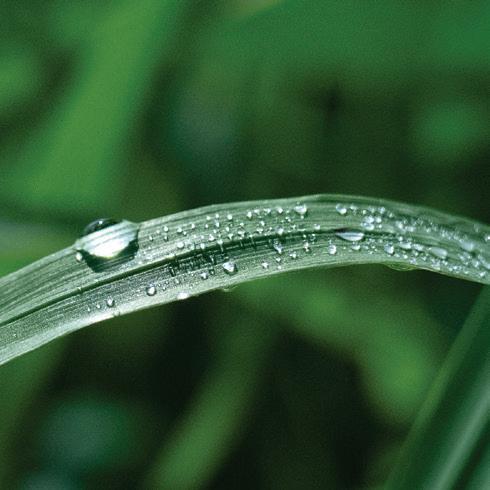
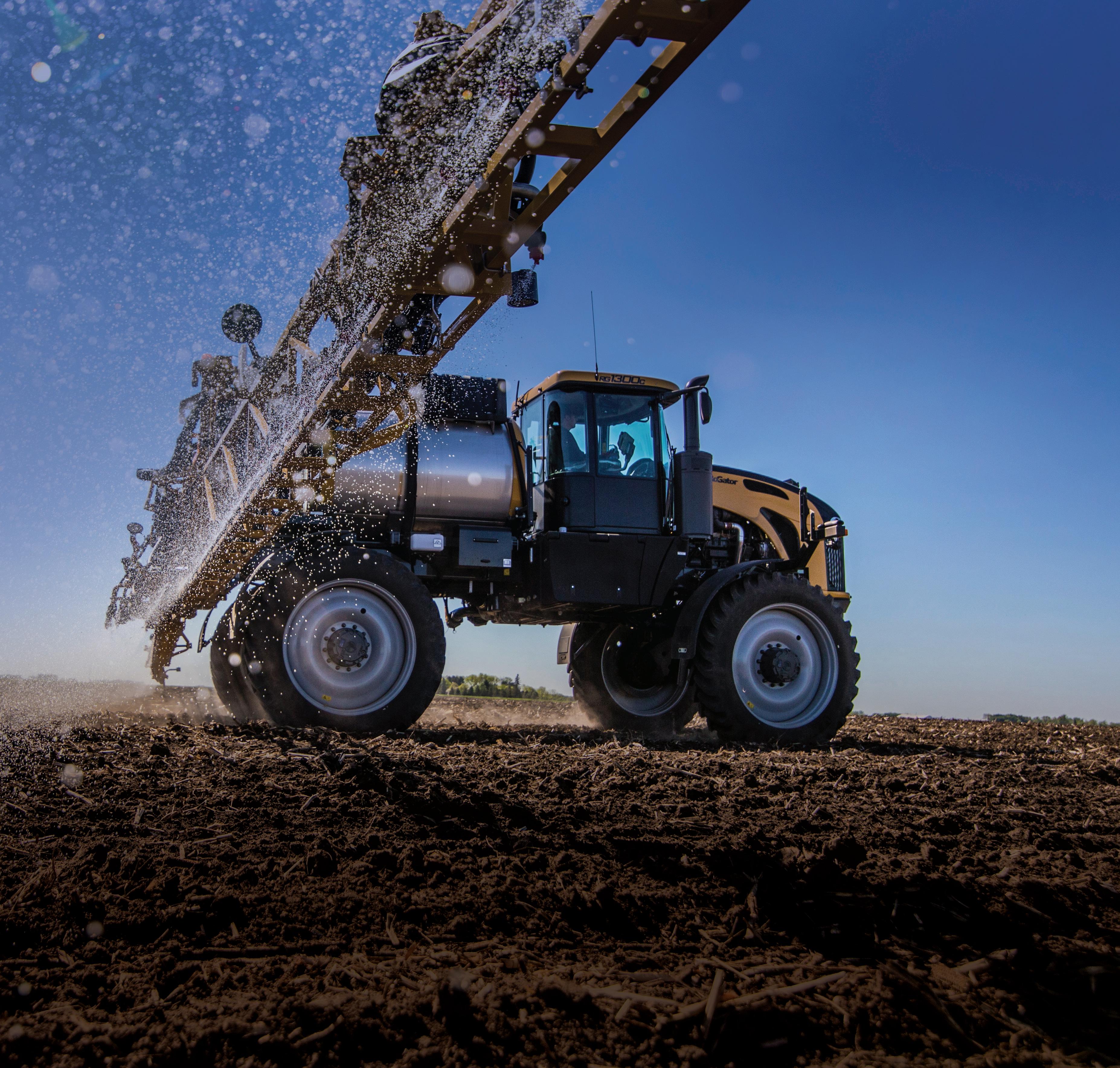
Nufarm DROPZONE’s unique 2,4-D amine formulation technology is a low odour and non-volatile solution that provides less impact to users and the community. Spray in your target zone, with Nufarm DROPZONE.
Talk to your local reseller or visit: nufarm.com.au/DROPZONE for more information.

in Australia, Nufarm DROPZONE offers growers never-before-seen technology, delivering increased weed control through droplet optimisation.
LOW DRIFT, LOW ODOUR, FAST BROWNOUT: DROPZONE IS THE FUTURE OF 2,4-D HERBICIDES
Nufarm continues to lead the world in 2,4-D technology with the launch of Nufarm DROPZONE. The result of 10 years of research and development, DROPZONE is a faster, more efficacious 2,4-D amine with a world-first innovative formulation.
It’s an exciting step forward from other 2,4-D products on the market, according to Will Porter, Nufarm’s Product Manager.
“We know that 2,4-D is really important for farmers in Australia, and we’ve developed something that’s not only faster and more effective on weeds, but also minimises the potential for drift, while having low odour,” says Mr Porter.
“DROPZONE builds on Nufarm’s leadership in 2,4-D formulation and stewardship for Australian growers.
DROPZONE is the next 2,4-D amine formulation post-Amicide Advance 700, which has really become the benchmark in 2,4-D for Australian growers.
DROPZONE offers Australian growers an exciting new 2,4-D technology that ensures the maximum number of effective droplets reach the target weed.”
REDUCED BUFFER ZONES THANKS TO DROPLET OPTIMISATION TECHNOLOGY

The key factor in DROPZONE’s performance is Nufarm’s unique droplet optimisation formulation.
Most growers are pretty familiar with challenges of spray drift, says Mr Porter. “When you’re spraying, droplets less than 150 microns are ineffective and have an increased potential to drift. The most common solution up to now has been to use a larger spray quality – like very coarse or ultra coarse - or drift reducing adjuvants (DRA), which both increase droplet size. Apart from adding complexity to the job, oversized
droplets mean less effective coverage and increased droplet bounce, so by reducing the drift, you’re sacrificing efficacy. It’s a trade-off that can be quite frustrating.”
DROPZONE eliminates that trade-off with an innovative formulation that delivers a higher percentage of droplets of the optimal size. The end result for growers is a product that’s simpler to use, offers improved weed control and has reduced buffer zones, without the need to adjust the spray quality or add DRA.
“What the new technology means is that we’re getting more of the spray volume at the ideal size – between 150 and 720 microns – so you’re getting excellent coverage and efficacy, while reducing the potential for drift. With DROPZONE, we’re actually getting up to 96% of spray volume in that ideal zone. There’s no more compromise - that’s what makes it a real game changer,” says Mr Porter.
SIMPLER, FASTER AND MORE EFFECTIVE ON BROADLEAF WEEDS
Field testing has placed DROPZONE at the front of the market for speed and efficacy. Nufarm compared activity against other amine 2,4-D formulations and DROPZONE delivered faster brownout and had up to 10% improved efficacy, even on problem weeds like sow thistle.
“We had excellent results and feedback across the board,” says Nufarm Field Development Officer Mitch Allen.
“Field testing showed superior speed of control and final efficacy compared to existing 2,4-D amine products on the market. We’ve also found that these benefits carry over into tank mixes of other products typically used in fallow applications, like CRUCIAL. It’s highly
compatible and very simple to use.”
LOW ODOUR FORMULATION
Minimising the odour of 2,4-D products was another focus of the DROPZONE formulation. “Everyone knows the odour. It’s not a nice smell and it can be quite unpleasant for both users and the people in the surrounding area, especially if you’re spraying near sensitive or residential areas. Our chemists invested a lot of time and research into reducing the odour to help get rid of that nuisance factor,” says Mr Allen.
DEVELOPED IN AUSTRALIA FOR AUSTRALIAN GROWERS
Nufarm has invested significant resources and over 10 years into developing DROPZONE, which is another demonstration of its continued 2,4-D stewardship for Australian agriculture and commitment to Australian growers.
“Nufarm have a long history of local 2,4-D innovation, with our dedicated formulation chemists Simon Harbottle and Adrian Craddock developing exciting solutions such as Amicide Advance 700 and now DROPZONE,” says Mr Porter.
“Because we’re Australian through and through, we always look for ways to support local agriculture through our investment in Australian research, development and manufacturing. That’s why we’ve designed, developed and tested DROPZONE right here in Australia, for Australian conditions,” he said.
“We’re very proud of what we’ve achieved with DROPZONE. It’s an innovative 2,4-D product we’ve worked hard to develop, with world-first formulation technology – and most importantly, it’s delivering great value to growers.”
NEW 11 Crop Protection
PARACHUTE® AND EXIREL® – A PERFECT MATCH?
FMC’s latest paraffinic oil for cotton, Parachute®, is the perfect match for Exirel®, the relaunched insecticide for cotton.
Exirel® is registered in cotton against silverleaf whitefly (SLW), cotton aphid (suppression) and Helicoverpa spp. It has some contact and systemic activity, but its main action is translaminar.
Exirel® is selective to key beneficial insects which play a vital role in integrated pest management (IPM).
Parachute®, an nC27 paraffinic spray oil with hyper spreading capabilities, has registered label claims for use in cotton that almost entirely overlap those of Exirel® - against silverleaf whitefly, cotton aphids, Helicoverpa spp. and green mirids.
The hyper spreading and intimate cuticle contact promoted by Parachute® provide ideal assistance
for translaminar activity.

And, as a paraffinic oil, Parachute® is also very IPM compliant.
ROTATION THE KEY TO RESISTANCE
With levels of resistance to silverleaf whitefly being detected to pyriproxyfen and spirotetramat in Australia, rotation of insecticide options is always needed.

But pleasingly, as an insecticide with a physical mode-of action, the likelihood of a pest developing resistance to Parachute® is extremely low.
A SLW strategy using Exirel® and Parachute® might involve early season applications of Parachute®, when other chemical applications are being made, to dampen population growth dynamics.
Good target coverage is a key requirement for effective paraffinic oil performance. Parachute®’s advanced
formulation provides the nC27 paraffinic oil with the ability to spread over foliage rapidly, extensively, and evenly. Following that spreading, investigations have shown that Parachute® oil settles rapidly into the cuticle of the leaf.
Later in the season, when plants are larger, and if the SLW population reaches more threatening levels, Exirel® can be included in the mix with Parachute®. Simultaneous suppression of Aphids and control of Helicoverpa spp present will occur.
All of which make Exirel® and Parachute® ideal tank mix partners. They control or suppress the same pests, they are IPM conforming, they break reliance on long established chemistries, and Parachute® can act as spreading adjuvant and in-tank resistance management for Exirel®.
For more information visit your local Elders branch.
Thomas
Elder Consulting Your made-to-measure, farm management experts Built by Elders - Australia’s leading agribusinessThomas Elder Consulting (TEC) is an independent, specialist agricultural consulting business offering customised, whole farm management advice. Strategically located across Australia, our team of highly specialised TEC consultants provide a premium, all-encompassing consultancy model comprising expertise across all sectors of agriculture including: • Agronomic solutions • Farm business management • Production and farm planning • Livestock production • Carbon farming • Benchmarking • Precision agriculture • Water scheduling • Decision agriculture • Genomics Our TEC consultants enhance our clients’ returns and sustainable productivity through the provision of cuttingedge, data-driven advice tailored to drive the desired results for our farming clients.
12 eldersrural.com.au Crop Protection
www.thomaselderconsulting.com.au
An


FMC Australasia Pty Ltd Phone: 1800 066 355 www.fmccrop.com.au ALWAYS READ AND FOLLOW LABEL DIRECTIONS. Copyright © 2021. All rights reserved. The FMC Logo and Parachute ® are Trademarks or Registered trademarks of FMC Corporation or its affiliates. INSE CTICIDE Parachute®
Essential Partner for IPM and Weed Control Parachute® takes the science of paraffinic oil formulation to new heights. With an unrivaled combination of paraffinic loading, molecular weight efficacy and hyper-spreading of hydro-carbons, Parachute ® works in partnership with beneficial insects to suppress chewing and sucking pests of Cotton and other broadacre crops, whilst also getting the most out of defoliants at the end of the season. Visit www.fmccrop.com.au for more information.












Innovation. Quality. Solutions. ®Metarex Inov and Colzactive are registered trademarks of De Sangosse SA. 220428 Maximum Attractiveness Enhanced Palatability Faster Efficient Kill Persistent Control SLUGS & SNAILS LOVE IT TO METAREX INOV All Weather Slug & Snail Bait is developed from science & nature to provide superior control based on unique technology for enhanced delivery.
HOW THE WEATHER WILL AFFECT SLUG AND SNAIL POPULATIONS IN 2023: DON’T WAIT TO BAIT!
Crop establishment, particularly of canola, is critical to maximise yield potential. Diligent planning to protect seeds and seedlings from slugs and snails should be top of mind heading into 2023.
Based on above-average rainfall across most cropping regions of Australia in 2021, projections indicated that black keeled slugs were going to be a major threat to establishing crops in 2022 (“When do I need to bait for snails and slugs?” Rural Business, March 2022).
As 2022 progressed, those model projections proved correct, with a resultant record tonnage of molluscicides applied. Industry was surprised by slugs damaging crops in new areas: for example, regions north of Dubbo, the Riverina including Finley, and west of St Arnaud to Warracknabeal. These observations support previous modelling that projected black keeled slugs have a much larger area of suitable habitat across southern Australia than where they have occurred historically (Figure 1).
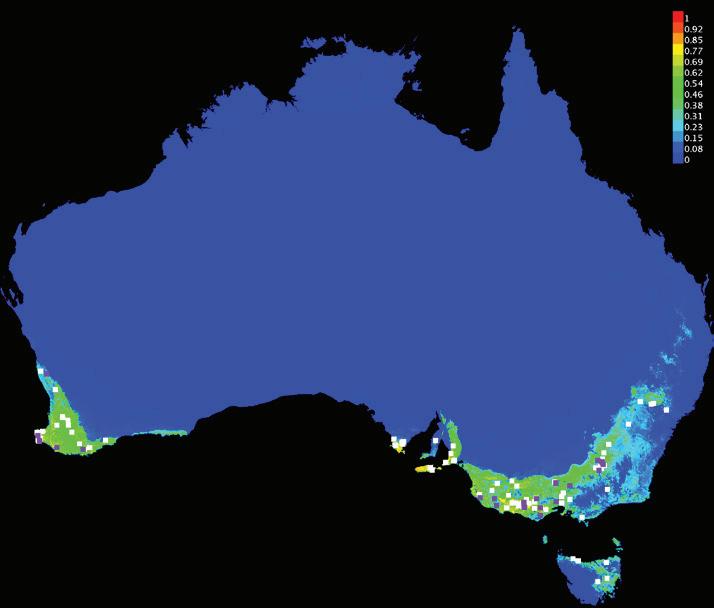
Slugs and snails can be moved by water; hence populations are expected to further expand into new areas impacted by spring 2022 floods. It is essential to be vigilant in the coming months to see how far slug and snail populations move.

Slugs can cause damage outside known hot spots within paddocks: for example, considerable damage occurred in

canola crops away from creek lines in 2022. The patchy distribution of black keeled slug populations has made management difficult.
Growers across northern Victoria and southern NSW reacting to slugs have found re-sowing canola seed with bait to areas eaten out by slugs was successful, however some yield losses are expected. One estimate of losses is $800–$1000/ha. This estimate was based on irrigated canola from northeast Victoria where slug control was poor due to bait being applied reactively, compared with proactively applying bait directly after sowing. Those observed losses were due to biomass prior to bolting being below 5 tonne/ha and seedling numbers less than 40/m2, values which have been determined as optimal for hyper yields.
Recent weather conditions linked to an extended La Niña would suggest slug and snail numbers are likely to be greater than ever in 2023; akin to 2011/12 leading into 2013. Spring 2022 observations of juvenile slugs feeding in wheat heads indicates these species are still breeding as of October 2022. Black keeled slug eggs were observed recently in southwest Victoria. Large numbers of small conical snails are also being observed in wheat heads that may contaminate grain at harvest.
By linking climate tools such as spring rainfall days, NVDI and soil moisture to spring paddock observations of slug and snail activity, each region can predict potential threats next sowing. For example, a wheat crop with a large green canopy starting to lodge in November, a full moisture profile and small grey field slugs feeding in the heads (Figure 2), will have a large
reservoir of slugs that will survive in the ground over summer ready to ravage next year’s crop. Even with a dry summer/autumn, that population will become active and feed on seedlings in late autumn, once soil moisture is about halfway between wilting point and field capacity (20–25% m3/m3). Note, grey field slugs continue to migrate from below the ground for 9–15 months, and for black keeled slugs, for up to 20 months. Hence, in the scenario provided, management will need to be precise, integrating baiting with cultural practices to ensure successful establishment of canola.
In high threat years, budgets for susceptible crops, like canola, need to include the cost of multiple applications of short-window baits (e.g. Snailex) or at least one application of a high-quality, long-window bait (e.g. Metarex Inov®) directly after sowing at maximum label rates. A second application may be required where a proportion of the black keeled slug population becomes active late May/early June.
Reactive management compounded by logistical constraints in 2021 and 2022 led to poor crop protection as slug and snail baits were applied too late. Black keeled slugs that became active in late autumn decimated canola in less than a week, resulting in major yield losses. Remember, slug and snail baits can be stored over the summer to ensure product is available when it needs to be applied. (https://grdc. com.au/resources-and-publications/ grdc-update-papers/tab-content/grdcupdate-papers/2022/07/slugs-whatcan-we-learn-from-2022}.
Understanding when individual species are active, mating and breeding underpins successful management of snails and slugs. Knowledge of pest population dynamics will avoid molluscicide supply shortfalls by allowing for proactive baiting next autumn of snails once they become active, before they start laying eggs, and of slugs directly after sowing to protect establishing crops.
Figure 2. Grey field slugs: a) adult in BASF Ascot® 10 Nov and b) juvenile in RGT Accroc 11 Nov 2022.
Areas suitable for black keeled slugs as determined using Maxent modelling based on historical data (squares) up to 2012. Blue is 0% probability of suitable habitat. Green represents a 50% probability of suitable
15 Crop Protection
Figure 1.
habitat.
BIOPEST™ FOR USE IN COMBINATION WITH AND/ OR AS A STAND-ALONE FUNGICIDE OR INSECTICIDE
DKSH, the parent company of SST Australia & SACOA are committed to the agriculture industry in Australia and New Zealand.
Both SST and SACOA have both been locally owned Australian companies for the last 30 years and bring together a wealth of knowledge and products made for the Australian farmer, under Australian conditions.
One such product is BIOPEST®. Biopest is a highly refined food grade iso-paraffinic oil designed for use in broadacre & horticultural crops to assist in the management of pests and diseases and can also be used as a carrier.
Independent trials conducted, indicated Biopest to be the most effective mineral spray oil (when used in conjunction with Integrated Pest and Disease Management programs) available in Australia. With an unmatched level of purity, Biopest represents the most advanced attempt yet to provide growers with an IPM product capable of controlling multiple, unrelated pests and fungal diseases simultaneously whilst remaining safe to growers, plants, and the environment.
Biopest has an unsulphonated residue (USR) of 99.8% which is the highest practical level achievable with current refining technology. USR measures
the absence of potentially damaging impurities called aromatics. The lower the USR % the higher the risk of plant damage. The impurities are generally a growers worst enemy when applying spray oils as impurities, when exposed to sunlight, oxidise and form acids on the leaf surface, and in certain conditions will burn the plant. Biopest provides a unique combination of functions as a carrier for chemical and biological pesticides.
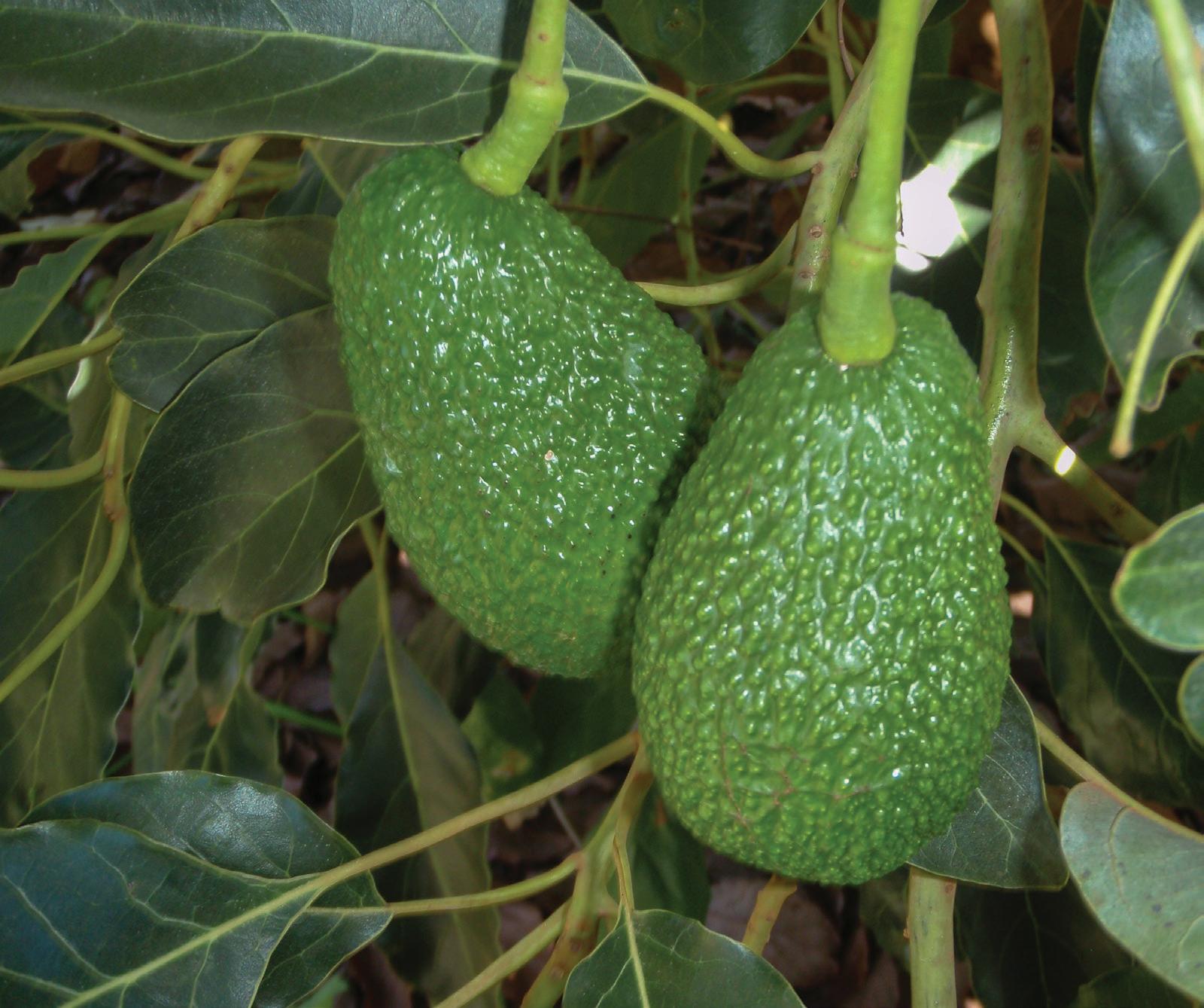
As a biorational pesticide, Biopest has three key uses in pest & disease management:
> Insecticide
> Fungicide
>
Plant Virus Management
As an insecticide, Biopest deters the feeding and egg laying of pest insects, it also blocks air intake (spiracles) & lines the breathing tubes (tracheae) through which insects & mites breathe. Biopest in some cases may also act as a toxin, interacting with the fatty acids of a pest & interfering with normal metabolism.
As a Fungicide, Biopest interferes with the attachment of the fungi to the plant, and it helps eradicate existing fungi by targeting and breaking down the fungi’s cell wall.
As a Plant Virus Management tool,
Biopest is useful in managing nonpersistent viruses transmitted by sucking pests such as aphids by interfering with their feeding behaviours and hence disrupting the virus transmitting process. As the viruses are generally transferred via the pest’s stylet it is prevented from inoculating healthy plants and transmitting the virus from diseased ones.
When applying Biopest always read the label thoroughly and ensure the correct concentration is selected and mixed and try to avoid where possible mixing multiple products together.
Do not mix Biopest with incompatible chemicals such as Sulphur.
Ideally aim to have the Biopest spray mixture dry on the targeted plant dry within 1-2 hours, the quicker the solution dries the better.
Avoid spraying Biopest in temperatures higher than 35 C or when shade temperature is expected to exceed 32 C. Depending on weather conditions and forecasts, the most suitable time to spray is in the early morning or late in the afternoon.
With an unmatched level of purity, BIOPEST® represents the most advanced attempt yet to provide growers with an IPM product capable of effective control whilst remaining safe to growers, plants, and the environment.
16 eldersrural.com.au Crop Protection


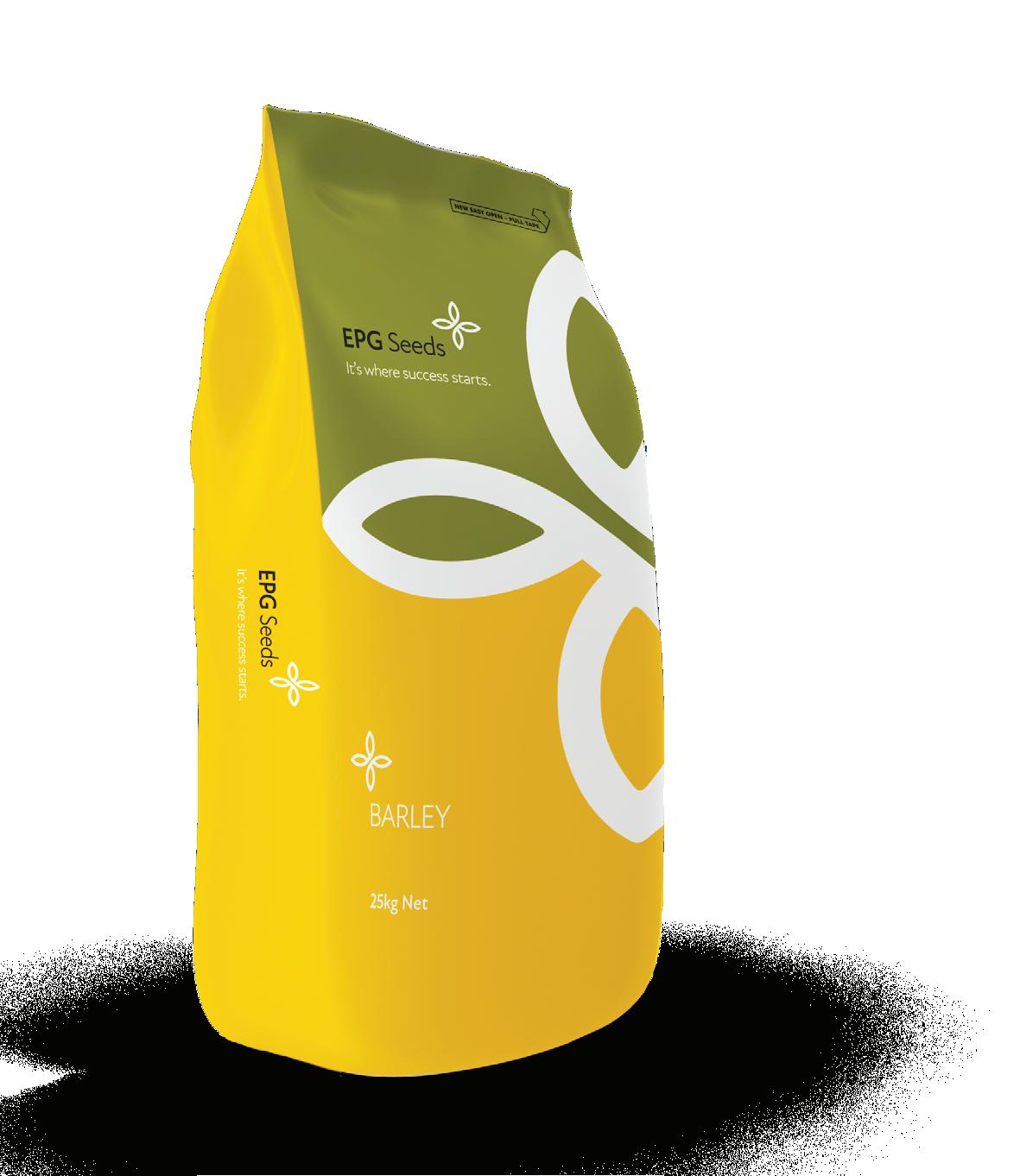

It’s the smallest things that makes the biggest difference.
success
LG Alestar Malt barley Growing increasingly popular with brewers, LG Alestar is a malt accredited barley ideal for all malt growing regions across Australia. LG Alestar offers high yields, excellent head retention plus a very good disease resistance package. KEY FEATURES High yielding Strong straw strength Excellent head retention Very good disease resistance Medium maturity Suitable for all malt barley areas – Australia wide Resistant to Powdery Mildew Full Malt Accreditation (Barley Australia) Similar maturity to Commander Low screenings Contains mlo 11 Gene Versatile all rainfall zones Seed Availability: LG Alestar is available nationally. EPGseeds.com.au Freecall: 1300 018 392
It’s where
starts.







Give your wheat* a proper break Find out more at crop-solutions.basf.com.au ALWAYS READ AND FOLLOW LABEL DIRECTIONS. * Not Durum. © Copyright BASF 2022 ® Registered trademark of BASF. 212756 10.2022 PLAN Stay one step ahead of annual ryegrass Recharge your pre-em rotation by using Luximax’s Group 30 chemistry on 30% of your wheat crop every season to: • maintain the highest levels of grass-weed control • reduce resistance pressure on older products • keep Group 3, 13 & 15 products in the program
A ‘MINI-ROTATION’ TO TURN THE TABLES ON RESISTANCE
Although many farmers are familiar with the principles of crop and chemical rotation, not everybody makes changes as often they should.
Unfortunately, logic dictates that it’s the crops and products they most value that growers are most likely to put at risk.
It goes without saying that there’s no herbicide that’s currently more highly prized than Sakura, which helped create such high expectations from –and reliance on – the pre-emergence application window. When a single product has made such a difference to the viability of cropping, and there’s so much potential profit at stake, growers are understandably reluctant to move away from it.
The problem is that there is an even more powerful logic to the development of resistance. Repeated use of the same herbicide mode of action accelerates the development of mutated weed biotypes that it can’t control.
In short, the more people rely on a product in the short-term, the sooner it will become unreliable. The latest data on the CropLife website shows resistance to Group 15 mode of action, which includes Sakura and Boxer Gold, has already been confirmed at over 100 sites in Australia.

BASF have now come up with a circuitbreaking ‘mini-rotation’ strategy that should reduce the pressure all round, as the company’s Portfolio Manager Cereals Roger States explains.

“The introduction of Group 15 (then called Group J & K) chemistry really
turned things around for a lot of growers who were struggling to manage big populations of resistant annual ryegrass,” he says. “It took a few years for some growers to make the switch, but now those products – and Sakura especially – are mainstays of most programs.
“We’ve come up with the ‘30 on 30’ strategy to cut down the lag between the release of important new chemistry and its widespread use, and to slow the development of resistance to Group 15 and other, older products. This is particularly important because of the crossresistance risk between herbicides in Groups 3, 13 and 15 that has been described in recent scientific publications by prominent researchers like Steve Powles, Roberto Busi and David Brunton.
“The plan is simply for growers to use the unique Group 30 chemistry of Luximax® on 30% of their wheat crop as an extra ‘mini rotation’ within the standard program.
“That ‘30 on 30’ initiative will help growers ease into using the newer chemistry with the reassurance that they’ll be able to go on using other older alternatives more widely and effectively for longer. We’ve got to protect what we’ve got.
Roger says that both replicated trial results and commercial use have repeatedly confirmed that Luximax can match the high level of weed control growers expect from Sakura. It has similar tankmix compatibilities too, so the ‘30 on 30’ scheme can be used very flexibly.
“Over the course of a few seasons, the weed seedbank in each paddock will be exposed to an entirely new mode of action.”
“Luximax is very effective as a standalone treatment,” Roger explains, “but of course it would very seldom be applied that way. The premium grassweed pre-ems are generally applied in tank-mixes with multiple extra products. All the most likely mix partners like glyphosate, paraquat, trifluralin, triallate, prosulfocarb, carfentrazone and metsulfuron are on the Luximax label.
“Our early trial work highlighted Luximax and prosulfocarb (Arcade) as a particularly effective combination. Now we have an even better recommendation because since then we’ve launched Voraxor®, which can do several jobs at once. Growers who haven’t already tried Voraxor could take the ‘mini-rotation’ concept one step further and use it as part of their ‘30 on 30’ applications. Voraxor can play the same role as trifluralin in spiking the superior grassweed herbicides’ control of annual ryegrass, but with the massive added benefit of extended residual pre-emergent control of key broadleaf weeds.
“Adding both Luximax and Voraxor to the mix is all part of spreading the load to maintain the highest standards of control while also protecting the chemistry our broadacre cropping has become so reliant on. That’s what ’30 on 30’ is all about.”
19 Crop Protection
SPOTLIGHT PLUS ® SAVES TIME AND MONEY FOR GRIFFITH VITICULTURALIST
The switch away from mechanical to chemical sucker control has rewarded Griffith viticulturalist and contractor Steven Barbon with major savings.
Mr Barbon has 90 acres of grapevines on a property just south of Griffith, in the Riverina region of New South Wales. Suckers are an annual problem in the vines and historically were manually removed with machetes or knives.
“We were out in the heat, had issues with snakes and had to be careful that we didn’t cut any drip tape. I think it was costing us about $10,000 in labour to go across our 90 acres.”
In more recent times, Mr. Barbon purchased a Pastro Custom Ag Desuckering Vineyard Sprayer and has been applying Spotlight Plus® Herbicide from FMC, ever since.
“It now takes about one and a half days to do the 90 acres with just two containers of Spotlight Plus®.”
He said the machine had an electric eye that identified the trunk of the vine and then sprayed down to the base.
Spotlight Plus® is generally used from mid-October through to early November and is applied when a few suckers first appear in the vineyard.
“It does a really good job controlling
unwanted suckers,” he said.
“We have had really good results. I can spray in the morning and by the afternoon you can see the green tissue of the suckers starting to wilt.”
The herbicide is used on a wide range of wine grape varieties including Shiraz, Pinot Noir, Pinot Gris, Chardonnay, and Merlot on the home block.
Mr. Barbon also contracts to other vineyards in the area and uses the desuckering sprayer and Spotlight Plus® on the other properties as well.
“I recommend Spotlight Plus® because I’m getting such good results from it on my own grapevines.”
Spotlight Plus® is also registered for use in tank mixes with knockdown herbicides to control a range of broadleaf weeds under vines and certain tree crops.
“We also use it through the boom spray with Basta* herbicide as it will increase the speed of control and effectiveness on weeds such as marshmallow, wild radish, capeweed and Paterson’s curse.
Elders Griffith Horticultural Agronomist, Steve Hirst, said Spotlight Plus® was widely used in the area to de-sucker vines and for general weed control.

“It is a quicker and more cost-effective
option and, as it is a purpose-built lowdrift formulation, it is very safe.”
He said Spotlight Plus® was absorbed by the green shoots but didn’t move up or down in the plant so only controlled the areas directly hit by the herbicide.
“It is a very good option on the market.”
Spotlight Plus® is uniquely suitable for sucker control with its mode of action making it highly effective on treated areas and safe to unsprayed leaves.
It is absorbed by green leaves and stems and there is no translocation to the roots or to other areas of the plant, and no residual activity in the soil.
The active constituent in Spotlight Plus® (carfentrazone-ethyl) is a unique, herbicidal molecule that interacts with the plant’s photosynthetic system to form highly reactive compounds. These compounds rupture the plant cell membranes resulting in the cell contents leaking out which causes rapid cell death.
This mode of action relies on photosynthesis, so sunlight is essential for expression of the product’s herbicidal activity.
Spotlight Plus® is registered for sucker control in grapevines, olives, tree fruits and tree nuts.
20 eldersrural.com.au Crop Protection
Elders Griffith Horticultural Agronomist Steve Hirst (left) and Viticulturalist Steve Barbon (right)
That’s where On Coarse DRA (Drift Reducing Adjuvant) comes into the picture. On Coarse DRA is a tank mix partner for fallow herbicides that improves their performance by greatly reducing spray drift risk, even when already using a very coarse spray set-up. There is no better way to keep your neighbour relationships On Coarse!


for more information
Visit www.fmccrop.com.au
FMC is a registered trademark of FMC Corporation or its affiliates. © 2021 FMC Corporation. All rights reserved 01/21. On Coarse is a registered trademark of ATaMS Pty Ltd. FMC Australasia Phone: 1800 066 355 www.fmccrop.com.au On Coarse DRA
secret to good spraying is to keep it to yourself. Good spray drift reduction makes good neighbours!
The
CROWN ROT MANAGEMENT BENEFITS FROM JOINT RESEARCH
Often considered a disease of northern cereal farming systems crown rot is now benefiting from intense research in South Australia, with the findings destined to benefit many across the country.

Crown rot of cereals is difficult to manage in current farming systems, but exciting new management options are being assessed in South Australia. Elders Tech Services Manager for South Australia Lyndon May says that significant yield losses are preventable with correct management.
“Yield losses of 20-40% in bread wheat due to crown rot are not uncommon. Even when we’re not seeing white heads, yield loss is occurring,” says Mr May.
“In our trial work we’ve seen yield losses of 10-20%, where the only crown rot symptom was browning of stem bases.
“That’s a challenge we face with growers - there can be a significant yield penalty, but they may not recognise there’s a problem unless you see the common signs of white heads.”
One of the industry’s leading plant pathologists, Dr Margaret Evans, knows the challenge all too well from her extensive past with the South Australian Research and Development Institute (SARDI). It’s a challenge she’s still passionate about at the helm of Evans Consulting.
“Despite decades of research and development across Australia, there’s no simple solution available for managing crown rot yet, and that is a management challenge in current
farming systems,” Dr Evans said.
“As well as reducing cereal crop yields, crown rot reduces the flexibility of farm enterprises by dictating what crop types and cereal varieties can and cannot be grown in a paddock”, says Dr Evans.
In South Australia, Elders is meeting the challenges of crown rot management by providing staff with training and with access to the PREDICTA* B analytical service offered by SARDI and by developing better resistance in bread wheat varieties through EPG Seeds (Elders Plant Genetics).
Mr May is also a strong advocate for field research that assesses the efficacy of new fungicide treatments and screens EPG bread wheat lines for crown rot resistance.
“Effective fungicide treatment and improved levels of resistance in welladapted wheat varieties would be highly desirable additions to crown rot management strategies,” said Mr May, who is determined to promote research that furthers development of such options.
Working with Elders, a leading provider of agricultural advice in Australia, and Syngenta, a global leader in agricultural Research and Development “is a great experience,” said Dr Evans, “as it means we have access to a breadth of skills, knowledge, contacts and funding
opportunities not normally available to crown rot research programs.”
Mr May said the benefits of this collaboration were already stacking up.
“Providing our Graduates with access to a semi-structured hands-on opportunity to learn practical research skills from an experienced researcher was a major bonus for Elders from engaging Dr Evans to undertake crown rot trial work for us in 2021,” Mr May said.
Elders is a driving force behind this work and their collaborative approach has allowed the company and Dr Evans to pool funding opportunities. As a result, field trials have been undertaken at four sites in 2020-2021 and are in progress at three sites in 2022, with at least two sites planned for 2023. Syngenta Australia aims to gather more data from low rainfall sites.
This work has also been supported by Syngenta Australia; the Hart Field Site Group; the Upper North Farming Systems Group (UNFS); Agricultural Innovation and Research, Eyre Peninsula (AIR EP) and the South Australian Grains Industry Trust (two-year project).
Syngenta Seedcare™ Technical Specialist Sean Roberts has coordinated upward of 60 crown rot trials across Australia in the process of registering VICTRATO® seed treatment for management of crown rot.
22 eldersrural.com.au Crop Protection
In these trials, Mr Roberts said seed treatment with VICTRATO® has on average resulted in yield improvements of 14pc in barley, 18pc in bread wheat and 50pc in durum wheat. In South Australian trials, ranges in yield improvement were 7-13pc for barley, 6-25pc for bread wheat and 24-32pc for durum wheat, which is consistent with national findings.
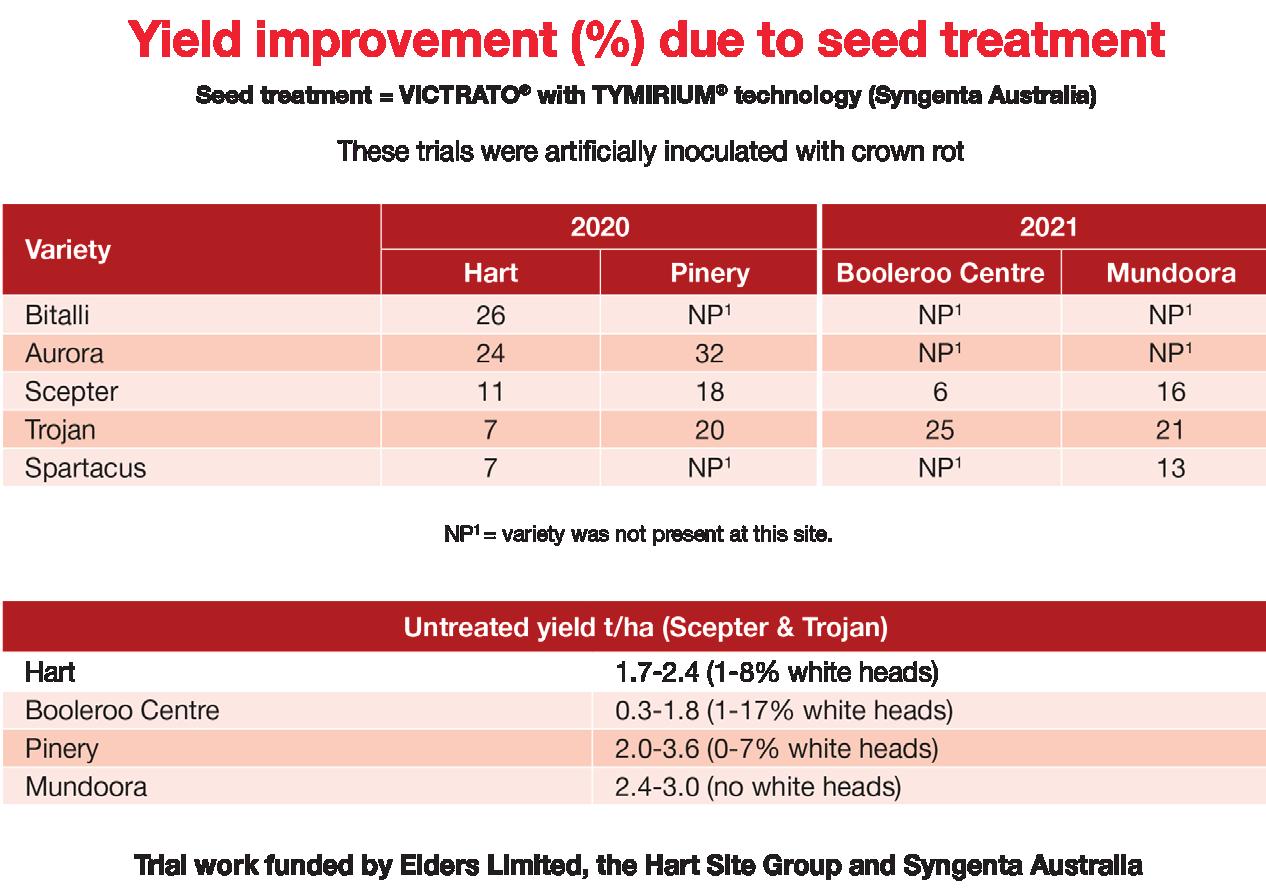
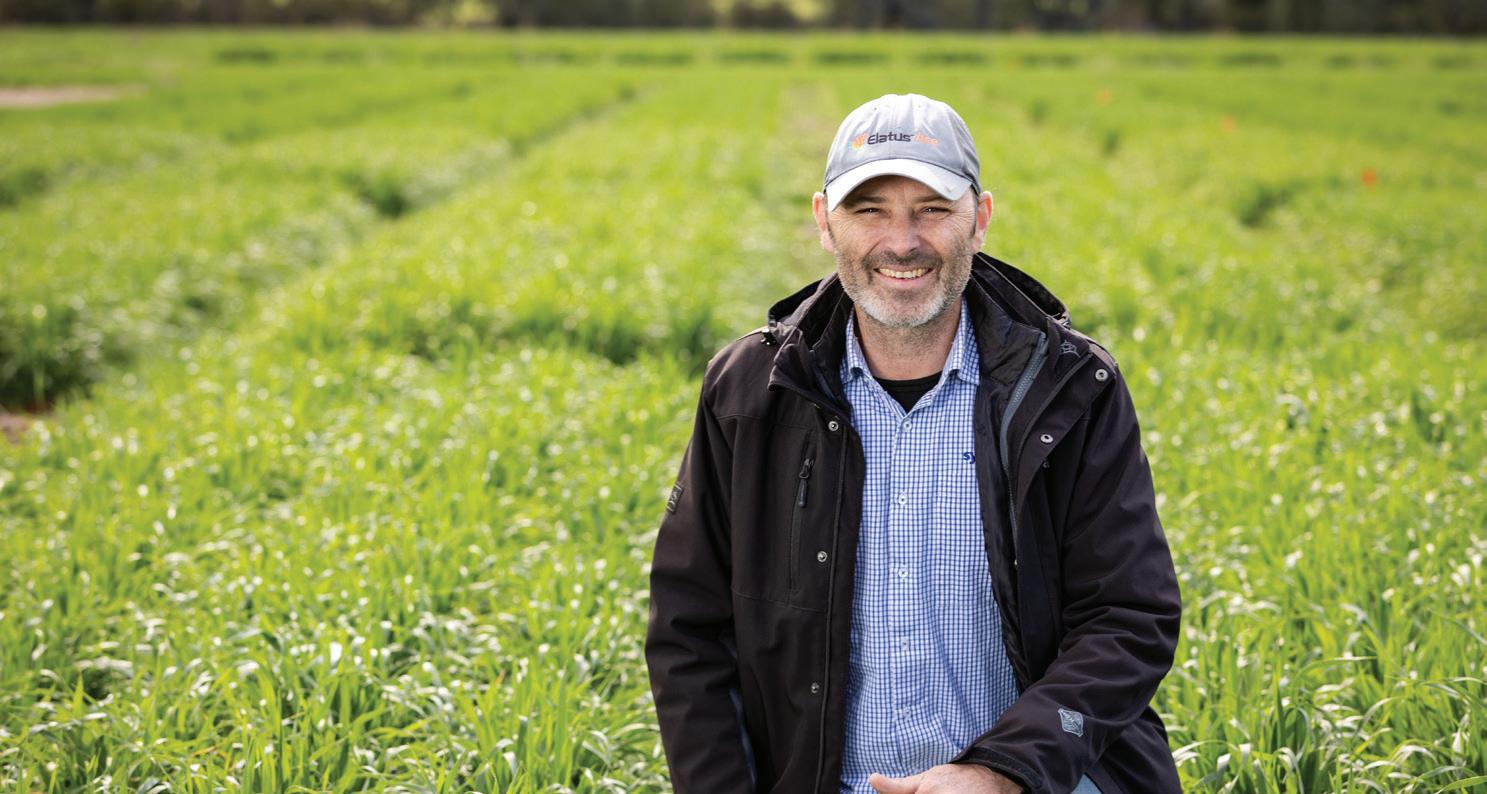
Mr Roberts and Dr Evans both point out that VICTRATO® will not be a ‘silver bullet’ for crown rot control but will need to be pyramided with other management options for best effect.
“It’s never been more important to employ all available management methods,” said Mr Roberts. In particular, soil testing and PREDICTA* B analysis to assess the risk of yield loss, will provide key information when deciding whether VICTRATO® seed treatment is needed.

“We’ve got bread wheat lines showing some resistance to crown rot and if we
can combine that with VICTRATO® seed treatment, we’ve got the basis for an excellent control strategy,” said Mr May.
NB: VICTRATO® seed treatment is not registered. An application has been made to the APVMA. Visit crownrot.com.au for more information about this devastating disease including strategies for management.
“It’s never been more important to employ all available management methods.”
Soil sampling 23 Crop Protection
Sean Roberts (pictured), Syngenta Technical Services Lead
SETTING UP FOR SUCCESS: ELDERS VISITS THE TITAN AG FOLIAR FUNGICIDE TRAIL SITES
Earlier this year Titan Ag commissioned several independent trial collaborators to conduct foliar fungicide trials in wheat, barley and canola. Held across three states, the objective was to capture data to assist with the preparation of APVMA submissions, to extend label registrations and to launch new fungicide products with known modes of action.



In mid-September a number WA Elders staff joined Mick Girando from Titan Ag to view some of the work that has been completed to date.
FIRST HAND BACKING
Andrew Gibson, WA State Rural Products Manager said it was great to see first-hand the work that has been done by the Titan Ag team and how this work helps to keep product labels up to date and relevant to the current needs of farmers.
“It was also a good opportunity for both our agronomy and store network teams to learn more about the Titan Ag portfolio and how these products fit within fungicide and crop management programs,” Andrew said.

The trials in WA have been conducted by SLR to ensure their independence and accuracy.
Bill Moore, Technical Services Manager - West, stated this type of work will give growers the confidence that Titan Ag products are well researched and developed.
“To be able to involve Elders staff in these projects is an important part of the development of the Titan Ag brand within the Elders business,” Bill said. This type of trial work is being replicated in SA and Qld to allow for different environmental influences.
Titan AG offers a diverse range of high quality products which include herbicides, fungicides and insecticides. For more information about Titan Ag and their full range of products contact your local Elders branch or visit www.titanag.com.au
Bill Moore, Elders Technical Services Manager - West
Elders staff visiting the Titan Ag Foliar Fungicide trials
“To be able to involve Elders staff in these projects is an important part of the development of the Titan Ag brand within the Elders business.”
24 eldersrural.com.au Crop Protection


Suction filter washed with water. Suction filter cleaned with All Clear DS. You’ll stick with Because little else does! When it comes to removing damaging residues from your boom sprayer, All Clear DS outperforms other tank cleaners on the widest range of products. ®Registered trademark of AgNova Technologies Pty Ltd 220429 Innovation. Quality. Solutions. Feature Benefit Single dilution rate Convenient and simple to use Non-corrosive No equipment damage Low foam Easy to empty spray tank Long shelf life Carry over season to season SEQUESTRANTS To lock up molecules and improve rinse out + + DETERGENTS To solubilise and break down residues SURFACTANTS To physically remove residues and stop re-sticking
CAREER JOURNEY TAKES SHARON TO NATIONAL ROLE
Sharon Elphinstone recommends that young women make the most of every career opportunity.
“Have a go and don’t limit your options,” she says, reflecting on her own career journey over nearly 30 years to Product Manager – Potatoes with Elders.
When Sharon left Tasmania with one bag and a suitcase and joined Elders at its Pakenham branch back in 2005, she didn’t imagine that she would be heading up the company’s national potato business by 2017.
Five years on, she manages the national seed production of Elders potato varieties as well as overseeing the assessment and development of new potato varieties for the Australian market, with the support of eight Elders agronomists and field staff.
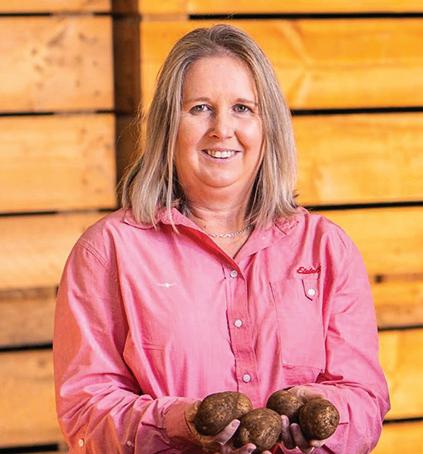
The company imports three to six new varieties every year, mainly from the United Kingdom and Europe, to see whether they are better than any of the 289 varieties currently grown in Australia.
Sharon says working with potato seed growers, buyers and industry representatives is one of the most enjoyable aspects of her job.
“We rely on approximately 30 potato seed growers in Victoria, Tasmania, South Australia and Western Australia to grow the certified planting material from the mini-tubers for supply to commercial growers,” she said.
“In fact, Elders is a major supplier of certified planting material and inputs to the potato industry, with specific varieties grown to supply the fresh market and processing for chips and potato crisps.”
Whether it’s looking at new planting material, handling sales and logistics, talking to growers or sorting out payments, Sharon says her job offers plenty of autonomy and variety.
“I enjoy the business and there’s something new happening every day,” she said.
According to the latest statistics from AusVeg, the industry’s peak body, potatoes are Australia’s biggest vegetable crop, valued at more than $807 million at the farm gate in 2021.
In this same year, Australian growers grew more than 1.4 million tonnes of potatoes, with two-thirds of the crop supplied to processors and the food service sector and one-third sold through the fresh market including supermarkets and other retailers.
“Whether it’s whites, creams, yellows or reds, for the table market, potato crisps or French fries, potatoes are grown yearround in all states of Australia,” Sharon said.
“Elders has a long-term commitment to the industry, bringing in new varieties as tissue culture and managing them through the process of quarantine, laboratory and field assessment over several years before deciding whether to release them commercially,” she said.
“As part of this, we test the market fit of each new variety with buyers.”
“Only one or two new varieties make it through these assessments each year, before the plants are multiplied by our seed growers and introduced in key potato areas such as Ballarat, Otway, Portland, the Mallee, Kangaroo Island and Gippsland for further scrutiny.”
There are very few people who can match Sharon for the depth of her knowledge and experience in potatoes.
AN EARLY START
Sharon grew up on her parents’ cattle and vegetable farm at Thirlstane, near Devonport in north-west Tasmania, picking up potatoes for pocket money from her father in the summer holidays.
Uncertain of her career options, she spent 12 months studying business administration at Marcus Oldham College in Geelong before returning home and picking up field work with a local farm
consultant and then with McCains, based at Devonport.
In 1994, she started working with one of McCains’ field officers in potatoes, travelling around the state measuring and monitoring crops for processing for four years.
Her work in potatoes continued at the Tasmanian Department of Agriculture where she was a certification officer and helped oversee the production of minitubers for six years
She then moved to the mainland to join Elders as a potato technical officer in 2005, doing everything from leaf sampling and virus testing to running trials all over the country.
“These were early days for Elders in the potato market, so it’s been good to be involved in growing our business over the last 18 years,” Sharon said.
“And I’m looking forward to contributing to the potato industry and continuing our growth in the years ahead.”
Chris Willis, Elders Category Manager –Seed, congratulated Sharon on her long and successful career at Elders and in the potato industry.
“Not only is Sharon well known in the industry, but she also has excellent rapport with potato growers,” he said.
“Few people can match Sharon for her knowledge and understanding of the potato production system, which is invaluable in her work at Elders every day.”
Sharon Elphinstone
26 eldersrural.com.au News
Are you looking for a rewarding career in agriculture? Elders has a variety of roles. Scan the QR code for more info.
NEW HERBICIDE OPTION TO CONTROL CALTROP IN SORGHUM
Sorghum growers now have access to an innovative herbicide proven to control Caltrop (Yellow vine) (Tribulus terrestris) as a post emergent option.
Corteva Agriscience have registered Ubeniq® Rinskor® active herbicide in sorghum as a tank mix partner to specifically control Caltrop.
Caltrop has become a major issue for growers with seeds that remain dormant in the soil for extended periods of time and germinate with summer rainfall.
It has many names in different regions of Australia eg. Yellow vine, Cat’s head, puncture vine or Goat’s head, having distinctive yellow flowers and sharp burrs that form within three to five weeks after emergence. The burrs can attach to tyres and stock and move around paddocks, farms and districts reducing production efficiency in many situations.
Corteva Agriscience Marketing Director, Dan Dixon, said the company has marketed Starane® Advanced (fluroxypyr) herbicide into the Australian sorghum market for years, but had noted the challenges growers were having with Caltrop control.

“Over the past three decades Starane Advanced has become the standard for post emergent weed control in grain and forage sorghum”, said Mr Dixon.

Starane Advanced has a wide range of broadleaf weeds on the label.
“Generally, Starane has been mixed with Atrazine for broad spectrum control of problem weeds in sorghum crops,” Mr Dixon said.
“Unfortunately, in recent years Caltrop has been more difficult to control with the Starane Advanced mixtures, so we set about looking for a solution.”
He said Ubeniq® Rinskor® active herbicide had been registered in Australia since 2018 for post-emergent weed control in rice. Mr Dixon said “Ubeniq is based on Rinskor, which is a new arylpicolinate active ingredient in the chemical class of synthetic auxin (Group 4) herbicides.
ACTIVE AT LOW RATES
“It is very active at low use rates and has an extremely attractive environmental profile - winning the US EPA Green chemistry award in 2018.”
Trials were conducted over a six-year period to determine the ability of Ubeniq to control summer weeds, selectivity to sorghum and suitability as a tank mix partner with Starane Advanced and other products.
“The trials demonstrated the ability of Ubeniq to provide outstanding control of Caltrop in sorghum crops,” Mr Dixon said.
“Corteva is really pleased to provide a solution for Caltrop as a tank mix partner with post-emergent herbicides that are currently used in sorghum crops.
“Ubeniq has proven to be safe across sorghum varieties, and it also worked particularly well as a tank mix partner.”
The addition of Ubeniq at a label rate of just 25 mL per hectare, provides excellent control of Caltrop and included the benefits derived from the existing herbicides.
“It is an excellent mixing partner for Starane Advanced herbicide, particularly for fast control of Caltrop and seems to be adding to the speed of control of other weeds.”
TANK MIXED IN SORGHUM
In sorghum, Ubeniq can be tank mixed with Starane® Advanced and Hasten®
Spray Adjuvant. In paddocks or areas where growers can use atrazine this can also be added to the mix to further strengthen the overall control.
“With an extremely short grazing withholding period of just 3 days, this could be an excellent option for forage sorghum growers looking to control caltrop and prevent any livestock becoming lame.”
In most situations growers will have no issues with rotational cropping to the full range of winter crops following the use of Ubeniq in sorghum.
At the recommended use rate, the maximum re-cropping interval is just two months (with a minimum 75 mm rainfall requirement) to crops such as canola, chickpeas and field peas, with a four week plant back to wheat, barley, oats, triticale and ryegrass.
Ubeniq Rinskor active herbicide has also recently been registered to control Navua sedge (Cyperus aromaticus) in pastures.
Navua sedge has been an issue for graziers in northern Queensland for many decades and Ubeniq provides an opportunity to control the weed to improve pasture production and stocking rates.
For more information visit your local Elders branch.
27 Crop Protection
Dan Dixon Marketing Director Ubeniq Sorghum Trial Breeza NSW
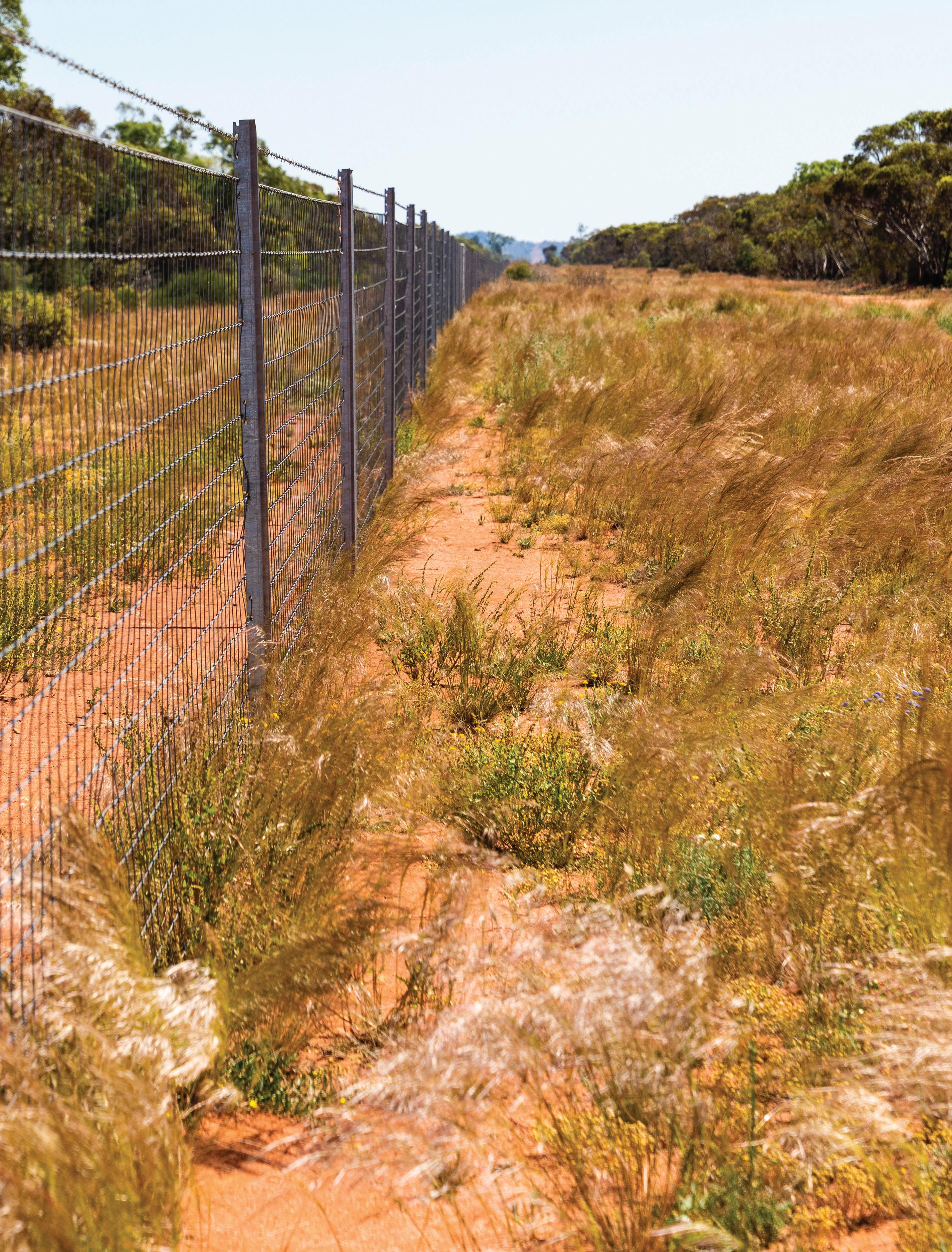





AustralianMadeFencing Waratahhasover135yearsoffencemanufacturingandfence buildingexperienceinAustralia.Withmillsin GeelongVIC,and NewcastleNSW,oursteel,wire,andpostsare madeby AustraliansforAustralianconditions. TOSEEWHATPRODUCTSWEHAVE TOOFFER SCANHERE www.waratahfencing.com.au 131080 WARATAH FENCINGPROTECTING WHAT'S VALUABLE TOYOU WANTTOKNOWMORE?
WARATAH EXCLUSION FENCING TO IMPROVE BIOSECURITY AND GRAZING YIELDS
Feral animals rank high on the list of threats that can affect your biosecurity, animal health and grazing systems. One of the most cost-effective ways of dealing with these issues and reducing threats to your property is a good fencing system.
Animal Health Australia identifies diseases such as Foot and Mouth and Lumpy Skin Disease as current threats to Australia. Without properly monitoring for their presence in Australia and maintaining a good biosecurity plan for your farm, potential outbreaks can occur, which could cost you, and your neighbours.
Waratah’s premium, Australianmade exclusion fencing has boosted the biosecurity and grazing yields of Victorian cattle producer Ken O’Brien’s property near Barham, preventing hundreds of kangaroos from destroying his 32 hectares of irrigated clover and rye grass.

“It wasn’t unusual to see 300-400 kangaroos in a night, and they would strip my valuable irrigated pasture bare. Even if there was remaining pasture, the cattle still wouldn’t eat it as there would be kangaroo faeces and urine stains all through the grass which also had
the potential to be a biosecurity risk.” Mr O’Brien said.
Many farmers are finding that Waratah exclusion fences are providing increased productivity through improved weaning rates or increased production by reducing grazing pressure from feral animals on pastures and or cropping country, whilst also providing farmers with peace of mind by lowering the risk of disease in a livestock population.
“Since installing the 2.2km Waratah exclusion fence, I’ve only ever seen two kangaroos in the block and they jumped over the cattle grid to get in. We’ve now been able to increase our stocking rate by one-third, and the fencing has improved our farming operation dramatically in a number of ways.”
Lower labour costs and maintenance are key benefits being realised once an effective exclusion fencing system is in place.
“Using Waratah fencing products was an investment that will yield savings in the long term, due to its ease of installation,” Mr O’Brien said.
“Initially it might be more expensive, but in the end, the benefits far outweigh the costs. We had the fence rolled out
and put up in under two days, which is three times faster than what it would typically take to complete.”
Waratah has an extensive range of exclusion fencing solutions and products to suit a wide range of feral animal issues.
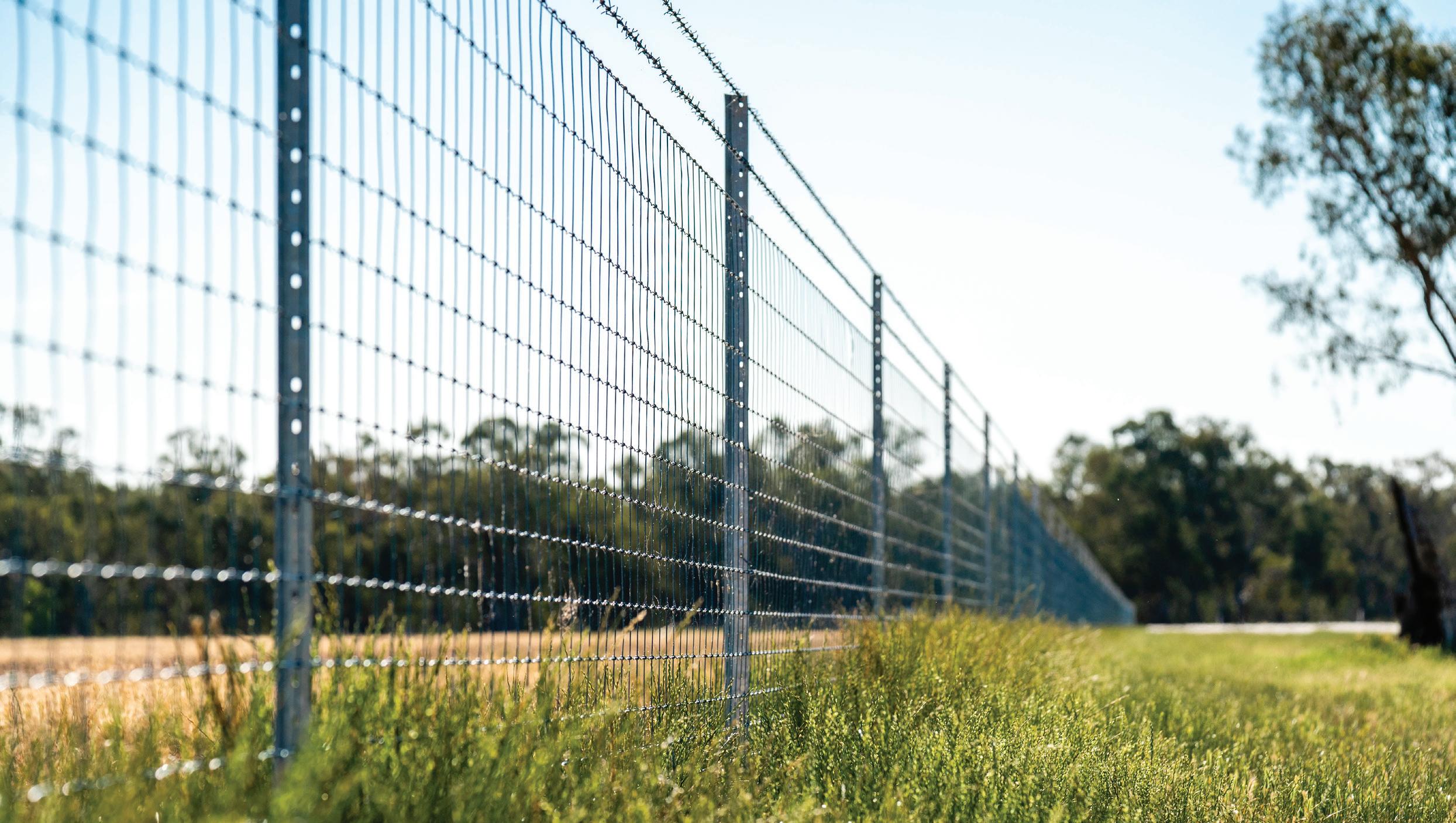
Contact your local Elders branch today and have a chat about finding the right Waratah products for your farming enterprise.

Ken O’Brien 29 Fencing







Scan to donate Your donation will help keep the Flying Doctor flying! ELDERS 2023 CALENDAR NOW AVAILABLE Pick up a calendar from your local Elders branch for a small donation. THANK YOU TO EVERYONE WHO ENTERED THE ELDERS 2023 CALENDAR COMPETITION! Congratulations to Aimy Butt from NSW, who has taken out the coveted cover image spot with her beautiful shot ‘Bandit’. Congratulations also to the other 12 winners, who submitted spectacular shots and will be featured in the 2023 calendar. Calendars will be available in branch for a gold coin donation, with proceeds going to the RFDS. Stay tuned for more updates!
RURAL PROPERTY PRICES BUCK THE TREND OF THE WIDER PROPERTY SECTOR
Elders Rural Property Update has been released today, analysing the movement of rural property values for quarter two of 2022, from April 1 to June 30.

The report shows double digit growth in median price per hectare despite appreciating interest rates. In contrast, national home values fell by 0.2 per cent (pc) for the same period, according to data from Corelogic.
Key points of the second quarter (Q2) update include:
> National median price per hectare (ha) increased significantly, up by 11.2 pc to $8,158/ha.
> Transaction volume edged higher, increasing nationally by 2.3 pc in Q2-2022 to 1,569 totalling $3 billion.
> The rolling one-year trend in median price per hectare remains positive, increasing by 3.3 pc to $7,452/ha.

Nationally, median price per hectare moved higher driven by a higher proportion of grazing transactions in South Australia and Western Australia. Coupled with a sharp increase in transaction volume from New South Wales which attracts a higher price per hectare compared to other states.
The one year rolling median price per hectare highlighted the continuation of a positive underlying trend in rural property values, increasing across every state and territory in Q2-2022. The Northern Territory led the way with a 19.1 pc increase followed by a 12.5 pc increase in South Australia.
The tight supply of rural property was evident in all states and territories with most markets returning to 2019 levels.
The quarterly change in one year rolling transaction volume declined a further 10.8 pc nationally to 7,541, with larger declines experienced in Tasmania down 29 pc and Victoria declining 16.1 pc.
Elders’ newly appointed General Manager Farmland Agency & Agribusiness Investments, Mark Barber, highlighted the positive outlook for the sector and the resilience of rural property prices.
“During the second quarter of 2022 there has been some convergence of commodity prices and property values which is to be expected over the longer term due to the close correlation of these indexes.
“The probability of a recession in some of the largest economies in the world is increasing. As a large exporting nation, recession may lead to deduced demand for some of our agricultural products softening commodity prices further.
“However, if fears of recession increase, investors will look for assets that will maintain their value – defensive assets. Agricultural land produces food and fibre that people need even in difficult economic times, which will continue to support land values.”
The fundamentals of the rural property market changed slightly in Q2-2022 however the long-term view remains positive. Large business rates increased by 0.94 pc on average during Q2-2022 and a further 0.46 pc in July. Whilst the balance of debt to agriculture, forestry and fishing increased by 8.7 pc in Q22022 to a record $101.2 billion, however, the high was short lived reducing by 1.3 pc in July.
There was evidence of cash on hand being used to pay down debt, with the national Farm Management Deposit balance increasing to a record $6.8 billion in June before declining to $6 billion in August. Commodity prices remain elevated year on year, albeit not as high as previous quarters as production levels rise for several commodities.
“The likely outcome from the above drivers is that rural property prices will continue to grow in the second half of 2022, supply is tightening across the country which will help drive demand higher for properties that do list,” said Mr Barber.
“Buyers are looking to be more informed compared to previous years, however, long term confidence in the industry remains high.”
Elders source transactional level data for every rural property sale above 40 hectares in Australia from Corelogic before undertaking in-depth analysis to remove non-agricultural land uses and statistical outliers. Analysis and commentary is provided by Elders’ national network of rural real estate experts.
Download Elders Rural Property Update in full, and subscribe to future editions.
31 Real Estate
Figure 1. Australia 1 year rolling performance
NEW REGIONAL RESISTANCE DATA HELPS PRODUCERS SELECT THE RIGHT SHEEP DRENCH

Choosing the right drench is now easier for Australian sheep producers thanks to a new data tool from Virbac Animal Health. The Tridectin Drench Efficacy Portal will allow producers to compare drench effectiveness in their region based on the latest Feacal Egg Count Reduction Testing (FECRT), helping to protect their bottom line.
Virbac’s Technical Service Manager and vet, Dr. George Cox, said the portal aims to assist sheep producers in effectively managing worms in across their sheep operations.
“Our goal was to provide sheep farmers with a user-friendly tool that can help them make educated drenching decisions using the most recent FECRT data,” she said.
Collected between 2018 and 2022 across 76 FECRTs, the data available on the portal is summarised as per Wormboss regions. Seventeen actives or combinations of actives, including triple, dual, and single active formulations were used in the tests.
While the portal provides the most recent and relevant data, Dr. George Cox reminds producers that every farm is
different, and the best way to select the most effective drench for their sheep is to undertake regular FECRTs on their properties.
“Every time we drench, we select for resistant worms. This is why we recommend testing sheep flocks for drench resistance every 3-5 years.
“Regular testing assists advisors to design appropriate drenching programs to effectively control worms, and, more importantly, secure the effectiveness of drench actives in the long term”.
“The data we have collected to date, which is accessible via the portal, has provided some interesting results and we will continue to add new results as we collect them” says Dr. George Cox.
Producers and advisors can access the average overall broad-spectrum efficacy on a national and regional basis. Barber’s pole worm, Black scour worm, and Small brown stomach worm efficacy can also be viewed nationally or regionally in the portal.
Results on the portal show that Tridectin, with its unique Moxidectin triple active formulation, is more effective than
most other drench combinations with a 98% overall efficacy. It outperforms Abamectin-triples and competes well with Monepantel/Derquantel combinations, offering the same power of worm control. Tridectin was also the most effective drench against Barber’s pole worm with a 97.3% average efficacy and its inclusion should be considered in most drench programs.
Tridectin’s superior efficacy has been attributed to its unique combination of Moxidectin, Albendazole and Levamisole, which provides persistent activity for 14 days. It can be used across ewes, lambs, and rams at any time of year, and has a short meat withholding period of 7 days and export slaughter interval of 17 days. Tridectin is not suitable for sheep that are, or may, produce milk or milk products for human consumption.
To try the portal visit: www.portal.tridectin.com.au or scan QR code on the next page.
Those who use the portal and enter their data before 31st December 2022 will also go into the draw for a chance to win a drench resistance test on their farm.
32 eldersrural.com.au Animal Health



® Registered trademark VISIT THE DRENCH EFFICACY PORTAL! CHECK DRENCH EFFICACY IN YOUR REGION. SEE HOW EFFECTIVE TRIDECTIN® IS IN YOUR AREA. Visit the portal for your chance to WIN A DRENCH RESISTANCE TEST ON YOUR FARM 4 3 5 7 8 2 1 6 Most recent results >75 resistance tests conducted Tridectin® - the unique Moxidectin-Triple-Active l Offers 98% average efficacy1 l More effective than most other drenches l Persistent activity for 14 days (better control of Barber’s pole and Small brown stomach worm) l 7-day meat WHP & 17-day ESI2 1: Virbac FECRT data 2018-2022 - Virbac data on file 2: Tridectin, APVMA Approval number: 83241
Reduced drench efficacy could be costing you thousands of dollars in lost productivity every year. Zolvix Plus is the only combination drench that delivers the power of monepantel. Its unique mode of action provides >99.9% efficacy against a broad spectrum of internal parasites, including single, double and triple resistant strains.1,2 Its new 21-day Export Slaughter Interval is the lowest of any combination drench containing abamectin. Visit ZolvixPlusRewards.com.au today and take the Zolvix Plus challenge!
*Visit
for terms and conditions. References: 1. Refer to registered label. 2. Hosking, B.C. et al. (2010). A pooled analysis of the efficacy of monepantel, an amino-acetonitrile derivative against gastrointestinal nematodes of sheep.
Res
Zolvix Plus contains 25 g/L monepantel and 2 g/L abamectin. Always read and follow the label directions. For full product details, contact Elanco Customer Service on 1800 226 324 between 8 am and 5 pm EST Monday to Friday. Zolvix™, Elanco and the diagonal bar logo are trademarks of Elanco or its affiliates. ©2022 Elanco or its affiliates. EAH21607.
zolvixplusrewards.com.au
Parasitol
106:529-532.
PM-AU-21-0862.
THE FIRST CHOICE PRE-LAMBING, WEANING AND SUMMER DRENCH IS YOUR CURRENT DRENCH REALLY WORKING? TAKE THE CHALLENGE AND FIND OUT! $FREE230DRENCH CHECK* FIND OUT MORE
THIS SEASON TEST - DON’T GUESS!
Australian sheep producers spent almost $135 million in the last 12 months on drenches to manage internal parasites.1 Unfortunately, many of these drenches are no longer fully effective in controlling worms and in some cases, are completely ineffective.2

There is widespread resistance to all older active ingredients, including moxidectin and two, three- and fourway combinations.2
Any reduction in drench efficacy has a direct impact on the health and productivity of sheep throughout the year.
Even a mild or moderate reduction in drench efficacy can reduce potential income by 2–10%.3 At a conservative gross margin of $150/ewe excluding feed costs, a 15% reduction in drench efficacy equates to $3/ewe in lost production.4
A 35% reduction in drench efficacy equates to $15/ewe in lost production. Using a fully effective drench is important to maximise productivity and profit.
The only way to know if the drench you have selected is fully effective is to test – a DrenchCheck is recommended. Don’t let using an ineffective drench rob you of productivity and profit.
This season, worm pressure is very high in most regions.
It will be extremely important to have an effective summer drench program in place in south-eastern Australia this season to minimise the potential impact of worms on production next year. Treating with a fully effective drench
minimises pasture contamination and the carry-over of worm populations over summer.
It is important to make sure the drenches used in your summer drench program are fully effective. One way to know is to take the Zolvix™ Plus Challenge and conduct a free Dench Check valued at approximately $230.
A DrenchCheck is a simple way to indicate the efficacy of the drench used against the worm burden in the sheep at the time of testing.5
It involves conducting two Worm Egg Count (WEC) tests to determine the reduction in the worm egg count after drenching.
The first test is conducted before drenching. The second test is conducted 10–14 days after drenching.
The presence of any worm eggs –even very low counts – 14 days after drenching may indicate a problem.
The larval culture results from the second test will indicate which worm species survived treatment and may be resistant to that drench. Re-treatment with an effective drench may be required.
To participate in the Zolvix™ Plus Challenge, sheep producers simply register their details at www.zolvixplusrewards.com.au before their next planned drench.*
Your Elanco territory sales manager will then contact you to discuss your current drench program and to provide directions on how to undertake the test.
Producers will receive two Elanco Worm Test kits, each containing 10 sample
jars, gloves, instructions, an order/ authorisation form and a pre-paid Express Post bag. Collected samples will be analysed by an independent laboratory.
Your Elanco territory sales manager will then contact you to discuss the results of the DrenchCheck and provide recommendations on how to maintain or to increase the effectiveness of your drenching program.
This may involve recommending a full DrenchTest (Worm or Faecal Egg Count Reduction Test (WECRT/FECRT)).
Conducting a WECRT/FECRT every 2 or 3 years is regarded as best practice to accurately determine the resistance status and efficacy of each drench class against each worm species on the property. There are many useful resources on the worm boss website https://wormboss.com.au/ to assist with decision making and worm management.5.6
For more information contact your local Elders branch or contact an Elanco representative on 1800 995 709 or productsupportau@elancoah.com
Always read and follow label instructions.
*Visit zolvixplusrewards.com.au for terms and conditions. References: 1. Baron sales data June MAT 2022. 2. Playford, M.C. et al. (2014). Prevalence and severity of anthelmintic resistance in ovine gastrointestinal nematodes in Australia (2009-2012). Aust Vet J 92(12):464–471. 3. Besier R.B., et al. (1996). Drench resistance – a large economic cost. J. Agric. West. Aust. 37:60–63. 4. dpi.nsw.gov.au/agriculture/budgets/ livestock 5. http://www.wormboss.com.au/sheepgoats/tests-tools/tests/checking-for-drench-resistancewith-a-drenchcheck.php 6. http://www.wormboss. com.au/sheep-goats/tests-tools/tests/testing-drencheffectiveness-with-a-drenchtest.php
Zolvix Plus contains 25 g/L monepantel and 2 g/L abamectin. Elanco, Zolvix™ and the diagonal bar logo are trademarks of Elanco or its affiliates. ©2022 Elanco or its affiliates. PM-AU-22-0696
35 Animal Health
THE MOST ATTRACTIVE SOLUTION FOR RAT CONTROL IN MACADAMIAS
Controlling rats in macadamia orchards used to be very tricky. Infestations are generally quite difficult to detect until they have already caused significant damage and loss. You might spot broken twigs or branches that indicate roof rats have built nests in the tree canopy, well-hidden because of the dense foliage. Another sign is gnawing on the irrigation pipes as thirsty rats have been looking for water. Either way, the rats have been in the orchard for a while.
Finding out that rats have already moved in is a major cause for concern. They can destroy a significant percentage of the crop you’ve invested so much money in producing. Controlling rodent populations is much easier if you can catch the problem early and deal with low numbers.
The other big challenge until a couple of years ago was that even once you knew you had a problem, there were no rodenticides actually registered for use in macadamia crops.
Products were – and in many cases still are – chosen on the grounds that there’s nothing on the label that says they can’t be used in macadamia orchards. By the same token, there’s nothing to say they should be. In practice, most of them are quite unsuitable. The control they provide in the orchard environment can be unreliable and inefficient and put beneficial predators like raptors and owls at risk.
Selontra® Soft Bait rodenticide from BASF is very different.
“It has the ideal profile for very effective, sustainable control” says Mark Wilson, BASF’s Technical Services Manager.
“That’s why it became the first rodent bait specifically registered for use in macadamias in 2020.”
Selontra can certainly quickly bring existing infestations under control –plenty of growers who have used it to turn around dire situations can vouch for that – but the best way to use it is preventively.
“Because monitoring rodents in the crop is so difficult,” Mark explains, “the best way to prevent rodent damage is by setting baits that the pests will find even more attractive than the crops.
“Selontra has a proven ability to attract rats no matter what alternative food sources are on offer. You just have to make sure it’s placed in areas that they’ll pass by.”
Standard rodenticides are classified as anti-coagulants. They thin the blood to cause massive, fatal internal bleeding. It’s generally pretty effective, but the big drawback is that the active ingredient lingers in the carcases and remains potent. So if an owl or a hawk – or your pet dog – eats a rat killed by a standard product, they will receive a dose of the poison. Even if that dose isn’t fatal, they can add to it by eating more carcases and the poison will keep building up in
their systems.
“Again, Selontra is very different,” Mark says. “It’s quickly metabolised by mice and rats, then breaks down quickly in the environment after they die. So there is very little chance of a predator consuming a lethal dose.”
Mark says there’s one more advantage that helps convince growers Selontra is their best option. “If you’re setting out baits to maintain control, you don’t necessarily want to have to check and refill the bait stations too often. It’s time-consuming and the costs add up. Even a single rat can eat a lot of any standard bait, because they can keep eating their fill for days while it’s slowly taking effect. That might be many times a lethal dose, which makes their carcases more deadly to other animals and means a lot of product is wasted.
“Using Selontra is far more efficient because its stop-feed technology causes rodents to lose their appetite after consuming a lethal dose. That reduces wastage, lowers costs and means a single bait block can last much longer and control many more rodents.
“It’s just a final clincher that makes Selontra a great match for macadamia growers’ needs.”
For more information on Selontra Soft Bait rodenticide, visit: crop-solutions.basf.com.au or contact your local BASF representative on 1800 558 399.
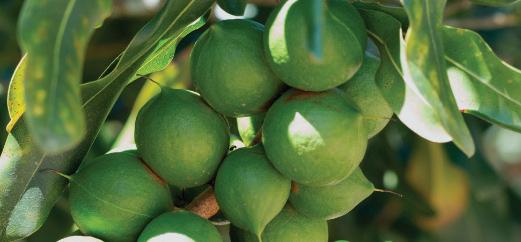
36 eldersrural.com.au Pest Control

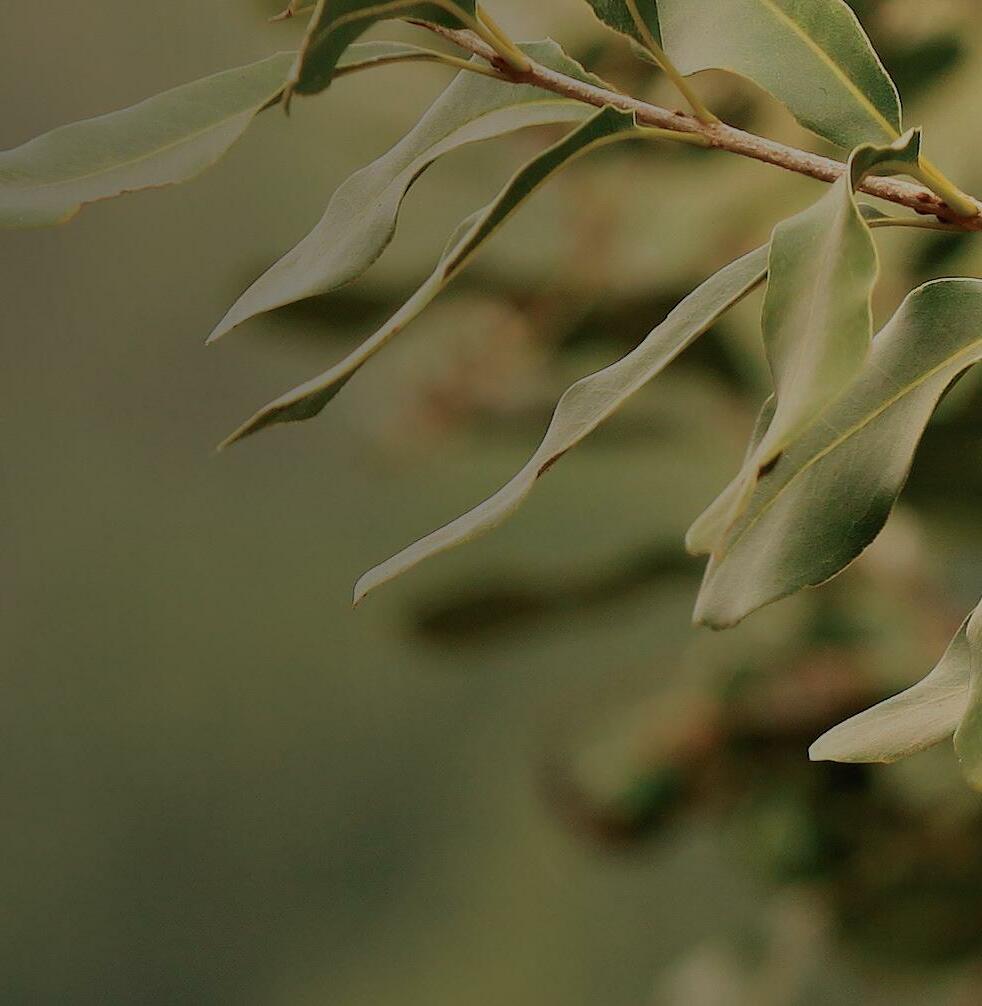

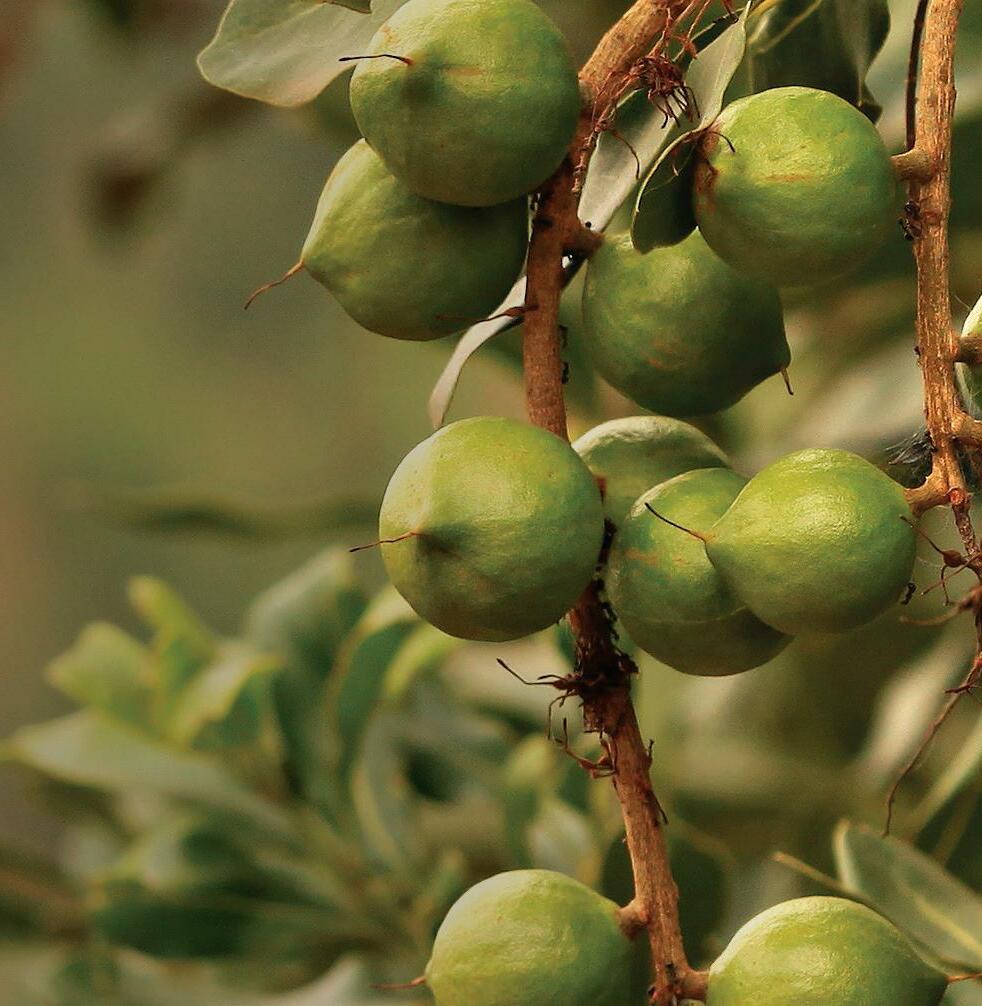













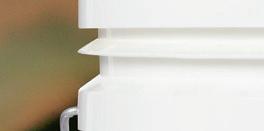

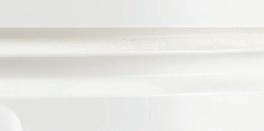



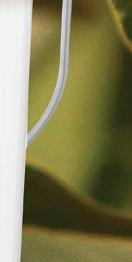

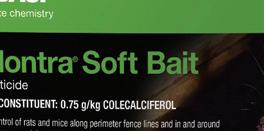








Selontra® Soft Bait Rodenticide offers quick infestation control and works as an integral tool within biosecurity protocols for macadamia orchardists. A single product for your entire orchard Controls rodents up to three times faster High palatability & stop-feeding effect Limited adverse exposure to non-target animals ALWAYS READ AND FOLLOW LABEL DIRECTIONS. © Copyright BASF 2022 ® Registered trademark of BASF. For more information visit crop-solutions.basf.com.au or contact your local BASF representative on 1800 558 399
superior rodent control
your orchard?
Looking for
in

NEW AGBOT AFFORDABLE TANK MONITOR AVAILABLE FROM ELDERS

An innovative solution developed collaboratively with industry, designed specifically for Australian conditions which allows primary producers to monitor their water tanks, dams and diesel tanks remotely from their mobile phones or laptops is now available from Elders.
Elders has joined forces with technology developer, Agbot, as preferred distributor for its versatile tank level monitor, following more than 12 months of field testing by Elders staff in South Australia.
Catherine Chenoweth, Elders National Technical Services Specialist, says the Agbot tank level monitor is robust, easy to install and affordable, providing alerts up to four times a day by utilising micro-satellite connectivity.

“The major benefit of these monitors is that they significantly reduce manual water runs and stockout situations, because they enable producers to know exactly how much water, diesel or liquid fertilisers they have on hand, property by property, from anywhere in Australia,” Ms Chenoweth said.
“They have the potential to save time and money by reducing the risk of pumps not running, pivots not turning and livestock waiting for water.
“They also allow producers to monitor on-farm deliveries and lower the potential for diesel theft, all adding up to better labour utilisation, enhanced productivity and peace of mind.”
Designed and manufactured in Queensland, the Agbot tank level monitors are suitable for farm operations of all sizes.
“We believe these monitors have an ideal fit on cattle stations and large farming operations where employees have been required to check water tanks and dams on a regular basis,” Ms Chenoweth said.
“But they are just as useful for absentee owners of smaller farms who want to keep an eye on their investments too.”
Ms Chenoweth says the Agbot sensors are safe, easy to install and built to last.
“The monitors are waterproof, fully encapsulated and engineered to perform in the harshest climates, in temperatures ranging from -40°C to +80°C,” she said.
“Users can set up email and SMS notifications for low and high level
alerts, giving them full visibility of their farm liquids.
“The simple installation means Agbots can be up and running in 24 hours. We also like their portability, so they can be used time and time again across various measuring points with up to seven years of battery life.”
Andy Phelan, AgTech Development Officer with Elders, led the field testing of the Agbot at the Struan Best Practice Demonstration Farm, a joint initiative between Elders and South Australia’s Department of Primary Industries and Regions (PIRSA).
“We found the Agbot simple to install and the data it captured was invaluable, particularly during summer when we were monitoring a diesel tank supplying an irrigation pump and one of the farm’s header tanks,” Andy said.
“Over the past 12 months, the team from Agbot has improved the sensor housing and user dashboard. Developing Agbot directly with farmers, the team has purpose built a reliable liquid monitoring device, so keeping track of these on-farm assets is now simple and more cost effective.”
For more information and advice about the Agbot tank level monitor, contact your local Elders branch.
Ag Tech
39
Agbot
OPPORTUNITIES APLENTY FOR INNOVATIVE WOOL GROWERS
Queensland graziers Adrian and Ellen Smith, in partnership with their sons Brett and Mitch, are strongly committed to the responsible and sustainable production of their wool.
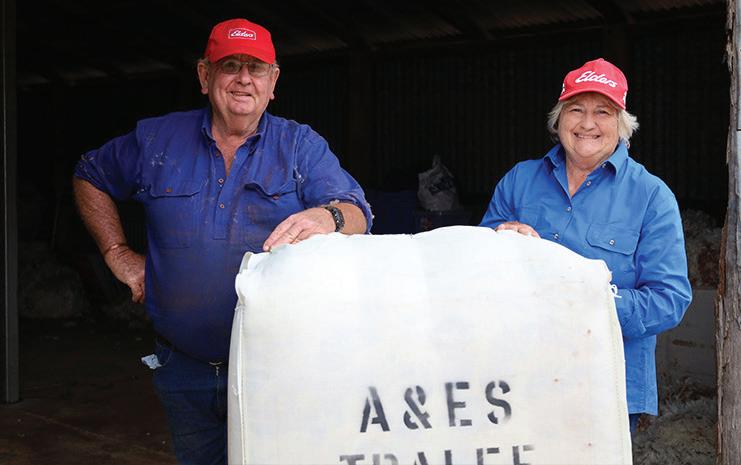
The Smiths’ property, Tralee Grazing, is a mixed farming enterprise located about 80 kilometres northeast of St George in Queensland.
The property was first purchased by Adrian’s parents in 1943, and Adrian and Ellen took over full-time after marrying in 1979.
Tralee specialises in Merino sheep production, of which they currently run approximately 5000. The Smiths also farm about 2000 acres of cereal crops and oats, but as Adrian explained, are increasingly turning to oats due to the nutritional benefits for sheep.
A big focus at Tralee is sustainability, prioritising responsible land management and soil health practices
and excellent animal health procedures, including not mulesing any of their sheep.
As a result, Tralee has been able to achieve SustainaWOOL Gold, Authentico and Responsible Wool Standard (RWS) certifications, with the help of the Elders wool team.
Adrian and Ellen say they are grateful for the contributions of their local Elders branch.
“Our relationship with the Elders branch in St George is a big bonus for us,” Ellen said.
“We’re very happy with Elders, they look after us well.”
To their advantage, Adrian and Ellen’s
greatest advisor and helping hand comes in the form of their Elders District Wool Manager, Brett, who is also their eldest son and a partner in the Tralee business.
Brett has brought a tremendous amount of knowledge and experience to Tralee, just as he does to other farms in the region.
He explained there are many benefits that wool growers can tap into by becoming accredited through a variety of programs.
“The standards just bring everything to a higher level,” he said.
“With increasing demand for certified wool, you can access more markets and create competition on your wool clip.”
40 eldersrural.com.au News
Adrian and Ellen Smith
EXTRA STRONG PREMIUM

For the protection of sheep for up to 29 weeks against strike by dicyclanil-susceptible strains of blowfly (Lucilia cuprina). For the protection of mulesing and marking wounds on sheep against strike by dicyclanil-susceptible strains of blowflies during the wound healing process. PAG Strikelab Extra contains 65 g/L of dicyclanil offering premium season long protection against flystrike.
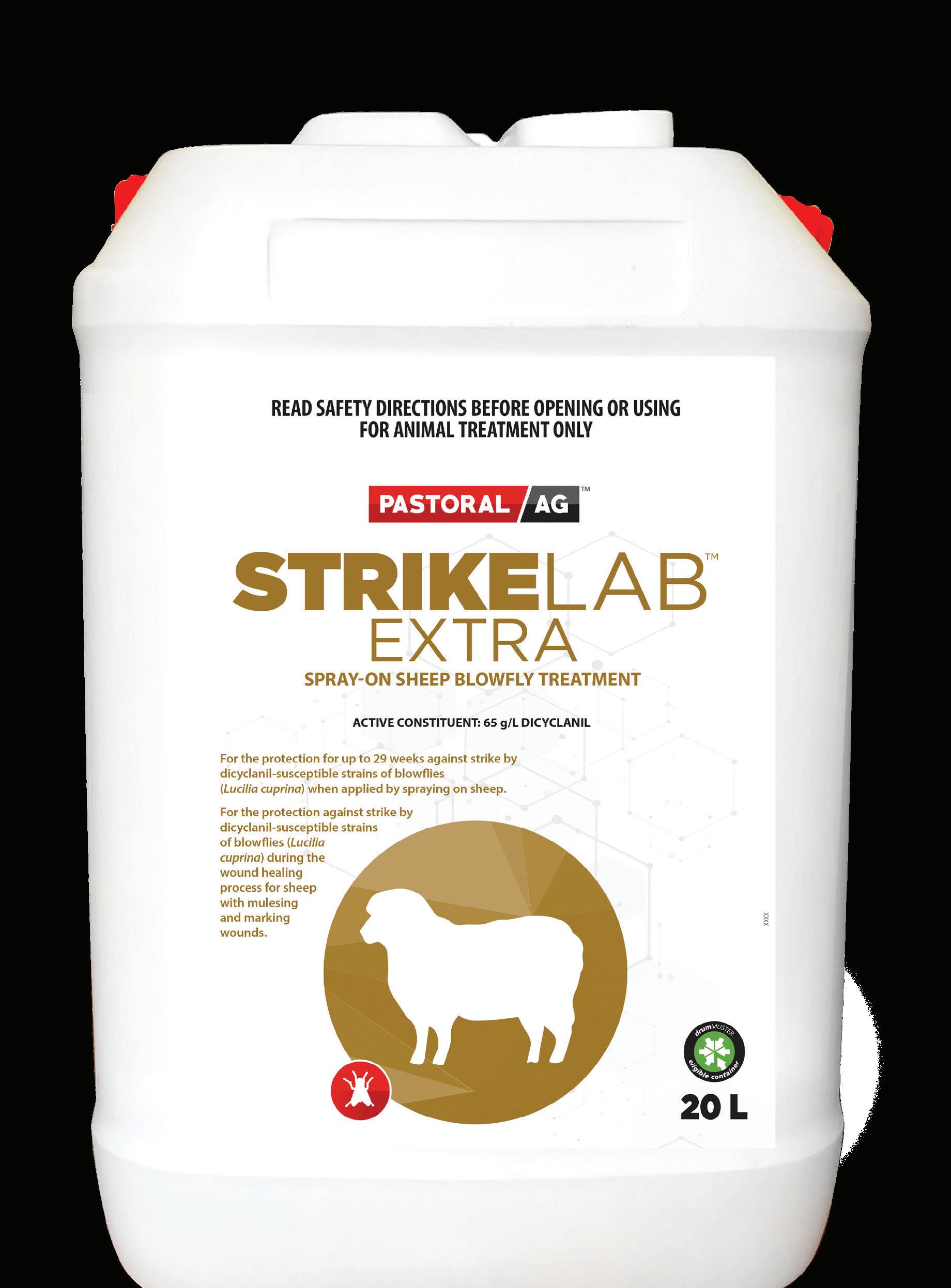
EXCLUSIVELY AVAILABLE FROM elders.com.au
For more information, visit pastoralag.com.au
20L DRUM
FLY PROTECTION NEW!
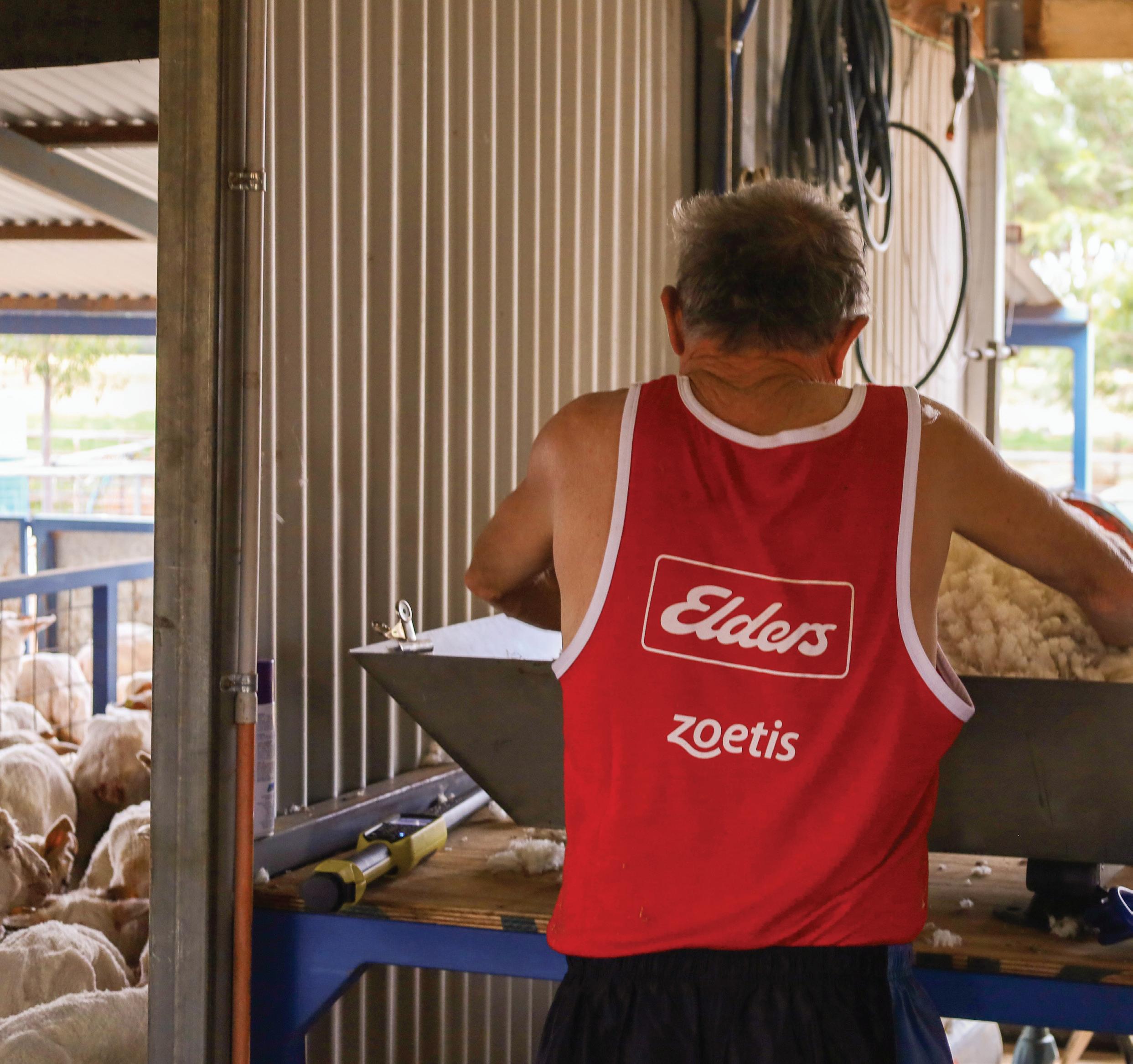

 Shearing day at Tralee
Sheep ready for shearing Elders selling centre
Shearing day at Tralee
Sheep ready for shearing Elders selling centre
Tralee Grazing is also currently taking part in a separate industry traceability trial known as eBale, which is run by the Australian Wool Exchange (AWEX). The trial is expected to increase efficiency in information handling and logistics.

Growers who participate in the trial use RFID and QR coding technology to give each wool bale a unique number, which is then loaded to the WoolClip mobile phone app.

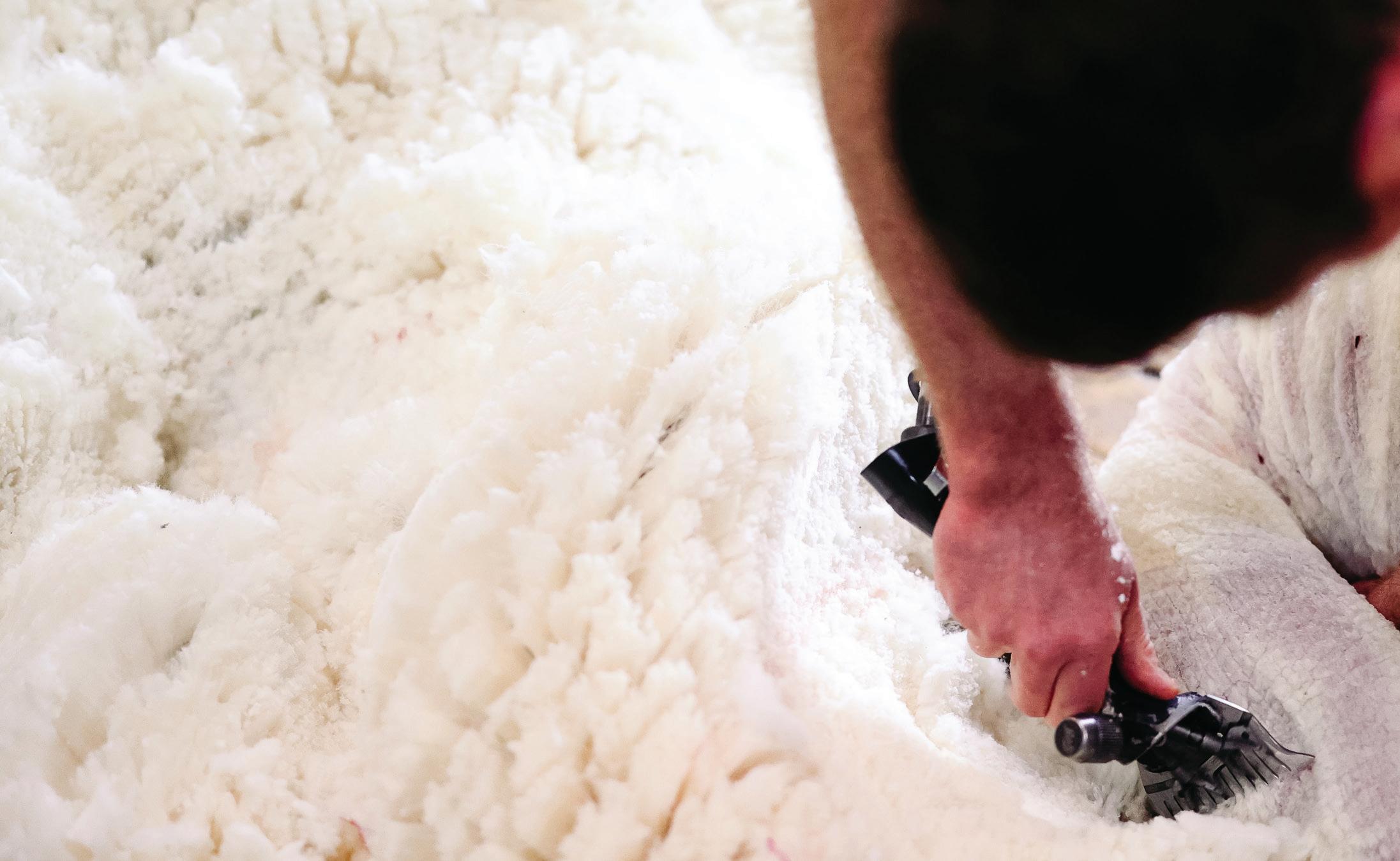
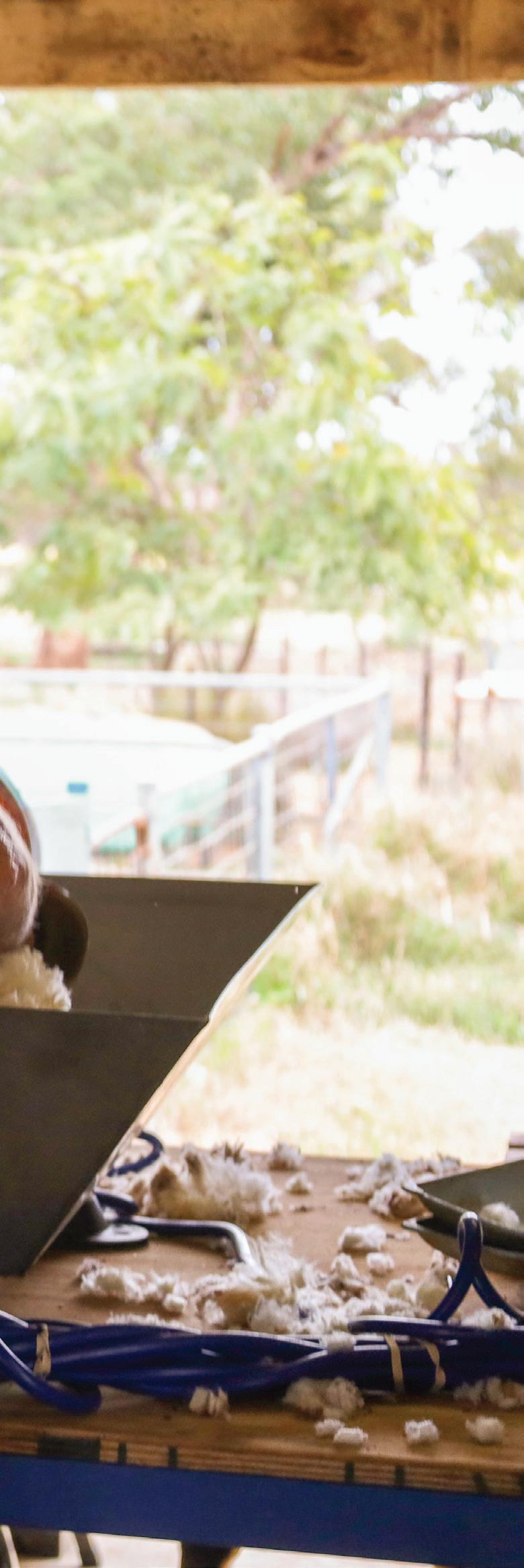
Adrian said that the trial has been a success so far for their business.
“The idea is that it is much more foolproof, it cuts out the problem of
incorrect entries in wool books, and classer specifications,” he said.
“I think it’s a much clearer way of doing things.”
Brett said there will also be benefits of this technology for the wider wool industry.
“It makes everything more streamlined, the whole process becomes much better for the grower, classer and even the exporter.”
If you’re interested in learning more about certification programs and innovation in the industry, contact your local District Wool Manager.
43 News
Adrian Smith (R) working alongside his son and District Wool Manager, Brett.
Shearing day at Tralee
A






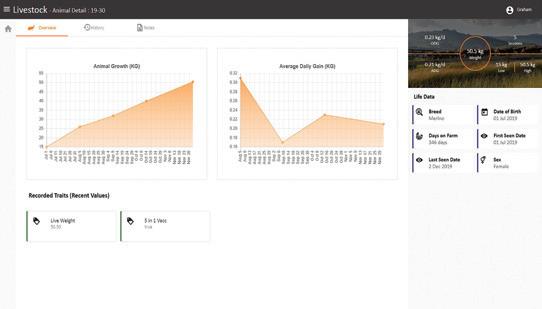



better
your animals. LEARN MORE Discover more at am.gallagher.com Take control of your data with an all-in-one hardware and software solution that allows you to track livestock performance, make better decisions and grow your profit.
app
view of
Animal Performance Web & Mobile
MAXIMISING USE OF ELECTRONIC ID TO DRIVE DATA-BASED DECISIONS
Australian governments have agreed to implement mandatory radio frequency identification (RFID) - or electronic identification (EID) tagging of sheep in Australia with a target implementation date of January 2025.
This has been compulsory in Victoria for some years now and many cattle producers already use the technology. RFID is typically used to improve tracing of animal movements from property to property and to update the National Livestock Identification System (NLIS) when these movements occur. It is a great tool for traceability, particularly if a disease outbreak was to occur.
But as many savvy producers know, RFID allows so much more than just simple traceability of animals. It allows producers to use the tag system to boost productivity through easy data management of weights and other traits and treatments of animals. This use of data allows farmers to make better informed decisions.
“As the technology has developed, we have moved from simple data collection in the reader hardware to having automatic syncing via the cloud to multiple platforms and access anywhere and anytime you want.” said Mike Hemsley, Animal Performance and Traceability Business Development Manager at Gallagher.
Gallagher’s Animal Performance Web and Mobile App allows producers to synchronise animal data and view on any web enabled device such as their personal computer or mobile and then make management decisions when and where it suits them.

"Gallagher offers a complete solution from reading the tag, capturing animal data such as weights and other treatments and providing software to manage this data to make better decisions,” said Mr Hemsley.
“We have tag readers, weigh scales and data recorders that are well proven in the field to capture this data and upload it to a cloud-based database," he said.
“But more so, we can now unlock the potential of captured data and have it available to view and edit from anywhere, at any time, on multiple devices”.
Mr Hemsley said the rapid development of features in the Animal Performance App is very exciting. “It allows producers to track and analyse animal performance with mobs and groups. These features let you run mob reports to see how your mob is performing; set weight targets and forecast your mobs weight gains and; compare mobs to benchmark performance”.
He said “Animals can also be categorised in groups, any way you want such as by sire group or vendor”. These groups can be used to guide buying and selling decisions or to create reports and draft lists right from the app to later be used in the yards.
In addition to measuring and monitoring group performance, the Gallagher Animal Performance solution, in conjunction with RFID tags, can be used to manage individual animals.
"This means farmers can keep records for individual weights, weight gains, condition score, breed, date of birth and pregnancy status," he said, all by using the tag to capture unique tag numbers as animals were weighed, treated or identified in a yard or race.
As an example, this can influence management practices, such as separating out multiple bearing ewes for preferential treatment over single bearing ewes, or splitting lambs into groups based on weights.
"Information about individual animals can be reviewed in the paddock in real-time, or later as required, and any movements of animals between properties can be sent directly to the NLIS database," he said.
To learn more about the power of the Gallagher Animal Performance and Traceability solutions, including the Animal Performance App, talk to your local Gallagher representative.
Ag Tech
45
The Gallagher Animal Performance App gives producers a great view of their animal data and the ability to work with that data anywhere, at any time, on multiple devices.
BUFFALO FLY COSTING THE AUSTRALIAN BEEF INDUSTRY
A recently published MLA report has revealed buffalo fly ranks number one on the list of the costliest endemic diseases affecting the Australian beef industry1. Buffalo fly is estimated to cost beef producers $111.7 million annually in lost production, emphasising the importance of effectively managing buffalo fly in areas where they are prevalent.
Buffalo flies (Haematobia irritans exigua) are small blood-sucking parasites that feed off cattle, biting their host up to 40 times a day. This causes severe irritation when at high levels and can also spread diseasecausing organisms resulting in pinkeye and lesions around the eyes and body of cattle. The distress this causes can disrupt grazing time and reduce hide value, resulting in serious welfare and production concerns.
Buffalo flies are prevalent in the northern regions of Australia, closer to coastal regions where conditions are more favourable for their development. Buffalo fly populations build up following an increase in soil temperature and frequent rainfall, typically in spring and summer. Young adult flies emerge from their pupal stage in the soil and seek out a host on which to live and feed.
“Interestingly, the MLA report indicated that seasonal conditions are driving buffalo fly to expand geographically. Fly challenge is becoming greater and lasting longer within a season” Kim Krilich, Brand Manager for Elanco Animal Health comments.
THE INCREASING CHALLENGE
The report acknowledged that controlling buffalo fly is becoming more challenging with increasing resistance development to available chemical treatments.
“This highlights the importance of strategically managing buffalo fly to minimise production losses” Mrs Krilich explains.
Insecticidal treatments remain the most effective way to control buffalo flies, but their use should be carefully considered.
Short-acting insecticides are ideal for use when buffalo fly pressure is low or at the start of the fly season to reduce their build up and provide short-term welfare benefits to affected cattle.

However, if fly pressure is predicted to remain high for a prolonged time, or cattle are showing signs of fly worry, long-acting chemical control methods such as insecticidal ear tags are more suitable.
Ear tags are recommended in beef cattle when there are more than 200 flies per head or in dairy cattle when there are more than 30 flies per head; this is the threshold at which production is typically impacted and cattle welfare is compromised.
Insecticide impregnated ear tags work by slowly releasing insecticide in a gradual and consistent dose across the body of the animal. Cattle rubbing against each other can also facilitate the spread of the insecticide. Insecticide ear tags are a practical, convenient, and effective way to chemically control buffalo flies in cattle.
“It’s recommended that chemical actives are rotated within a season and from season-to-season. This is an important consideration when planning your insecticidal treatments this season” says Mrs Krilich.
The active used in a short acting treatment applied at the start of the season should be different to that used in the ear tag.
“For instance, if a macrocyclic lactone (ML) drench has been used at the start of the buffalo fly season to control both internal parasites and buffalo flies, a synthetic pyrethroid (SP) ear tag such as Cylence™ Ultra or organophosphate (OP) ear tag such as Patriot™ or CoRal™ Plus should be used during the peak fly season. The following year, the ear tag active should be rotated.”
The correct use of fly tags as per the label directions is important in ensuring their efficacy and achieving best results. Applying too few ear tags or leaving them in beyond the published efficacy period can help to accelerate resistance development too.
If you would like further information on buffalo fly control programs or product advice, visit your local Elders branch or growsolutions.elanco.com.
REFERENCES
1. Shephard et al. (2022) B.AHE.0327: Priority list of endemic diseases for the red meat industry — 2022 update. MLA.
46 eldersrural.com.au Animal Health




Call in the reinforcements with Elanco’s Co-Ral™ Plus, Patriot™ and Cylence™ Ultra insecticidal tags. Win the battle with long lasting control for up to 4 months, so buffalo flies don’t erode your herd’s productivity. Tag. Protect. Profit. Contact Elanco on 1800 995 709 for more information Always read and follow the label directions. ©2022 Elanco or its affiliates. Co-Ral, Cylence, Patriot, Elanco and the diagonal bar logo are trademarks of Elanco or its affiliates. PM-AU-22-0700. Your
against buffalo fly
battle armour
FORAGE BRASSICA GROWERS SET TO BENEFIT FROM NEW INSECTICIDE OPTION
Challenges with caterpillar and Aphid pests in brassicas have long been an issue with growers trying to keep their Forage brassica crop clean and healthy in the lead-up to grazing.

Left unchecked, pests can quickly turn a healthy paddock into one with leaves riddled with holes, seriously affecting the quality and quantity of the feed.
In the past, growers have relied on
broad-spectrum insecticides to try to control the different pests. These options were known to affect key beneficial insects and have also led to some pests becoming resistant to the chemicals.
INTRODUCING EXIREL
Agricultural company FMC has recently released Exirel® insecticide to the Australian Forage brassica market
as an excellent control option for Cabbage white butterfly, Centre grub, Diamondback moth, Native budworm, Soybean looper and suppression of Grey cabbage aphid.
FMC Strategic Product Manager, Leandro Posteraro, said the registration of Exirel® was a powerful addition for Australian Forage brassica growers to wanting to keep their crops clean and maximise yields.
“Exirel® is a Group 28 option, so quite different from the insecticides currently being used in this space,” he said.
“It controls a wide range of caterpillar pests and also has activity against Grey cabbage aphid, so it is a cross-spectrum option for both chewing and sucking insects.”
Exirel® works on the muscle function of the pest so the insect stops feeding very quickly for almost immediate protection of the plant.
Mr. Posteraro said growers should regularly scout their fields to monitor for caterpillar eggs and larvae or for the presence of Aphids.
“Apply when insects damage first appear, and before a build-up of pest numbers. There is an option to apply two applications per season and backto-back sprays work particularly well.
“Exirel® works particularly well because it has translaminar and locally systemic action, meaning it will move through the leaf and target pests in hard-to-reach places.
“We would expect between ten and fourteen days residual activity from Exirel®, although growers often observe longer periods before pests re-emerge.”
48 eldersrural.com.au Crop Protection
NO EFFECT ON KEY BENEFICIAL INSECTS
Leandro said a key benefit of Exirel® was that it has little to no effect on key beneficial insects.
“This means the friendly bugs that pollinate or feed on pests are not wiped out. They can stay in the crop to help control the next generation of pests.”
Mr. Posteraro said beneficial insects such as Ladybirds, Lacewings and Parasitoid wasps feed on Aphids and caterpillars. Damsel bugs also target caterpillars and Hoverflies eat Aphids.
“Growers can use a highly effective insecticide for caterpillars and Aphids and leave the beneficial insects in the crop to continue their good work.
“There are many benefits of using an integrated pest management approach that combines Exirel® insecticide with beneficial insects.
He said Exirel® allowed a better balance between pests and their natural enemies for more efficient and effective pest management.”
It also has a low use rate and is supplied in a 10-litre container covering
approximately 66 hectares of area, or 33 hectares when applied back-to-back.
Mr. Posteraro said Exirel® has other benefits for growers, including an excellent health and safety profile.
“It has minimal impact to mammals, birds and fish, algae, and aquatic plants. With its good margin of safety, it is an excellent choice for applicators. Workers entering the field can do so after the spray has dried.”
Exirel® for Forage brassicas is available this season, contact your local Elders branch for more information.
Control pests in forage brassicas to increase yields
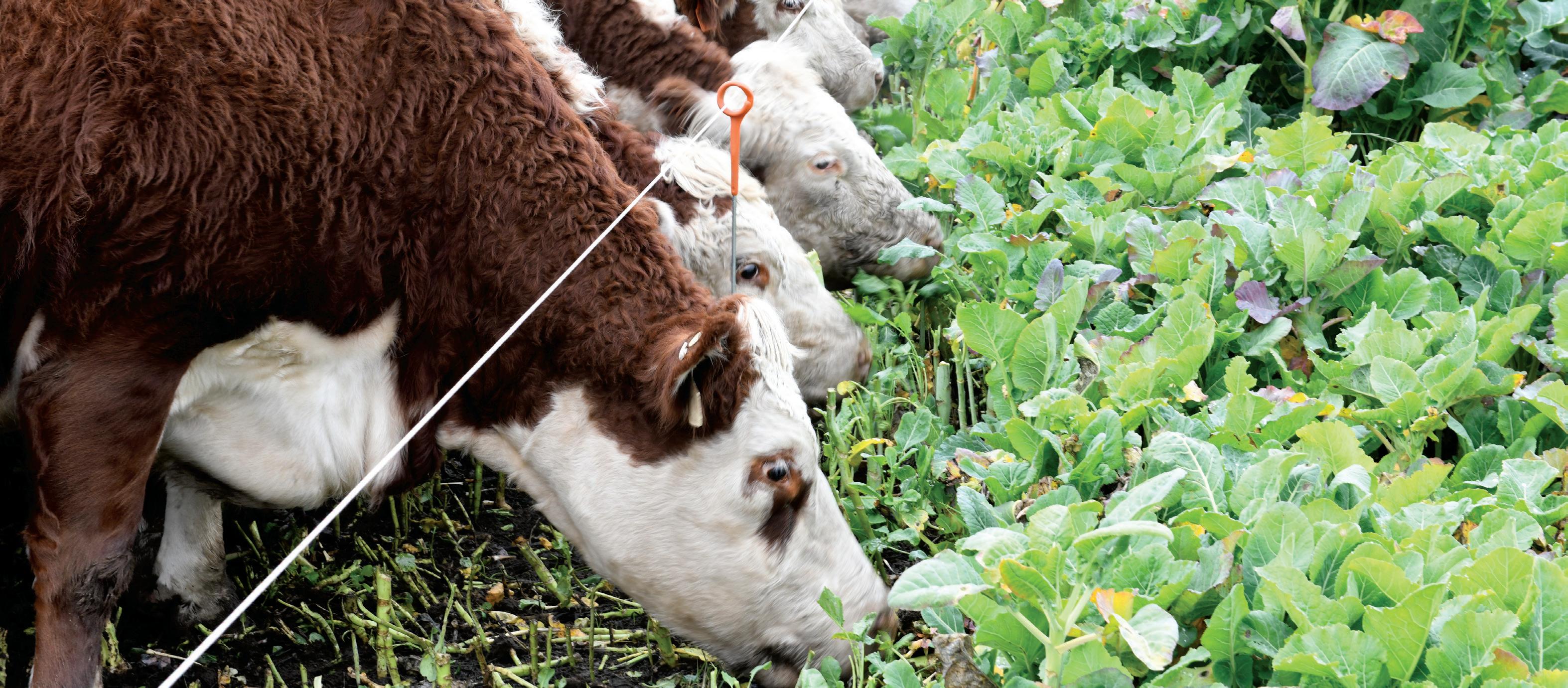
Caring for your crop at key times will help maximise yields and ensure your livestock get the most from the forage brassica crops. Exirel ® uses clever chemistry to protect forage brassicas from destructive pest like Cabbage white butterfly, Centre grub, Diamondback moth, Native budworm, Soybean looper and Grey cabbage aphid. It’s also gentle on key beneficial insects. Visit www.fmccrop.com.au for more information.
ALWAYS READ AND FOLLOW LABEL DIRECTIONS. Copyright © 2021. All rights reserved. The FMC Logo and Exirel® are Trademarks or Registered trademarks of FMC Corporation or its affiliates.
FMC Australasia Pty Ltd Phone: 1800 066 355 www.fmccrop.com.au

Crop Protection
MEASURING CANOLA POD STRENGTH AND ITS IMPACT ON YIELD
Canola varieties are routinely compared on the basis of trial results that measure a whole range of characteristics from their grain yield and oil content to flowering timings and average height.
One key characteristic that hasn’t traditionally been scientifically measured is pod strength: the durability and shatter-resistance of the variety’s mature pods.
Harvesting canola is largely about risk management, the resilience of the crop’s mature pods is an important consideration. There’s usually been a trade-off between trying to harvest high yields without allowing the crop to fully mature, because every extra day it’s left standing increases multiple risks: that pods will be shattered by wind or hail and that they will be so fragile a much larger amount of seed than usual is lost as they are windrowed or harvested.
With those risks in mind, growers generally accept that they will sacrifice a fair bit of potential yield to protect themselves against the possibility of considerable losses.
WHAT IF CANOLA COULD BE LEFT STANDING LONGER?

If growers can factor in exceptionally durable pods, the whole balance shifts in their favour. They can confidently leave canola standing longer and reap a range of potential benefits:
> Higher yields because the whole paddock has reached 100% maturity and maximum pod-fill.
> Minimal shattering losses if the weather gets hot and windy or a storm hits.
> Reduced mechanical seed loss as the crop is windrowed or harvested.
> Cost savings because they opt for direct heading and/or don’t need to spray the crop with a sealant.
> The opportunity to harvest more time-critical crops first and maximise the return on them as well as their canola.
The relative resilience of different canola varieties, and the value of sealant sprays, has been the subject of research for years.
However there has not been an objective system of comparing the pod strength of varieties. Now BASF have developed a testing protocol that allows the first objective comparisons to be made.
Each random impact test bounces 20 ripe pods against ball bearings in a container vibrating at 5 hertz for 90 seconds. Multiple tests are conducted for each variety to ensure statistical integrity.
Each variety earns a score out of 20 based on the average number of pods that remain undamaged across the repeated tests.

THE RESULTS
The results so far have confirmed scientific logic and previous observations: BASF’s InVigor® varieties with the PodGuard® trait are far more resilient than varieties without that genetic advantage.
“PodGuard is a genetic trait that is used
to strengthen the dehiscence zone of canola pods, which is the seam of the pod that typically splits to cause shattering,” explains David Pike, the Canola Breeder at BASF.
“The trait has been developed to strike the right balance between pod strength and harvestability, so we knew PodGuard varieties would have stronger pods than other varieties.” David says he hopes an immediate benefit of the testing will be that farmers growing PodGuard varieties will gain extra confidence in direct-heading or windrowing later.
“The latest research finding from a collaborative project between NSW DPI, CSIRO and GRDC has demonstrated that yield and oil is optimised when windrowing is conducted between 60 and 80% colour change,” he says. “We hope our customers will take advantage of their opportunities with PodGuard varieties by choosing to direct-head or wait that little bit longer to windrow when crops have reached full maturity across the paddock.”
For more information visit your local Elders branch.
50 eldersrural.com.au Crop Health




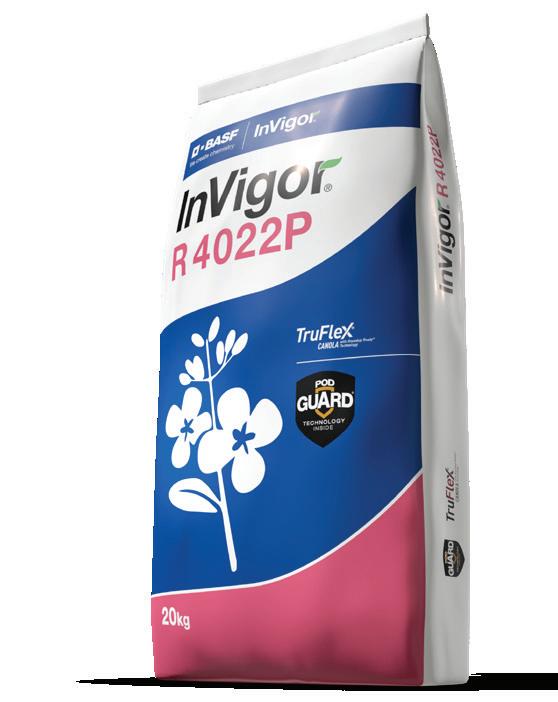

SHATTER YIELD RECORDS. NOT PODS. ALWAYS READ AND FOLLOW LABEL DIRECTIONS. © BASF 2022 ® InVigor & PodGuard are registered trademarks of BASF. * Registered trademark. 212769 10.2022 To find out more scan the QR code or call 1800 558 399 ® Grow varieties that combine outstanding pod strength with excellent NVT results.
YaraRega™
The top drop for fertigation

YaraRega water-soluble NPK compound fertilisers are developed specifically for delivery using pivot, sprinkler, low-tech drip or furrow irrigation systems. YaraRega features a special coating that protects granules during handling and storage yet dissolves readily in water. Delivering a balanced supply of plant-available macro and micro nutrients, YaraRega is suitable for use in a wide range of fruit and vegetable crops. Contact Yara and find out how YaraRega can turn your irrigation water into a top drop.

1800 684 266 au.sales@yara.com @yara_australia yara.com.au
©2022 Yara. YAR22575
FERTILISER WITH FLEXIBILITY
Global crop nutrition leader, Yara, has responded to worldwide farmer demand with a range of water-soluble NPK compound fertilisers developed specifically for multi-use delivery via irrigation systems or spreading.
YaraRega – whose name is derived from the Old Norse word for ‘rain’ – readily dissolves in water for easy and efficient application using pivot, macro and micro sprinklers, low tech drip or furrow irrigation systems.
It also has the added advantage of being able to be broadcast as a soil application prior to anticipated rainfall or irrigation.
Yara Crop Nutrition Commercial Manager, Paul Eitzen, says it’s a great concept, the technology means fertigation is now readily accessible to all vegetable and fruit growers.
The YaraRega range delivers a balanced and efficient source of essential macronutrients for optimal growth and quality with some also supplying micronutrients as well.
“As a compound fertiliser, there is no
nutrient segregation during shipping, handling or spreading.
“More importantly, they are highly water soluble and can be delivered via macro, micro and overhead sprinklers or furrow irrigation systems.
“This means fertigation is now a practical and cost-effective option for all producers.
“Alternatively, they can be broadcast as a soil application before anticipated rainfall or irrigation if required.”
TESTED IN THE FIELD
“We have received great feedback from farmers who have already incorporated YaraRega into their management program. They love having the one bag in the shed that can be used for multiple applications. “Standard” fertilisers are not designed for this type of use and often contain up to 20 percent ‘fillers’, coarse and insoluble particles that can block filters and drips.
“YaraRega has less than one percent insolubles and a special coating that protects the granule during handling and storage, allowing the product to be
handled using bulk bags while keeping the strength in the compounds to allow ease of spreading.”
Paul says the delivery of a balance of nutrients via irrigation systems can deliver higher yields compared to broadcast application of dry granules.
“In field trials at Yara’s Research Centre in Hanninghof, Germany, demonstrated when utilising an NPK compound fertiliser via irrigation significant yield increases can be obtained,” he says.

YaraRega complements the rest of the Yara range, including YaraTera watersoluble NPK crystalline fertilisers for use in hydroponic systems, YaraVita foliar micronutrient fertilisers, YaraLiva calcium nitrate fertilisers and YaraMila NPK compound fertilisers.
“With over 100 years of knowledge and expertise in plant nutrition, Yara can offer expert technical support and a range of decision-making tools and services to help growers get the very best results,” Paul says.
For more information visit your local Elders branch or call 1800 684 266
53 Fertiliser
HOW YOU CAN MINIMISE THE RISK OF ACIDOSIS IN FEEDLOT LAMBS

Feedlots and supplementing grain in paddocks are popular ways farmers can optimise growth rates, maintain condition and reach market weights when pasture availability is limited.
Grain assisting lambs during slow pasture growth is a great way to maximise production and profitability. However, feeding grain comes with its own set of challenges, including the risk of acidosis.
WHAT IS ACIDOSIS AND HOW CAN IT BE PREVENTED?
Acidosis, or grain poisoning, can occur when an animal eats high quantities of grain to which they are not accustomed to, and roughage is limited.
Grains are rapidly fermented by bacteria in the rumen, which produces large amounts of lactic acid, causing the rumen to drop in pH and become acidic. Low pH in the rumen over a long period of time inhibits intake and digestion. Signs of acidosis include depressed appearance, lying down, diarrhoea, dehydration, bloating (left side of abdomen), staggering and death (DPIRD WA).
With reduced rumen function, acidosis can also impact other functions due to mineral imbalances or deficiencies becoming increasingly worse, the longer the pH is below optimum.
HOW TO REDUCE ACIDOSIS?
To reduce the risk of acidosis, gradually introduce grain over a two-week period and provide good quality hay for roughage. Start with 100g/h/d via trail feeding or in an adjustable self-feeder and slowly increase by 50g per day until you reach desired intakes. If feeding 500g/h/d or greater, ensure you include a buffer into the grain, as well as a functional yeast product such as YeaSacc®, to reduce fluctuations in pH.
In addition, keep in mind that cereal grain is low in calcium relative to phosphorus and potassium, so a mineral supplement with good levels of calcium and vitamin B is essential to include in the ration.
Yea-Sacc, from Alltech, is a live yeast culture, which stimulates the bacteria responsible for both fibre digestion and acid removal.
Backed by 40+ years of research, YeaSacc’s mode of action is to seek out oxygen within the rumen, creating an anaerobic environment favourable for the fibre-digesting and lactic acidutilising bacteria. This leads to more efficient digestion, increasing average daily weight gain as well as stabilising the rumen pH and reducing the risk of acidosis.
Alltech Lienert’s Blueprint Sheep 50
Concentrate pellet is a balanced vitamin and mineral concentrate pellet for optimum performance of feedlot sheep and lambs, when added to grains. It has been formulated to contain all essential vitamins (A, D, E and B group), Bioplex® (chelated) organic trace minerals and Yea-Sacc, to reduce the risk of acidosis.
Blueprint Sheep 50 Concentrate also contains an Ionophore (Bovatec 20CC), to prevent coccidosis. The pellet should be included into feedlot rations at 50kg (2x25kg bags) per tonne of finished feed.
Contact your local Elders branch for more information or assistance with your feedlot ration formulation.
54 eldersrural.com.au Animal Health
Promotes rumen stability
Improves feed efficiency
Optimises rumen function
Enhance digestibility and mitigate feed waste with
When seeking to control feed costs, producers need to ensure that ration formulation does not compromise rumen performance. Sub-optimal rumen function will lead to wasted feed and a slower growth response.
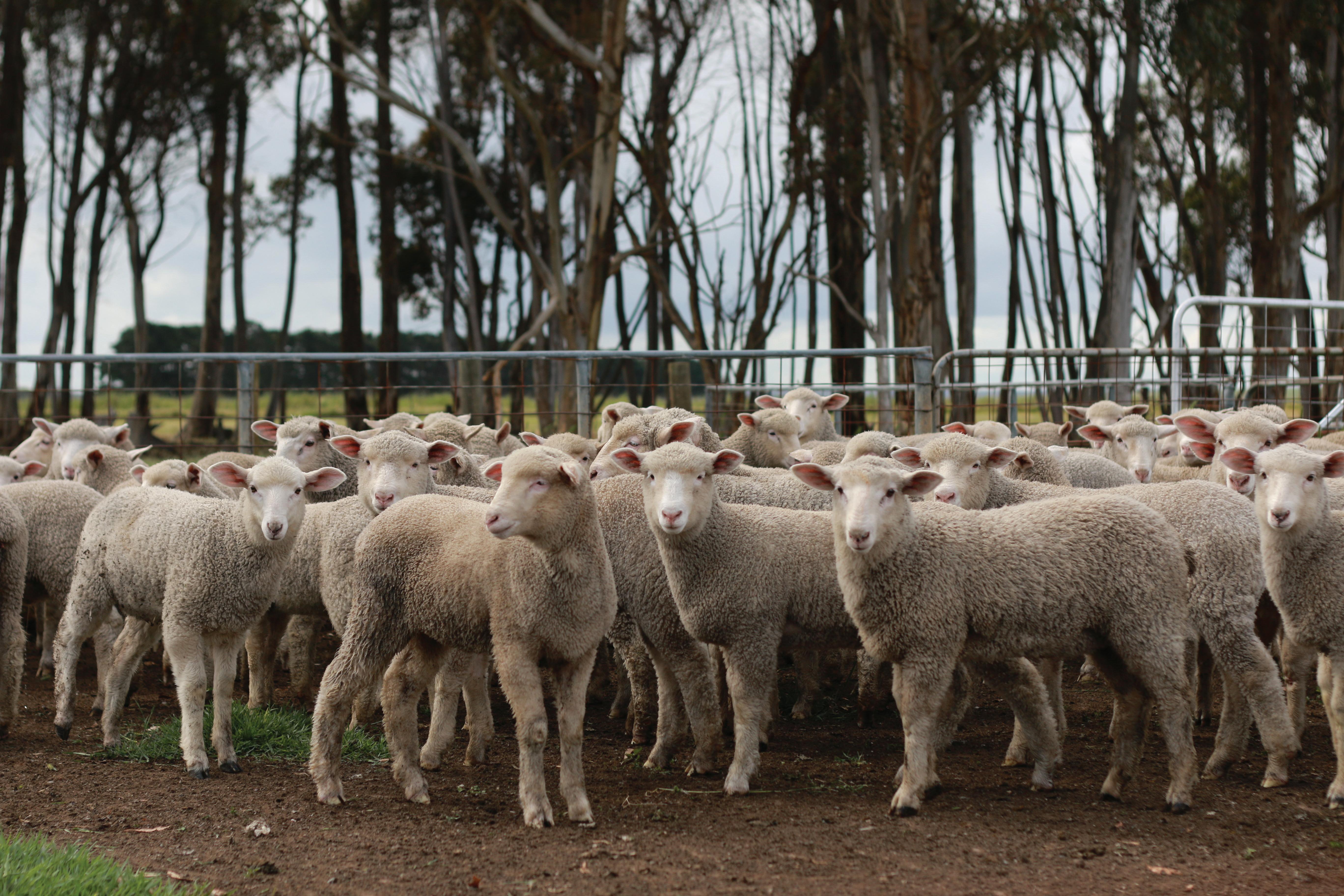
Backed by 40 years of research, Yea-Sacc promotes rumen stability, helping animals avoid the wide variations in rumen pH that can interfere with fibre digestion and feed intake. Through optimised feed utilisation, Yea-Sacc allows more energy to be available to support weight gain and less is lost to the environment.
Contact your local Alltech Lienert representative about including Yea-Sacc in your animal’s diet.
Supported by 230 research studies globally

Alltechlienert.com.au

MOHAKA AR37
TETRAPLOID HYBRID RYEGRASS
A genuine oversowing option with the added persistence and insect protection from AR37 endophyte.
Available within our Agricom portfolio, this broad leaved, persistent, densely tillered tetraploid hybrid ryegrass features high rust tolerance, cool season growth and, a +20 flowering date for high quality feed into late spring.

DLF SEEDSYOUR ENDOPHYTE EXPERTS
AR37 endophyte takes ryegrass pasture persistence and protection to a premium level.
Pests controlled: Argentine Stem Weevil, Pasture Mealy Bug, Adult Black Beetle and Root Aphid.
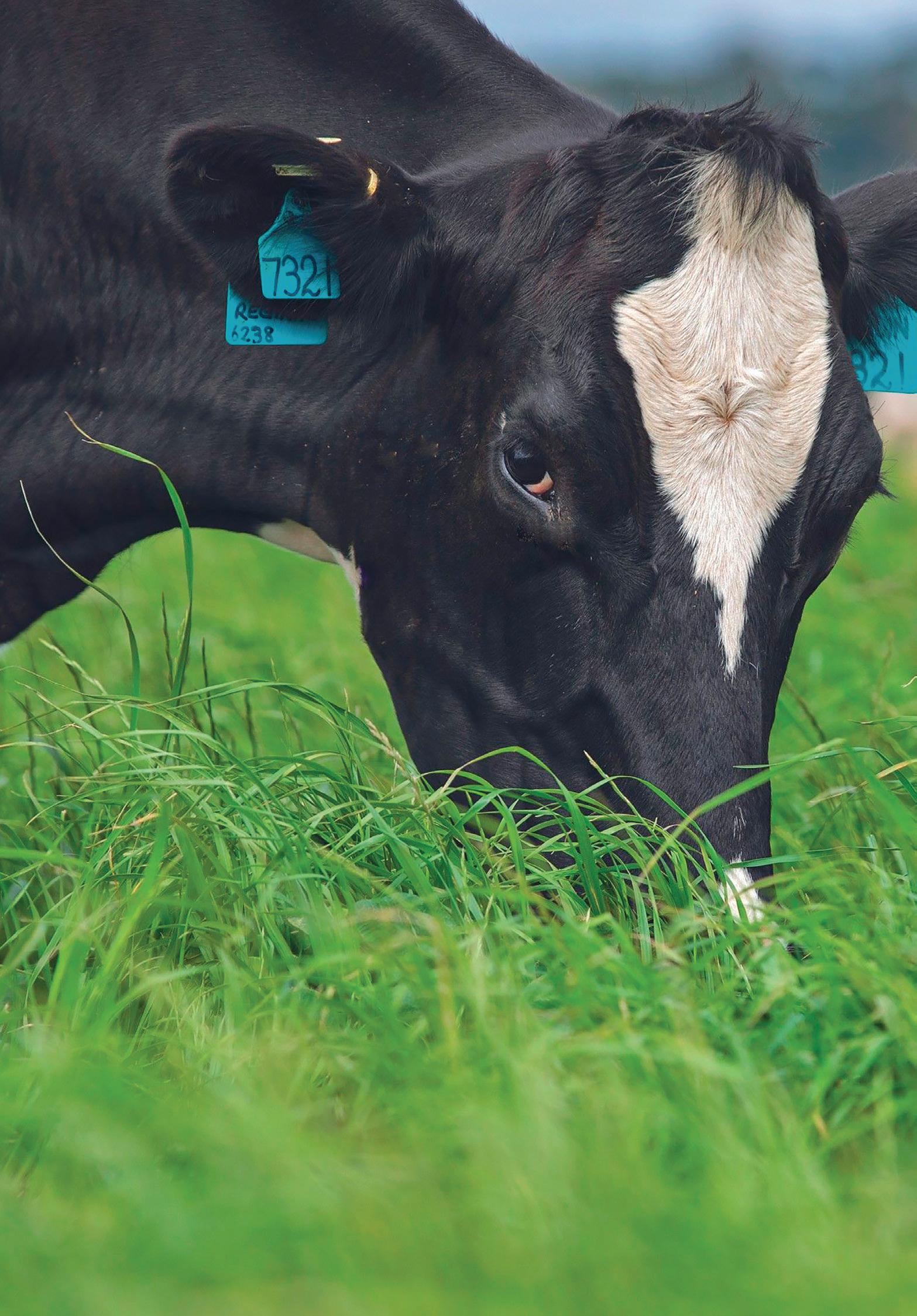
dlfseeds.com.au | 1800 619 910
WET CONDITIONS - WHAT TO DO WHEN YOU NEED FEED
With extremely wet conditions across much of Australia, farmers along the country's eastern seaboard are waiting for paddocks to dry out to sow a crop for summer feed.
By the time paddocks dry out, sowing may be a little later than usual, which is why we recommend considering both variety and paddock selection for your late sow.
Variety Selection: A late sowing of a high-performance brassica such as Pallaton Raphno® could pay off.
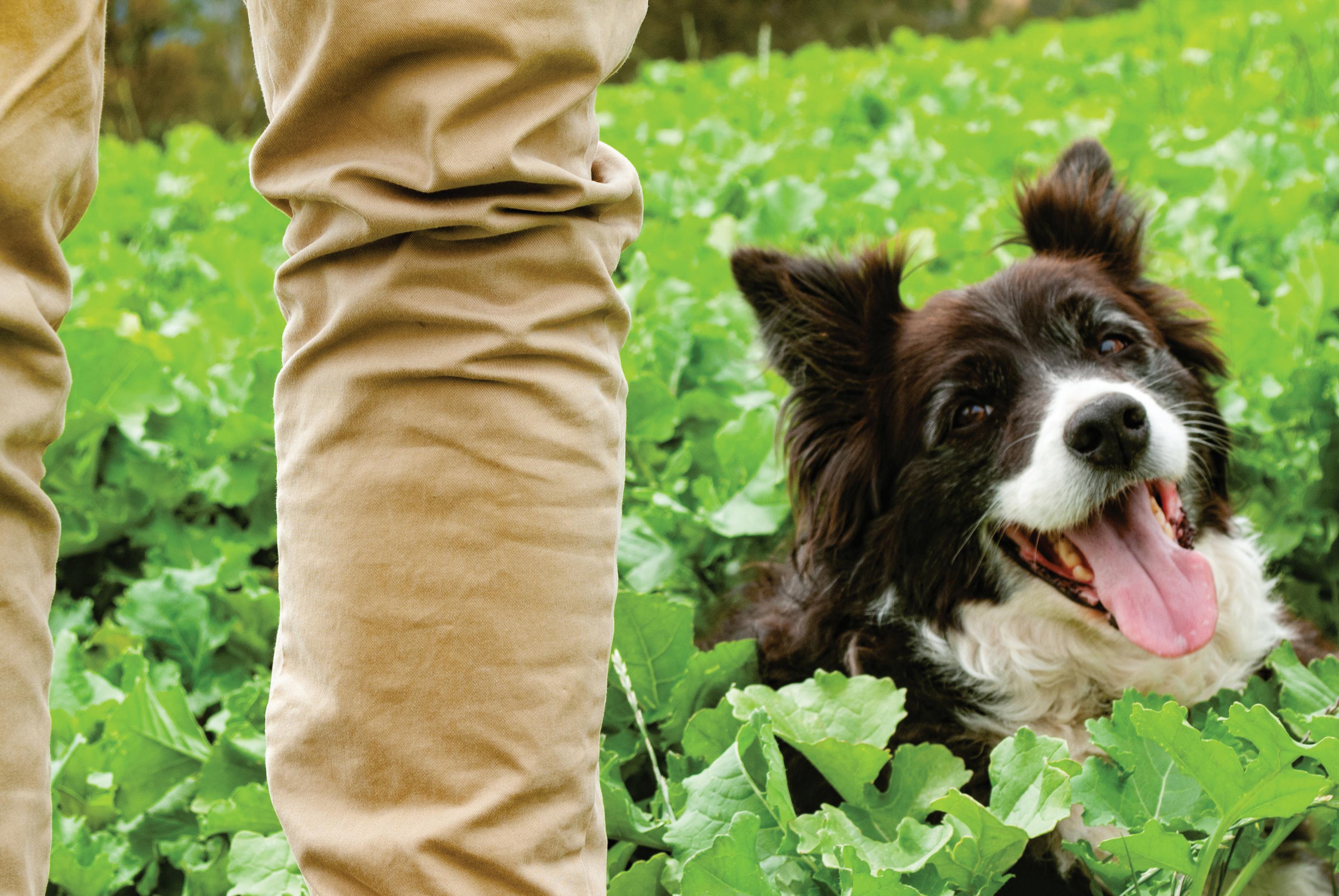
With outstanding water use efficiency, Pallaton will put that excess soil moisture to use and is an excellent option when sowing later in the season. Pallaton will provide bulk summer feed to get farmers right through to winter, providing a great alternative to cereals or dual-purpose canola.
Isaac Berry, DLF Seeds Product Development Manager, agrees that Pallaton is an excellent alternative to cereals or dual-purpose canola as it was bred specifically for grazing.
"Pallaton's fit into the region’s growing dual-purpose canola looks very
promising, and it is complementary to these mixed cropping systems," he said.
Nigel Roberts, Dunbogan Sheep Stud in NSW, regularly uses Pallaton as an alternative to grazing canola.
"I use a fair bit of grazing canola as well and Pallaton is similar quality-wise, but unlike the canola, which is locked up in July, it's available through winter and spring," he said.
Pallaton is an excellent option for experienced brassica growers as it takes their operation to the next level, helping to achieve 5+ grazing’s with recommended management and ideal conditions.
Pallaton is a raphanobrassica, a hybrid between Brassica oleracea (kale) and Raphanus sativus (radish). It is high yielding and offers flexible grazing as early as 56 days after sowing but can be deferred up to 100 days after sowing. It is persistent under multiple grazing's, highly palatable to stock, high yielding, aphid tolerant and takes lamb finishing and brassica operations to the next level with high liveweight gains.
A Spring sown brassica (such as Pallaton) can be sown into the paddock at 16 degrees and rising in late November or December. With a wet summer predicted, a forage brassica such as Pallaton can utilise the complete soil moisture profile while in crop control of summer weeds can be conducted.
PADDOCK SELECTION
When selecting your paddock for late sowing, remember to look for better drained paddocks with no major wet areas and consider the quality of the paddock before the excess moisture.
An application of Nitrogen may be required as waterlogging and pugging can contribute to low Nitrogen levels, especially if the Nitrogen levels in the paddock were low before the excess rainfall.
By selecting the correct paddock and variety it is possible to still get a good crop from a late sowing.
For more information on options for late sowings and Pallaton Raphno visit your local Elders branch or contact your local DLF Seeds Sales Agronomist on 1800 619 910 or visit us at dlfseeds.com.au
57 Seed
ANNUAL LEGUME REVOLUTION
Evolving farm systems in Australia are leading to an increased use of legumes in both livestock and broadacre farming, providing benefits of increased animal and crop production, improved soil quality, and reduced fertiliser costs.

It is well known that nitrogen is one of the main drivers of production in grass pastures and non-legume arable crops.
White and subterranean clover are commonly used in grass pastures, while lucerne is often used to improve soil condition parallel with providing valuable forage, and broadacre farms use legume crops in their rotations.
Many farmers are now in the process of adapting their farm systems to capitalise on the changing livestock market, or to maintain or improve the soil condition on their properties.
In recent years, on-farm demonstrations by S&W Seed Company have helped to identify which legumes are best suited to different regions, soils, and farm systems.
This has been of particular benefit in regions where pastures have traditionally been grass-dominant and cover crops have not normally been practiced.
TRIAL SITES IN NEW SOUTH WALES
One of these sites was established at Upper Bingara in northern NSW in 2021, with the challenge of finding which legumes could be added to subtropical and winter-active perennial pastures. Yield measurements allowed nitrogen fixation quantities to be calculated based on previous research.
The 18 varieties tested yielded between 4 and 8 tonnes of dry matter per hectare, per year and 100 to 210 kilograms of nitrogen, worth up to $500 of fertiliser. This nitrogen accumulated
in the soil can increase production from companion grasses by 1 to 3 tonnes per hectare, per year.
Just as significant is the benefit these legumes have on animal production. Sheep and cattle weight can only be maintained on grass-dominant pastures. Whereas the incorporation of legumes provides faster weight gains and a more palatable and digestible feed for livestock.
They can also contain beneficial compounds that reduce bloat risk. This effect can transform grass-dominant pastures where animal weight can only be maintained, into pastures that can grow animals quickly, allowing livestock farms to take advantage of the profits from growing their own cattle and sheep to higher weights and value.
Species that performed in the northern NSW slopes region included the clovers Zulumax Arrowleaf, Border Balansa, Renegade Red Clover, and Cavalier and Emperor Medic.
SUCCESS FURTHER NORTH
Similar sites in southern Queensland have also identified legumes that can be added to new and established subtropical pastures. Farmers are keen to reap the benefits from increased grass growth, particularly the boost to feed quality and the amount of grazing they get through winter when the grasses have stopped growing and lose quality.
Species performed well in southern Queensland included the Penfield and Emperor Barrel Medics, Bindaroo Button and Silver Snail Medics, and Sardi Persian Clover.
One site was monitored for two years and showed prolific regeneration from seed set in the first year. This highlights that many of these hard-seeded annual
legumes can be maintained for many years from a single planting.
Some broadacre farms are trying to improve soil quality, and winter-active legumes have a key role in cover crops. As well as adding some nitrogen to soils for following crops, they also host and feed soil microbes that the cash crop would not favour, while also reducing soil erosion. Soft-seeded and shallow rooted species can be used to avoid regeneration in following crops and minimise soil moisture loss in the crop root zone.
Legumes are also adding value to winter forage crops. In a trial that Kate Connolly, Elders Goulburn, ran in 2022 in conjunction with S&W Seed Company Australia, she found that adding Enduromax Balansa Clover and Subzero Forage Brassica to oat and wheat crops produced gains in both feed quality and crop yield.

Vetch has also become popular in blends with forage cereals as farmers have discovered improvement to feed quality at grazing and in hay. S&W Seed Company supplies over 70 legume varieties, ensuring a suitable solution for most environments and farm types throughout Australia. Talk to your Elders agronomist about the best options for your enterprise needs.
For more information on legume rotations visit your local Elders branch.
Kate Connolly, Elders Goulburn
58 eldersrural.com.au Seed
Gavin Milne explains legume options at the S&W Breeza Research Farm, NSW




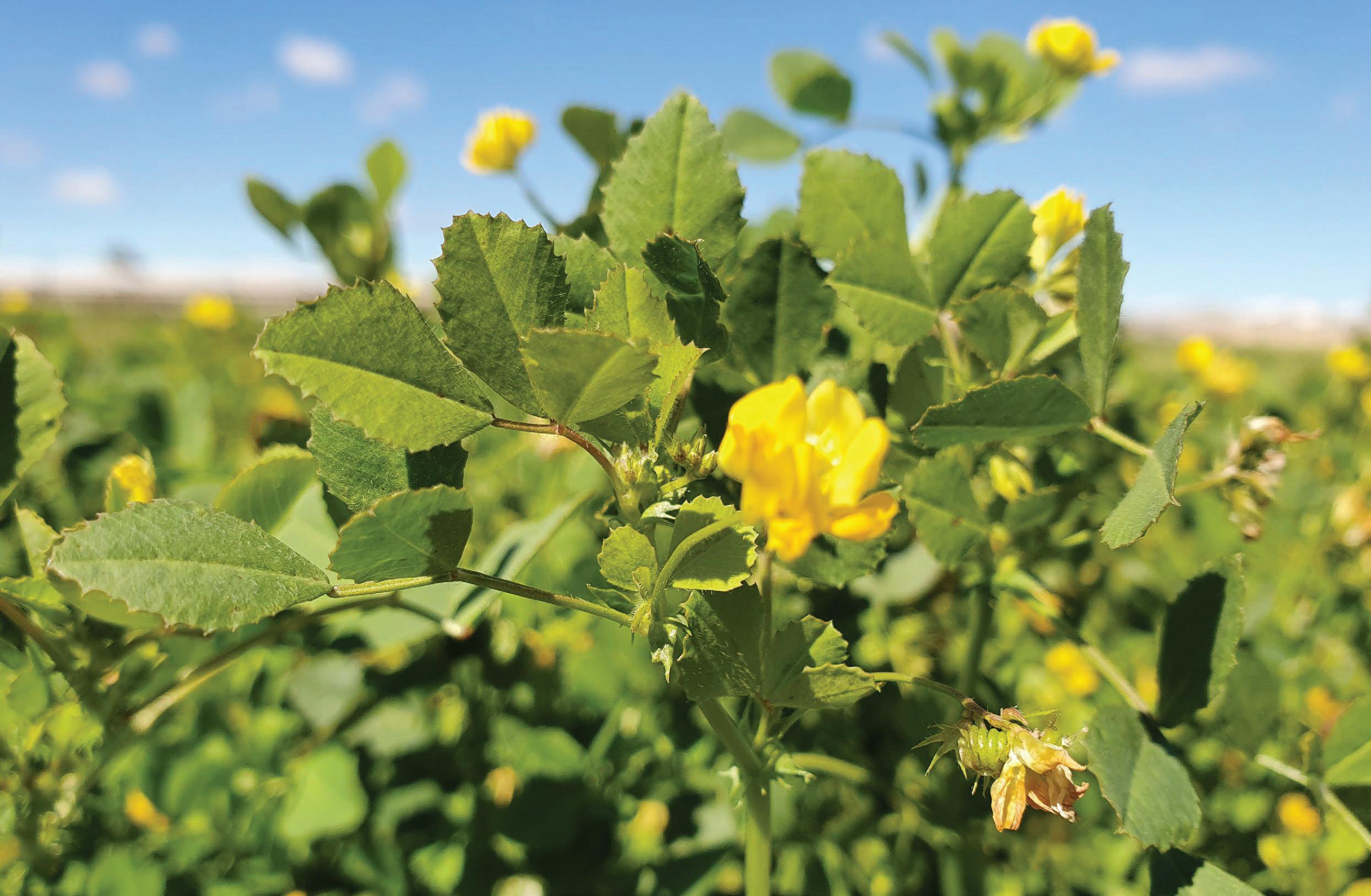

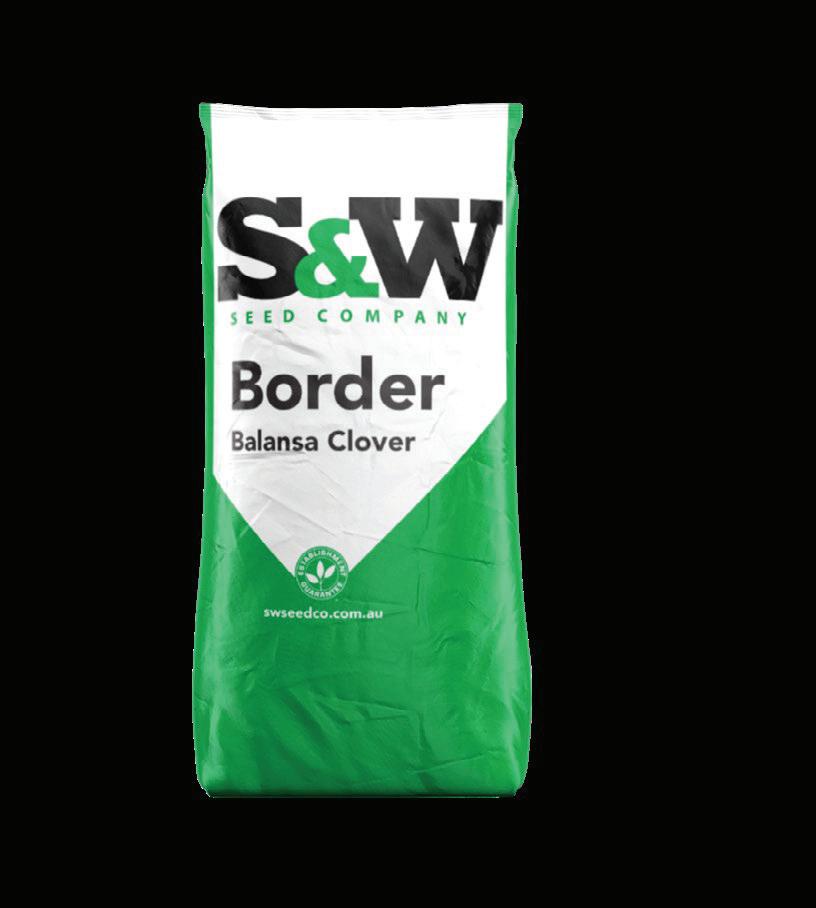
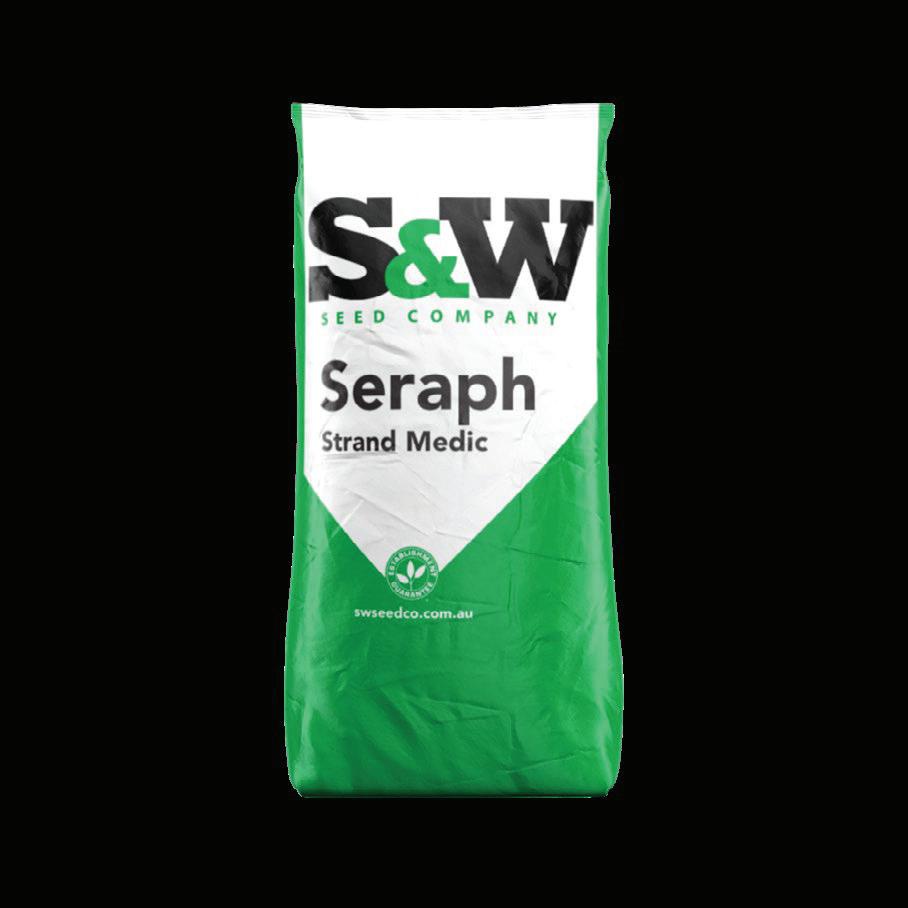

Renegade Red Clover Trifolium pratense Big yielding, short-term red clover Seeding Rate kg/ha Dryland 3-4 High Rainfall/Irrigation 5-8 Seed Treatment Goldstrike® Usage Grazing and hay production Features & Benefits Erect growing ‘hay type’ High yielding Good disease tolerance Excellent hay type for top end forage yield and annual mixes Seraph Strand Medic Medicago littoralis Powdery mildew resistant, SU residue tolerant strand medic Seeding Rate kg/ha Dryland 10-15 High Rainfall/Irrigation 15-20 Seed Treatment Goldstrike LongLife® Usage Regenerating annual pastures Features & Benefits Excellent early vigour and winter production Tolerant to SU herbicide residue and resistant to powdery mildew Good adaptation to alkaline sandy loam in low rainfall Palatable at all growth stages NEW RELEASE Border Balansa Clover Trifolium michelianum Mid-maturity balansa with excellent persistence Seeding Rate kg/ha Dryland 4-6 High Rainfall/Irrigation 8-12 Seed Treatment Goldstrike® Usage Grazing and hay production Features & Benefits Heading date similar to Paradana High hard-seed levels Waterlogging tolerant Excellent regenerating annual for late season environments with wet winters Highly digestible feed source SARDI® Persian Clover Trifolium resupinatum Hard-seeded type with mid-maturity Seeding Rate kg/ha Dryland 5-8 High Rainfall/Irrigation 10-15 Seed Treatment Goldstrike® Usage Regenerating annual pastures Features & Benefits Highly digestible forage legume Tolerant of waterlogging Hard seeded Persian clover ‘resupinatum’ type Excellent feed conversion for grazing animals LEGUMES Planting Guide www.swseedco.com.au Your partner in the paddock. SW0322
Chile / SQM
Average CO2 emissions for potassium nitrate products around the world
The 0.55 value corresponds to DNV’s certification obtained in 2021, according to the data provided by SQM. The production facility is located in the Atacama Desert in northern Chile where the chemical is produced by the global producer and supplier SQM.


The 0.55 value corresponds to DNV’s certification obtained in 2021, according to the data provided by SQM
The dataset is representative of potassium nitrate production in Europe. SQM equivalent value is considering agricultural grade.
CO2-Eq Potassium Nitrate Rest of world This dataset is a weighted average built from the following geographies: China, North America and Europe.
sqmnutrition.com
Potassium Nitrate 1.62 Kg CO2-Eq 0.55 Kg CO2-Eq Europe
Potassium Nitrate, Agriculture grade (cristalized) Chile / SQM
2.21
2.00 Kg
2.29 Kg CO2-Eq Kg CO2-Eq Potassium Nitrate Potassium Nitrate North America China
considers shipments to ports in
and
according
than any other
producer in the industry. potassium
production
emits at least
The dataset is representative of potassium nitrate production in North America. The dataset is representative of potassium nitrate production in China. *Calculation
North America
Europe,
to SQM data and based on the footprint certified by DNV of 0.55 kg CO-Eq. **Data gathered from Ecoinvent 3.7.1. dataset documentation (https://ecoinvent.org/)
KNO3
nitrate
process
116 less kg CO2 per ton SQM’s % Our carbon footprint emits at least 116% less kg CO2 per ton than other potassium nitrate producers. (equivalent to SQM product at destination)
Potassium Nitrate, Agriculture grade (cristalized)
0.55 Kg CO2-Eq
The lowest
KNO3 with less CO2 emissions Naturally Better
footprint
ULTRASOL ® INE K PLUS PROVIDES THE OPTIMAL AMOUNT OF IODINE TO THE CROP

Most agricultural top soils and irrigation water contain very low concentrations of iodine, and it is often not available for plant uptake. From March to July 2022, SQM collected water samples in SA, VIC, NSW and QLD and analyzed iodine content: 27 out of 29 samples collected in these states contained less than 1 micromole iodine per liter (µmol/L} of water (<0.13 ppm), with no correlation between content and location.

A deficiency of iodine in plants is predicted to cause yield losses, similar to deficiency of any other plant nutrient. These are conclusions based on recent scientific research (Kiferle et al., 2021)
supported by SQM, a company with a long history in providing the world with iodine and fertilizers from the Atacama desert in Chile. This research enabled the lnternational Fertilizer Association (IFA) to add iodine in the list of beneficial plant nutrients in 2021.
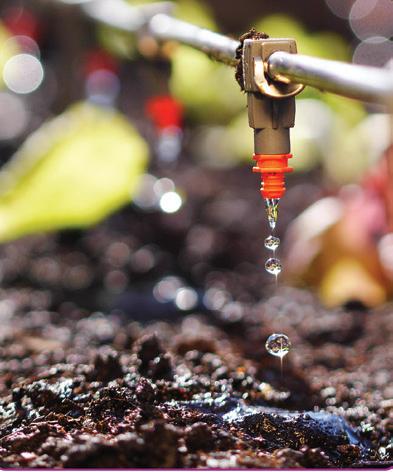
For optimal crop production, iodine should be supplied to crops at the right dosage. Ultrasol®ine K Plus contains two macronutrients essential for plants, potassium and nitric nitrogen, and in addition, iodine.
Since potassium and nitric nitrogen are applied in well-defined proportions, Ultrasol®ine K Plus also guarantees the administration of an adequate dose of iodine in all crop stages. This makes it easy for the farmers to ensure the right amount of iodine in the nutrient solution, and to prevent excess uptake of iodine in leaves or fruits.
For more information contact your local Elders branch or email spn-pacific@sqm.com
REFERENCES
Evidences for a nutritional role of iodine in plants. C. Kiferle, M. Martinelli, S. Gonzali, S. Beltrami, P.A. Salvadori, K. Hora, H.T. Holwerda, A. Salzano, A. Scaloni, P. Perata. January 2021, Frontiers in Plant Science, DOI: 10.3389/ fpls.2021.616868
AT A GLANCE
Plants need iodine:
■ 48 genes in shoots and 531 genes in roots are uniquely regulated by iodine in the nutrient solution
■ At least 82 proteins in leaves and roots contain iodine lodine is needed for:
■ Timely flowering and fruit production
■ Photosynthesis and sugar production = increased biomass
■ Root growth, defense from stress and calcium signaling

61 Crop Health
Win - win
Only Marks-Min® combines B12 + Trace Minerals in a single dose to save you time and money. Optimise herd health, production and fertility. Save substantial time and money. Marks-Min® is the win-win cattle producers have been looking for. It combines copper, selenium, zinc, manganese and B12 in one convenient, easily absorbed injection. At critical times like calving, mating and drying off, it can provide a vital health and production boost in half the time with the benefits of both B12 and trace minerals in a single injection. Visit marksmin.com.au


*See product
label for full
details and
for use.
Level 1,
FOR CATTLE PRODUCERS of the
claim
directions
Boehringer Ingelheim Animal Health Australia Pty. Ltd.,
78 Waterloo Road, North Ryde, NSW 2113 Australia. ABN 53 071 187 285. MARKS-MIN is a registered trademark
Boehringer Ingelheim Group. ©2022 All rights reserved. AU-BOV-0076-2022
INDUSTRY STALWART MALCOLM HUNT HANGS UP BOOTS

Long-standing industry name and Elders Executive General Manager National & Victoria/Riverina, Malcolm Hunt, has this month retired from the company to devote more time to family and other pursuits.
Mr Hunt leaves an admirable legacy after serving the agribusiness sector since 1979 and Elders for over thirty years. He served on the boards of AWEX, Livestock Markets Ltd in South Australia and AWH Ltd.
Mr Hunt commenced his career in 1979 as a trainee at Australian Estates
in Melbourne and says he fondly remembers working with woolgrowers and pastoralists throughout Victoria, NSW, South Australia and Tasmania.
“I have had the opportunity to work with many wonderful people, staff and clients, in this great Australian industry. I consider it a privilege to have been able to play a part in Elders’ resurgence over this past decade,” said Mr Hunt.
Elders Managing Director & CEO Mark Allison says Mr Hunt was instrumental in the turn around of Elders through the
implementation of the company’s Eight Point Plan strategies.
“Under Malcolm’s leadership in the zones and the network, Elders have achieved extraordinary growth and welcomed many new talented people into the business,” Mr Allison said.
“He rightly occupies a statesman like leadership position within Elders and the industry more broadly. He is not only a colleague, but a part of the Elders family, who has made a significant contribution to us for many years.”
63 News
CYCLONE N-SURE EXCLUSION GATES
N-Sure Exclusion gates. New needs, same great gate.
Exclusion fencing is increasingly being used in Australia as a tool to protect farming and cropping enterprises from the threats posed by feral animals.

With new biosecurity alerts threatening Australia’s farming industry, it’s no surprise the importance of having quality feral proof fencing in place when it comes to protecting your bottom line.
With plenty of exclusion fencing options on the market, it’s easy to buy the right posts, wire & fencing accessories for your feral fence, but what about the gate?
When it comes to excluding feral animals, if you don’t have the right gate in place, it can be seen as a weak point in your fence. This can be due to weaker mesh inserts, poor vertical load carrying capacity or gates being too short.
Cyclone offer a range of N-Sure exclusion gates that are packed full of quality features designed to help protect your farm against feral animals. These features include:
> The Welded mesh insert features bands of graduated mesh with horizontal wire spacings from 32mm at the bottom of the gate to 100mm at the top of the gate delivering improved strength and security. This increased density of strands in the lower part of the gate helps prevent animals from breaching your gate.
> 5mm wire mesh thickness
> Produced from Australian Standard 25NB hot dipped galvanised pipe both inside and outside the pipe for corrosion resistance, with a wall thickness of 2mm.
> Welded collar attached at hinge end to increase compatibility with a broader range of gate hardware, including Brooker hinges.
> Full notch weld construction for added strength.
> Top and bottom 3mm patented steel plate gussets add vertical load carrying capacity at the freeswinging end of the gate, reducing gate sag and increasing the ability to absorb downward pressure from larger livestock.
The exclusion gate includes an added feature of extra height for greater security. Available in 1500mm, 1670mm and 1800mm height variations.
Make sure you have the right gate for your exclusion fencing needs – Choose a Cyclone N-Sure exclusion gate!
For more information on Cyclone N-Sure gates, gate fittings or any other gate products in the range visit your local Elders branch. To view the range online visit www.cycloneproducts.com.au or call Cyclone customer service 1800 199 450.
64 eldersrural.com.au Fencing
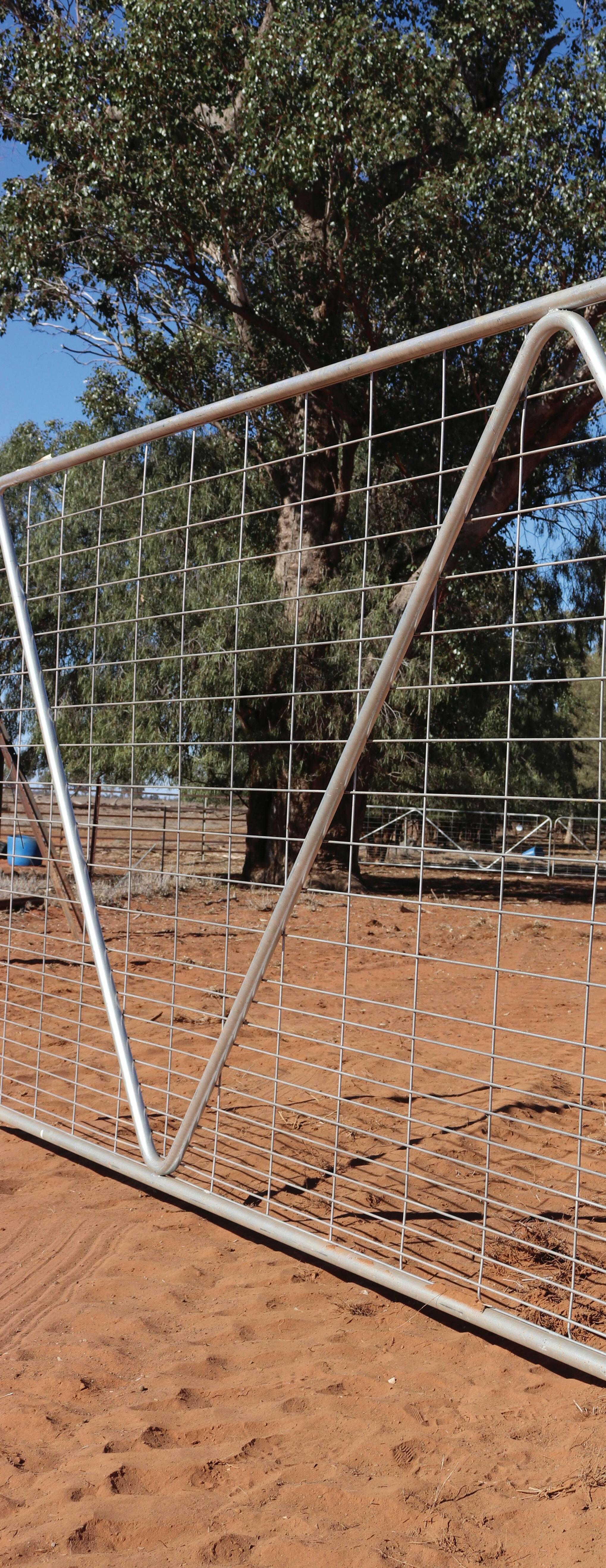
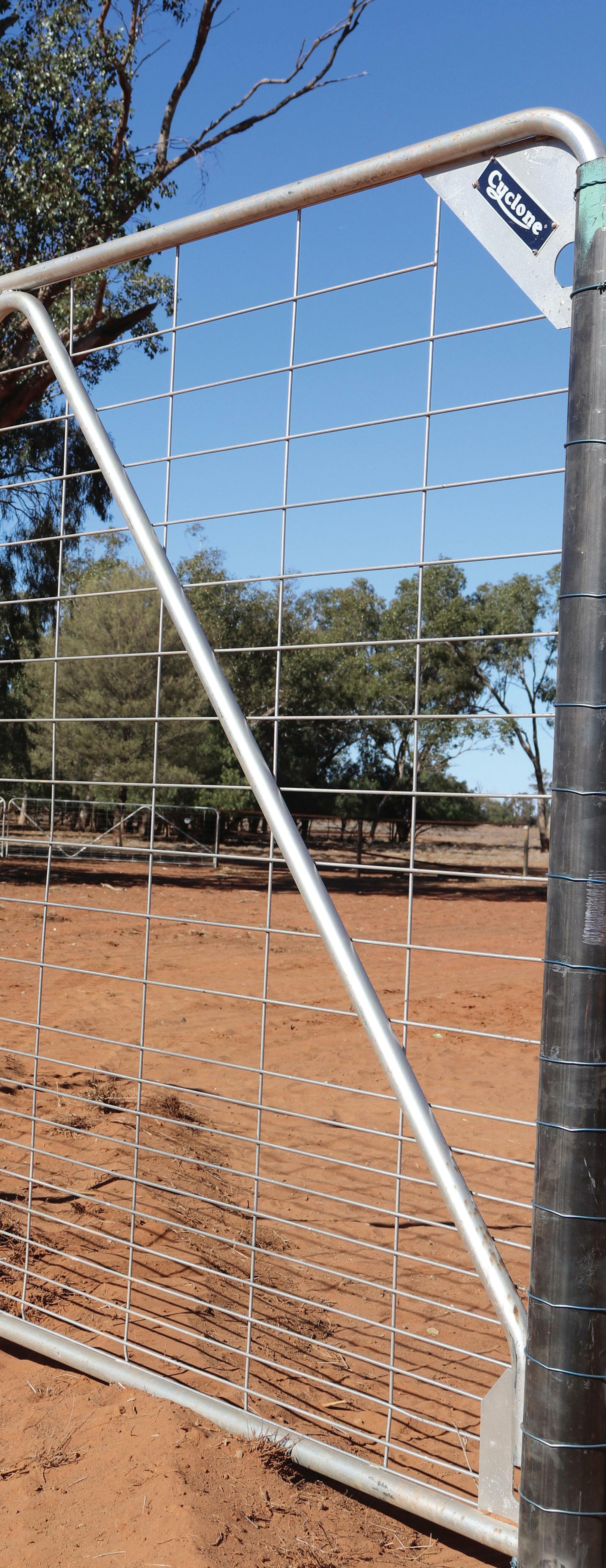


The gate you know and trust since 1898. N-Sure Exclusion gates Check them out in-store or visit cycloneproducts.com.au New
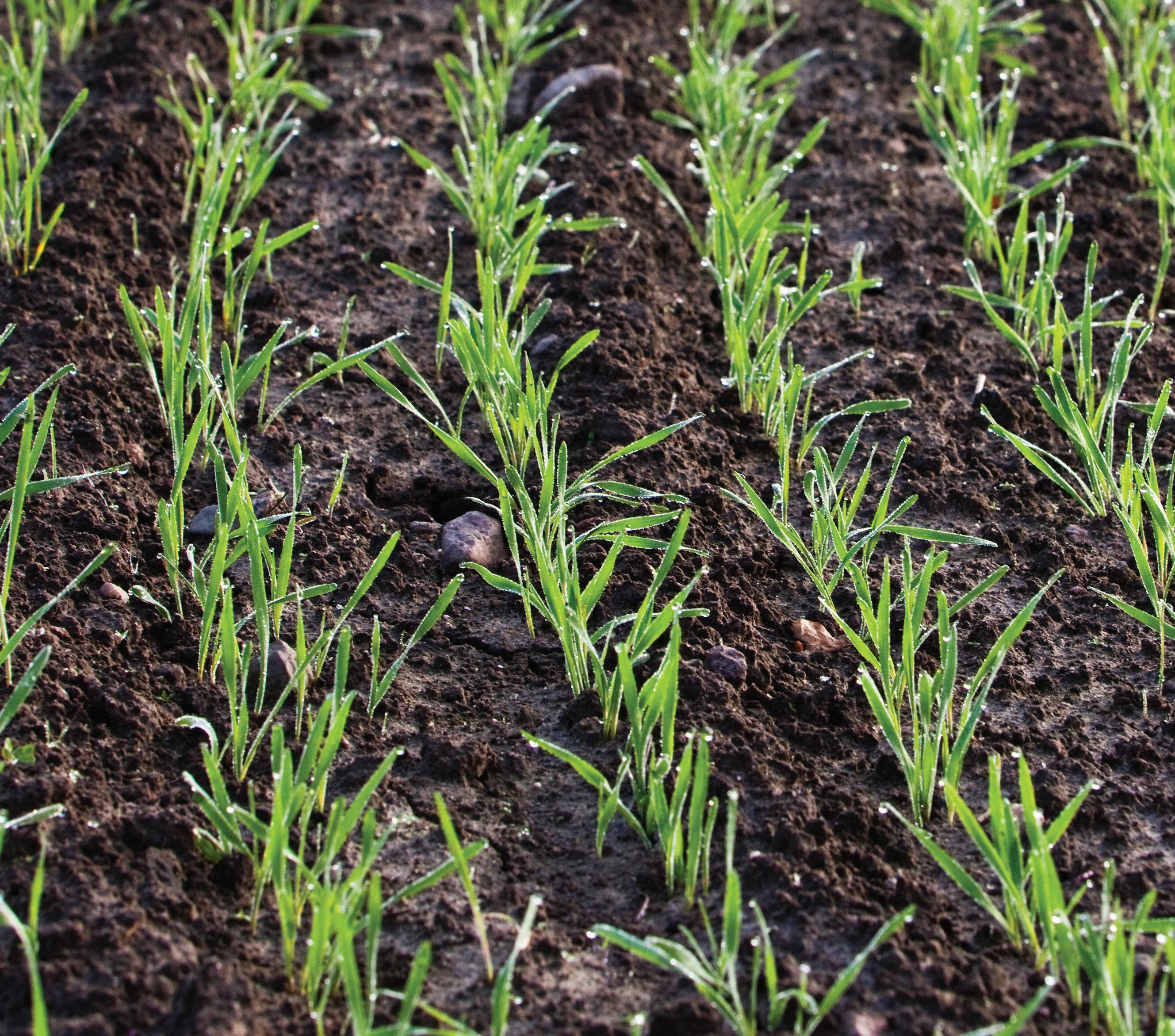

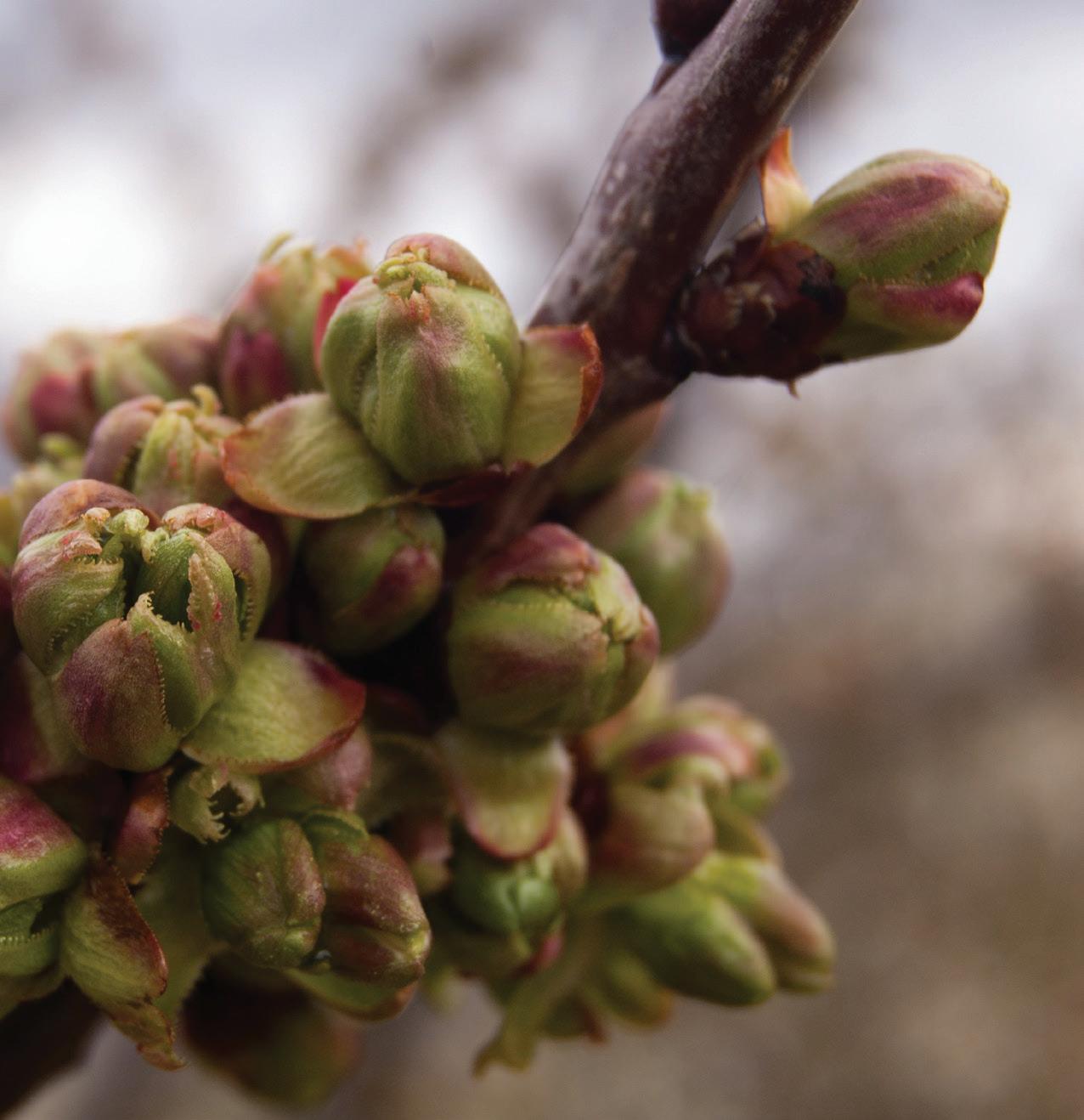



Find out today how Stoller Solutions can improve crop yield, quality and return on investment. Plant Available & Effective From Day One FREECALL 1800 337 845 info@stoller.com.au stoller.com.au
STOLLER SOLUTIONS ARE PLANT AVAILABLE & EFFECTIVE FROM DAY ONE
From day one your crops need nutrients that are plant-available and create a return on investment. Stoller Australia deliver a range of nutrient solutions that are designed to improve yield, quality, and profit even where stress events occur.

“We aim to help farmers across the country to get the most out of their crop’s genetic potential”, said Hugh Armstrong, Technical Manager, Stoller Australia.
One of the biggest factors limiting crop growth and yield in Australia is balanced nutrition. Plants only need small amounts of trace elements, but these elements have a huge influence on plant growth and productivity.
Trace elements are vital because they:
> Participate in the development of different enzymes and hormones.
> Improve fertility and cell extension therefore maximising yield potential.
> Promote healthy root growth and support major plant processes including photosynthesis.
> Help plants use macronutrients like nitrogen, phosphorus, potassium, magnesium and calcium more effectively.
> Development of leaf green and strength of cell membranes.
Although trace elements are in the soil, they can be unavailable to plants. Even if high levels of nitrogen are applied to the soil, it cannot be utilised without a good balance of trace elements.
Trace element deficiencies are often difficult to diagnose unless tested and often yield potential is already lost once symptoms appear in the crop.
From day one you need fertilisers that are plant-available and cost-effective. Stoller Australia deliver a full range of chelated trace elements that are made
using a specific process unique to Stoller.
Stoller Australia’s seed treatment products for winter crops include BioForge – a unique combination of key nutrients that can help:
> Crops emerge quicker.
> Improve early plant growth.
> Enhance root development.
> Easier nutrient uptake.
> Better stress tolerance.
BIO-FORGE SEED TREATMENT
Seed treatment with Stoller’s BioForge helps increase crop vigor and maximises yield potential. Healthy and more vigorous crops mean you can apply herbicides earlier to tackle those hard to kill weeds.
Stoller has conducted numerous trials on Stoller’s Bio-Forge, which works to support the plant through critical growth stages like emergence and during environmental stress situations.
“Bio-Forge continues to demonstrate that it can have an impact on yield across a variety of crops. This is really exciting as it has the ability to support the crop, even though times of stress.”
Farm Manager, Bruce Shaw, Harrismith Western Australia, uses Bio-Forge and the Stoller Solution Program for wheat; “…We find the addition of Stoller’s Solution program provides available nutrition close to the seed. This enables the crop to get what it needs from the start rather than six weeks down the track. We find the crops are healthier and more resistant to pests and develop larger, healthier roots with a more balanced plant architecture.”
Bio-Forge contains a specific ratio of a special type of nitrogen along with potassium and the critical components of both cobalt and molybdenum.
Producing favorable results across
tree and vine, field and greenhouse, and broadacre cropping, Bio-Forge is proving to reduce the effects of stress on a large range of crops.
Using Bio-Forge in conjunction with a nutritionally based program support your crop to achieve it’s potential, resulting in increased yield and profit.
A SUMMARY OF BIO-FORGE TRIAL RESULTS
Cereals (including wheat and Barley):
> 11 trials over 7 years
> Average yield increase of 10% (up to 23%)
> Bio-Forge Canola
> Canola seed treated with Bio-Forge produced a 4% increase in yield.
> The application of Bio-Forge led to a $3.8:1 return on investment.
> Bio-Forge seed treated canola showed an increase in plant biomass of 7%.
Bio-Forge on Cotton (St George QLD 2012):
> Bio-Forge applications resulted in up to 3.94 more bales per ha (40% yield increase). in conjunction with Stoller’s ClearStart22KZ.
> The application of Bio-Forge led to a $4:1 return on investment.
Bio-Forge on Sorghum:
> Bio-Forge when used as a seed treatment on sorghum crops generated a 5.2% increase in yield.
> The root systems showed better development than the grower’s standard program, supporting improved germination and establishment.
For more information on Stoller’s BioForge trials and rates of application, please contact your local Elders branch or Stoller Australia, info@stoller.com.au or FREECALL 1800 337 845.
67 Crop Health
FOR THE FARMERS AND THEIR COMMUNITIES

for Australian Agriculture eldersrural.com.au
















































































































































 Shearing day at Tralee
Sheep ready for shearing Elders selling centre
Shearing day at Tralee
Sheep ready for shearing Elders selling centre










































































